EXPO CELEBRATING ’74


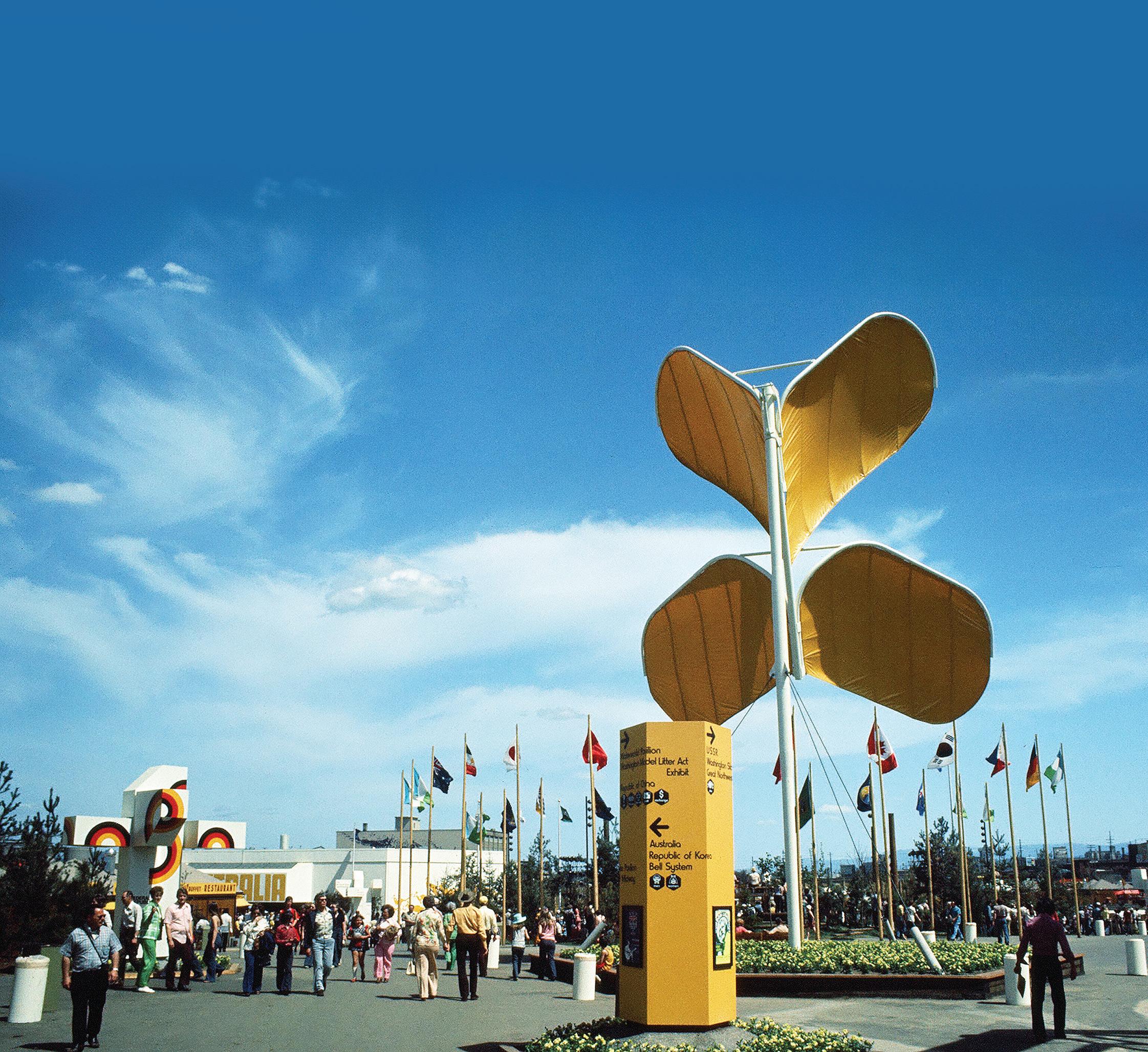













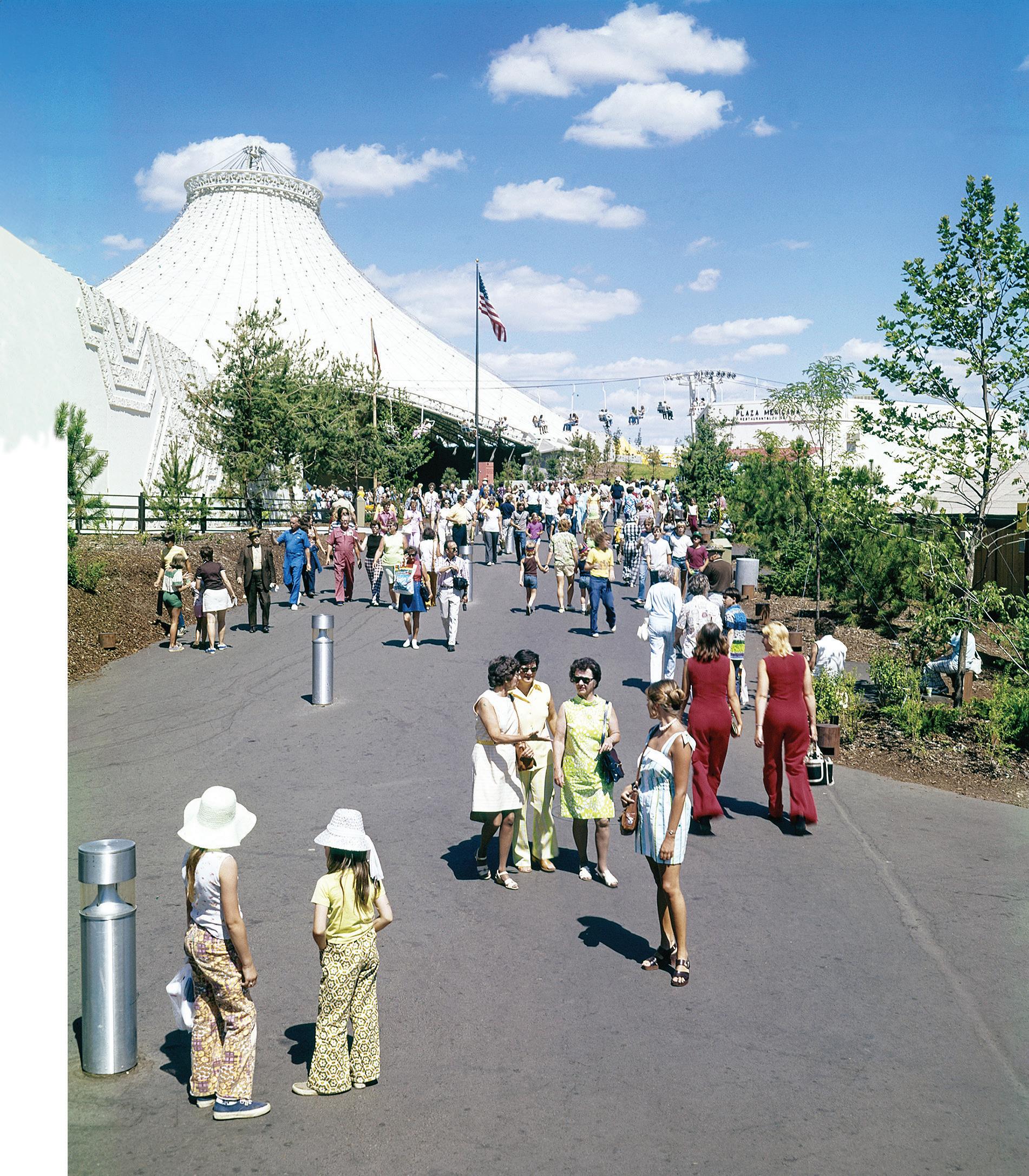 By Emma Epperly THE SPOKESMAN-REVIEW
By Emma Epperly THE SPOKESMAN-REVIEW
Anyone who has been to a Spokane-area yard sale or thrift store in the last 50 years has probably seen it. The ash trays, tea cups, buttons and trinket trays from Expo ‘ 74 are ubiquitous, said Darcy Caputo, owner of FinnBoy Records, Books & Curio.
But now as the anniversary of the World’s Fair, that changed the face of Spokane, is upon the Inland Northwest, merchandise related to the original celebration and this summer’s recognition of Expo’s impact has garnered new interest.
A new line of apparel (for both humans and stuffed animals), local treats, stickers, buttons and
other merchandise are available in the gift shop at Riverfront Park.
Vanessa Esparza, attractions and retail manager at the park, adjusted the hoodie on a stuffed moose one morning earlier this month as she prepared to open the shop.
The new array of merchandise has been popular, she said. The designs honor Expo ‘ 74 but with a modern twist.
“We definitely wanted to keep it more 2024,” she said.
A few designs by the Great PNW and local artist, Chris Bovey, hang throughout the shop, featuring icon’s of Spokane’s skyline that came with Expo. Even some of the shirts with















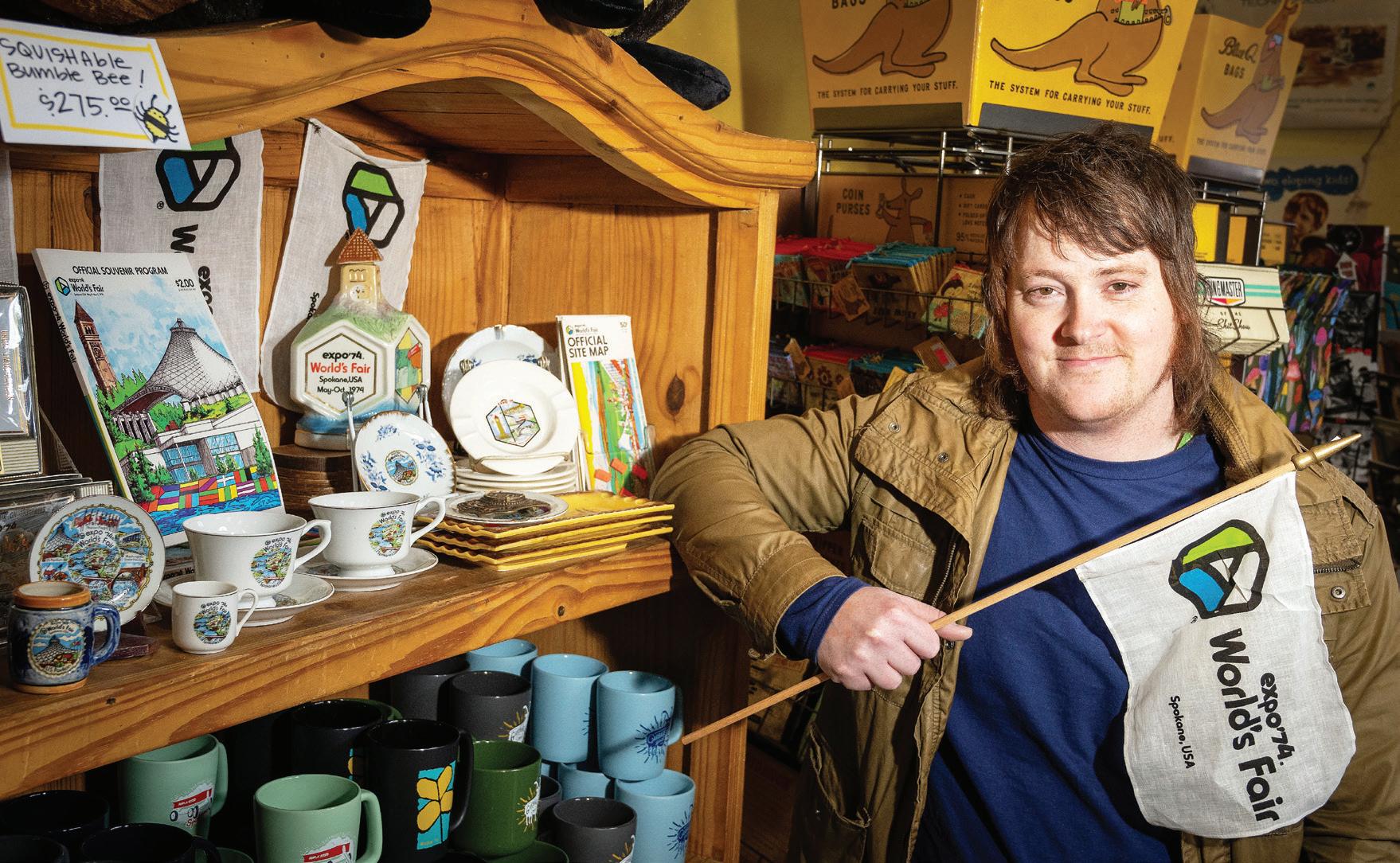


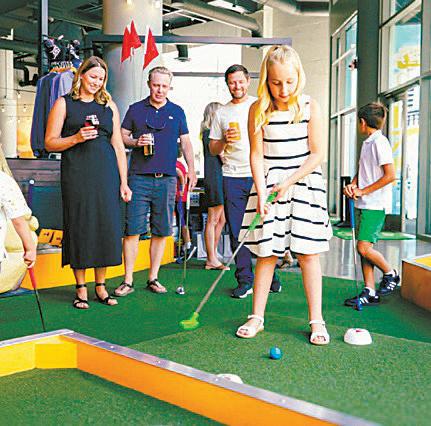
PARK AFTER OR LESS 5PM FOR $4 Play. Shop. Dine. COLLECTING EXPO AUSSIES REUNITE 50 YEARS LATER The contingent that ran the Australian Pavilion at Expo ’74 in Spokane came together in May in the Barossa Valley of Australia to celebrate Expo’s 50th anniversary. PAGE 10 THE WORLD’S FAIR: A TIMELINE From the grand opening to the Garbage Goat and from the Folklife to the butterflies, a comprehensive history of Expo ’74 from start to finish and beyond. PAGES 8-9 COLIN MULVANY/THE SPOKESMAN-REVIEW Josh Morrisey consigns his vintage Expo merchandise he finds at estate sales and online at Boo Radleys. EXPO ’74 SPECIAL SECTION SUNDAY, JUNE 16, 2024 Expo ’74 merchandise, new and old, popular for 50th anniversary Eric Grohe designed the towering, fluttering sculptures that marked the “regions” of the World’s Fair that would have such an impact on Spokane. Grohe went on to become an internationally known graphic artist, specializing in the design of murals and large public works. “It’s an extremely rare privilege to get your hands on such a project,” he said. PHOTOS BY THE SPOKESMAN-REVIEW See MERCHANDISE, 15
WHEN THE
WORLD CAME TO VISIT
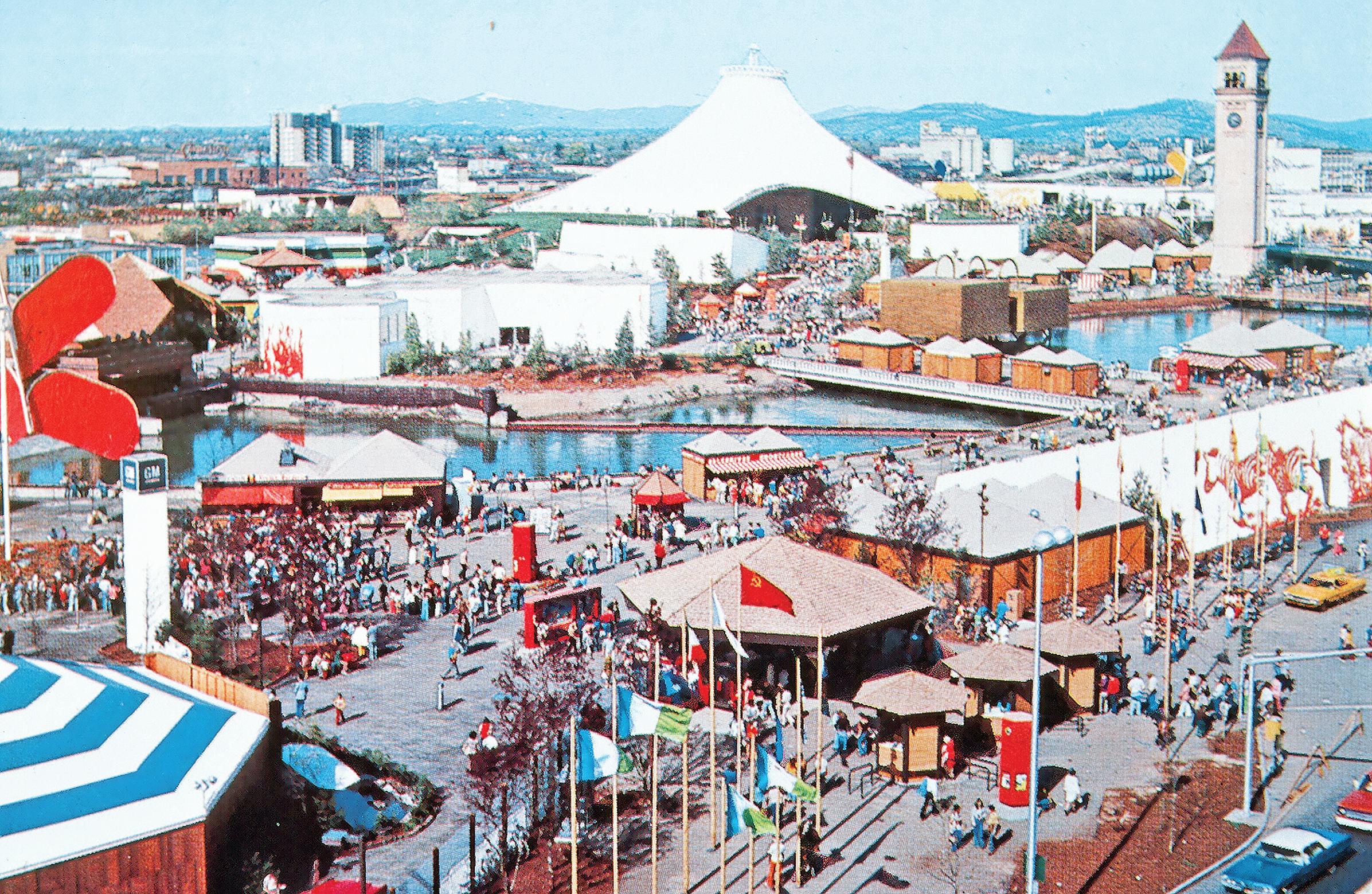 By Charles Apple THE SPOKESMAN-REVIEW
By Charles Apple THE SPOKESMAN-REVIEW
A half-century ago this summer, the Expo ’74 international exposition was held right here in Spokane.
Nearly all world’s fairs have had themes. The theme for Expo ’74 was: Celebrating Tomorrow’s Fresh New Environment. That seemed mighty appropriate given the eyesore that had been the Expo fairgrounds just a few years before: an enormous

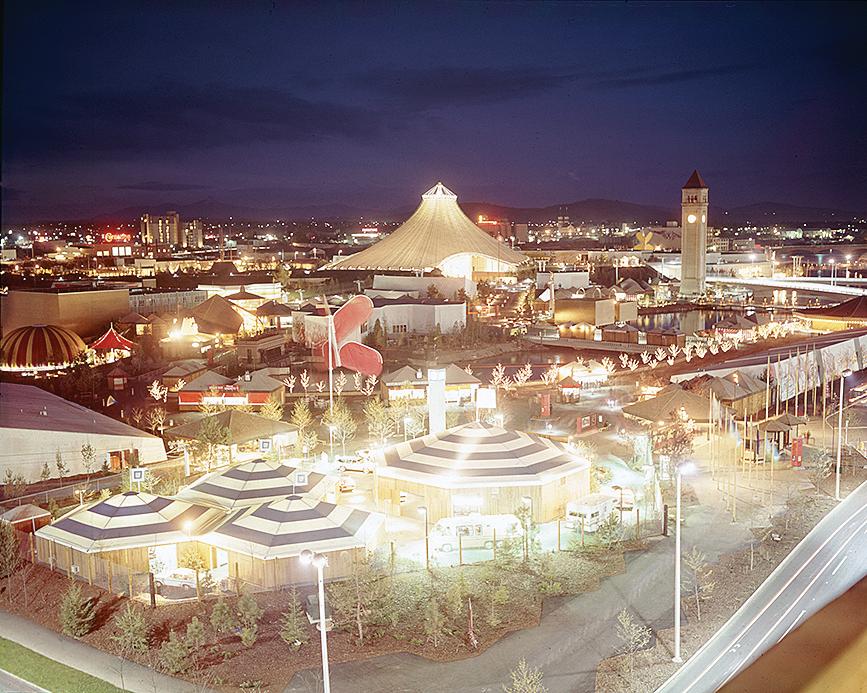
T2 • Sunday • June 16, 2024 Special SecTion Sources: Bureau Internatoinal des Expositions, Center for the Study of the Pacific Northwest, Eastern Washington University’s SpokaneHistorical.com, The Spokesman-Review files
168 YEARS OF WORLD FAIRS AND EXPOSITIONS ALL PHOTOS FROM THE SPOKESMAN-REVIEW FILES 1851 London The Great Exhibition Industry 25 6 million 1855 Paris Exhibition Universelle Agriculture, industry, art 27 5.2 million 1862 London International Exhibition Industry and art 39 6.1 million 1867 Paris Exposition Universelle Agriculture, industry, art 42 15 million 1873 Vienna, Austria/Hungary Weltausstellung Culture and education 35 7.26 million 1876 Philadelphia Centennial Exposition Arts, industry, mining 35 10 million 1878 Paris Exposition Universelle Technology 35 16.2 million 1880 Melbourne, Australia International Exhibition Agriculture, industry, art 33 1.3 million 1888 Barcelona, Spain Exposición Universal Fine and industrial arts 30 2.3 million 1889 Paris Exposition Universelle French evolution 35 32.3 million 1893 Chicago Columbian Exposition Discovery of America 19 27.5 million 1897 Brussels International Exhibition Modern Life 27 6 million 1900 Paris L’Exposition de Paris 19th Century 40 50.9 million 1904 St. Louis International Exposition Louisiana Purchase 60 19.7 million 1905 Liège, Belgium Universal Exposition Belgian Independence 35 7 million 1906 Milan Esposizione Internazionale Transportation 40 1910 Brussels Universal Exposition Agriculture, industry, art 26 13 million 1913 Ghent, Belgium Universal Exposition Peace, industry, art 24 9.5 million 1915 San Francisco Panama-Pacific Exposition The Panama Canal 30 18.9 million 1929 Barcelona, Spain Exposición Internacional Industry, art, sports 29 5.8 million 1933 Chicago A Century of Progress Industry, science 21 38.9 million 1935 Brussels, Belgium Exposition Universelle Transportation 35 20 million 1936 Stockholm ILIS Aviation 8 1937 Paris Exposition Internationale Technology, art 45 31 million 1938 Helsinki International Exposition Aviation 25 1939 New York World’s Fair World of tomorrow 54 1939 Liège, Belgium Exposition Internationale The art of water 8 1947 Paris International Exhibition Urbanism, housing 14 1949 Stockholm World Sport Exhibition Sports 14 1949 Lyon, France Special Exhibition Rural living 1949 Port-au-Prince, Haiti Exposition Internationale Peace festival 15 250,000 1951 Lille, France International exhibition Textiles 22 1.5 million 1953 Rome EA 53 Agriculture 1.7 million 1953 Jerusalem International Exhibition Conquest of the desert 13 600,000 1954 Naples, Italy International Exhibition Navigation 25 1955 Turin, Italy International Expo of Sport Sports 11 120,000 1955 Helsingborg, Sweden Helsingborg Exposition Environment 10 1956 Beit Dagan, Israel Exhibition of Citriculture Citrus agriculture 1957 West Berlin Interbau Building and construction 13 1 million 1958 Brussels World’s Fair Humanism 39 41.5 million 1961 Turin, Italy Expo ’61 Technology and labor 19 5 million 1962 Seattle Century 21 Exposition Man in the space age 49 9 million 1965 Munich IVA 65 Transportation 31 2.5 million 1967 Montreal Expo ’67 Man and his world 62 50.3 million 1968 San Antonio HemisFair ’68 Civilization in the Americas 23 6.4 million 1970 Osaka, Japan Expo ’70 Progress and harmony 78 64.2 million 1971 Budapest, Hungary Expo ’71 Hunting 35 1.9 million 1974 Spokane Expo ’74 Environment 10 5.6 million 1975 Okinawa, Japan Expo ’75 The sea 35 3.49 million 1981 Plovdiv, Bulgaria Expo ’81 Hunting 70 1982 Knoxville, Tenn. World’s Fair Energy 16 11.1 million 1984 New Orleans World’s Fair Fresh water 15 7.34 million 1985 Tsukuba, Japan World’s Fair Building technology 48 20.3 million 1985 Plovdiv, Bulgaria Expo ’85 Inventions 54 1 million 1986 Vancouver, Canada Expo ’86 Communications, transportation 55 22.1 million 1988 Brisbane, Australia Expo ’88 Modern-day leisure 36 18.6 million 1991 Plovdiv, Bulgaria Expo ’91 Young people 9 1992 Seville, Spain Expo ’92 The age of discovery 112 41.8 million 1992 Genoa, Italy Expo Colombo ’92 Christopher Columbus 54 1.7 million 1993 Daejeon, South Korea Expo ’93 Environment and progress 141 14.5 million 1998 Lisbon, Portugal Expo ’98 The oceans 143 10.1 million 2000 Hanover, Germany Expo 2000 Man, nature, technology 174 18.1 million 2005 Aichi, Japan Expo 2005 Nature 121 22 million 2008 Zaragoza, Spain Expo 2008 Water 108 5.65 million 2010 Shanghai Expo 2010 Urban technology 246 73.1 million 2012 Yeosu, South Korea Expo 2012 The ocean and the coast 103 8.2 million 2015 Milan, Italy Expo 2015 Feeding the world 145 21.5 million 2017 Astana, Kazakhstan Expo 2017 Energy of the future 137 3.98 million 2021-22 Dubai, UAE Expo 2020 Creating the future 192 25 million 2025 Osaka, Japan Expo 2025 Designing future society 2027 Belgrade, Serbia Expo 2027 Healthy people, healthy planet THEME NAME OR TYPE CITY NATIONS EXHIBITING ATTENDANCE The revitalization of Spokane’s rivers and waterfalls was a major topic of the fair. On June 5, 1974, the United Nations dished praise on the area on the first World Environment Day. Once the fair was over, the grounds were converted into the Riverfront Park we know and love today. The U.S. Pavilion — or, at least, it’s basic structure — is still here, too. As is the state of Washington Pavilion. You know it today as the First Interstate Center for the Arts. The site of the Canadian Pavilion is known today as Canada Island. The Women’s Council of Realtors sponsored a trash can in the form of an iron goat, sculpted by Sister Paula Turnbull of Fort Wright College. A recording would ask for your garbage. The goat would then suck Canada used its exhibit to focus on the beauty of nature. West Germany showcased how technology impacts the environment. The giant U.S. Pavilion included a courtyard of green grass and a vinyl-and-steel tent-like structure where guests were Not everybody was totally on board with the Expo’s environmental theme. The Mormon Church pavilion, for example, put its focus on “moral pollution.” And Ford featured its recreational vehicles — not = Event held in North America
Audacious plan that transformed city of Spokane often seemed destined for failure, until it wasn’t
By Jim Kershner
CORRESPONDENT AND HISTORYLINK.ORG
This overview of Expo ’74 was written by Spokesman-Review chief correspondent Jim Kershner in his other role, as a staff historian at HistoryLink.org, the free online encyclopedia of Washington state history. This piece ran in The Spokesman-Review in December 2023. It is reprinted with a few updates and HistoryLink’s permission, through a Creative Commons license, including citations showing the sources of information.
In the middle of the 20th century, Spokane desperately needed to solve two daunting urban problems.
First, a set of railroad tracks bisected the heart of the city, creating constant traffic jams.
“As long as you have a train running right through the middle of downtown, stopping traffic, you are pretty much a small town, hick outfit,” said Neal Fosseen, Spokane’s mayor in the 1960s (Youngs, 162).
“Trains and automobiles were all mixed up,” said King Cole, the fair’s president. “Those trains would be moving freight and you would get your car down on Howard Street at one of those train crossings. And you’d see the end of the train coming, coming, coming, coming and just as you’re ready to cross –load her up and get going – the whole thing stops and goes backward again. This is how it was. It was silly that this was happening in this day and age, but it was happening every day, all the time” (Youngs, 162).
These tracks were sometimes stacked high on ugly steel viaducts, which created the second, related problem. The tracks and the big depots that served them


“ am I crazy to think about something like this for little Spokane?”
effectively cut downtown Spokane off from its most spectacular natural asset: the rushing Spokane River and its white-foaming Spokane Falls. Spokane people jokingly called the railroad trestles the “Chinese Wall,” alluding to the Great Wall of China (Youngs, 107).
Spokane and its falls
The falls had originally been Spokane’s main attraction. The Spokane Indians established salmon camps at its base, and the earliest settlers were attracted to its majesty and water power. In 1908, the famous Olmsted Brothers Landscape Architecture firm devised a plan for Spokane’s parks in which they noted that the falls were “a tremendous feature of the landscape, and one which is rarer in a large city than river, lake, bay or mountain” (Olmsted). They noted sardonically that the area around the falls had already been “partially ‘improved,’ as one might ironically say,” but they expressed doubt about whether anybody could be proud of these “improvements,” which consisted of tracks, rail yards and warehouses (Olmsted). They predicted that one day the city would come to its senses and reclaim the area for a park. That day was about to arrive.
In 1959, a group of downtown business and property owners started a group called Spokane Unlimited,
King Cole
In conversation with Joe Gandy, head of Seattle’s World’s Fair in 1962
with the goal of revitalizing the city’s downtown. In addition to the railroad tangle, Spokane’s downtown was facing other problems seen by cities across the nation in the 1950s. Stores were moving out to malls, and people were moving out to the suburbs. The city’s big downtown interests – notably Washington Water Power, the big downtown banks, and the Cowles Publishing Co., which owned the two daily newspapers – helped Spokane Unlimited raise enough money to commission an urban renewal plan from EBASCO Services Inc., a New York consulting firm.
EBASCO’s 1961 report called for, among other things, removing the “Chinese Wall” of trestles and opening up the Spokane River and its midstream Havermale Island “as integral parts of downtown” (Youngs, 118). The report advocated “recapturing the beauty and attractiveness of the central business district’s natural setting” (Youngs, 118). According to The Fair and The Falls, J. William T. Youngs’s indispensable history of Expo ’74, many Spokane residents had, astonishingly, “forgotten the river was there” (Youngs, 118). EBASCO suggested accomplishing the work in five-year increments, ending in 1980.
King Cole and his vision How did EBASCO propose to accomplish this?
Not through a world’s fair, a concept far beyond anyone’s imagination in 1961. Instead, the firm recommended passing general obligation bonds, a gas-tax increase, and acquiring federal urban renewal money. All of these proved to be difficult propositions.
Spokane voters soundly defeated two bond issues in 1962 and 1963. The leaders of Spokane Unlimited scrambled for a new direction, and in 1963 they decided to hire a professional executive with urban renewal and planning experience, King Cole. Cole had worked on urban renewal projects in the California cities of Sacramento and San Leandro, and his goal in Spokane was to, somehow, turn the EBASCO plan into reality. He threw himself into the role with characteristic perseverance.
Cole recognized that Spokane’s voters were unwilling to be dictated to by downtown moneyed interests. So he began by creating a citizen’s group, Associations for a Better Community (ABC), as a grass-roots partner to Spokane Unlimited. As the 1960s progressed, the community began to coalesce around the idea of riverfront beautification in general, and, specifically, turning the railroad-choked Havermale Island into open, public space.
Yet the obstacles were daunting.
The property was “controlled by 16 different own-
ers” (Official Program, 15). The biggest owners were, of course, the railroads. When the railroads were first approached about handing over their land to the city, one railroad executive was shocked to realize that the city was, in essence, asking for the equivalent of an $18 million donation (Youngs, 163). The chief executive officer of the Milwaukee Road said, “If I gave away that much valuable property, it would probably be my last act as CEO” (Rodgers, 31).
In the meantime, Spokane had been thinking about holding a big celebration to commemorate the centennial of its founding in 1873. Maybe, they reasoned, that celebration could finance the riverfront restoration.
In 1970, Spokane Unlimited commissioned a feasibility study from Economics Research Associates of California. The report was sobering. It said the city would be throwing away money if it spent it on a strictly local centennial. The city might spend as much as $1 million, and end up with no downtown improvements to show for it. If Spokane really wanted to make lasting improvements, it must set its sights much higher, the report said. It should think about an international exposition. That way, the city could get federal and state dollars, attract visitors from all over the world, and end up with a completely transformed riverfront.
A real, honest-toGod World’s Fair
A member of Spokane Unlimited’s five-person executive committee recalled listening to an Economics Research Associates speaker as he broached the idea. The five men looked at each other, and one of them finally said, “Well, it looks to me like what we’ve got to do is have an Expo” (Young, 172).
Actually, this audacious idea was already at the back of King Cole’s mind, after a conversation he had with Joe Gandy, who headed up Seattle’s Century 21 World’s Fair in 1962.
“Am I crazy to think about something like this for little Spokane?” Cole asked Gandy (Youngs, 69).
“No, you’re not, you’re right on target,” Gandy said. “Little old Spokane is just about where Seattle was, relatively speaking, back in the ’50s when we started thinking about a world’s fair – and we pulled it off” (Youngs, 170).
Spokane Unlimited immediately became excited about the idea of a “real, honest-to-God world’s fair” with a timely theme: the environment (Youngs, 172). Not only was the environment a hip and progressive topic, but it also seemed an ideal theme for a fair with a spectacular waterfall running through its middle. Yet the leaders had to make certain that the idea was practical. No city as small as Spokane –which had a population of about 170,000 – had hosted a world’s fair. They commissioned Economics Research Associates to make discreet inquiries to the Bureau of International Expositions in Paris, which governed such events. The bureau’s
See HISTORY, 13


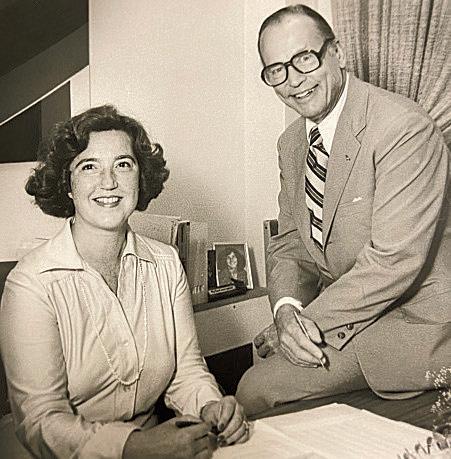


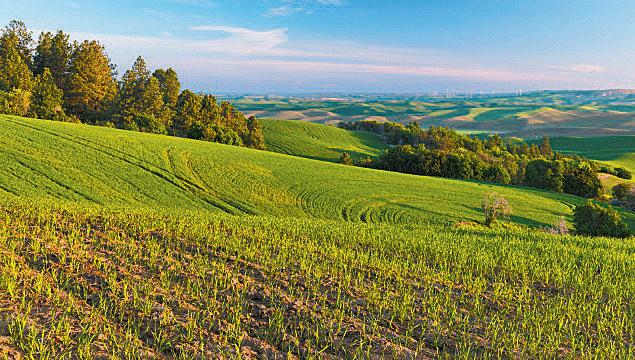
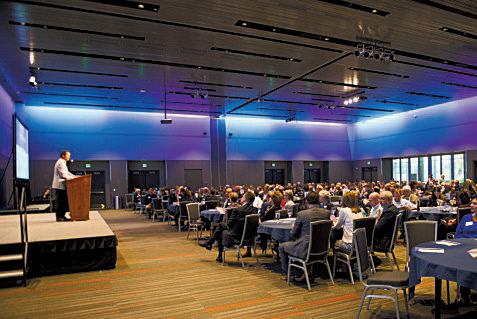
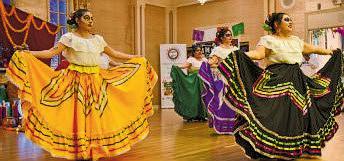
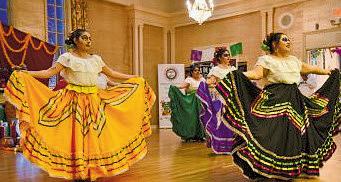


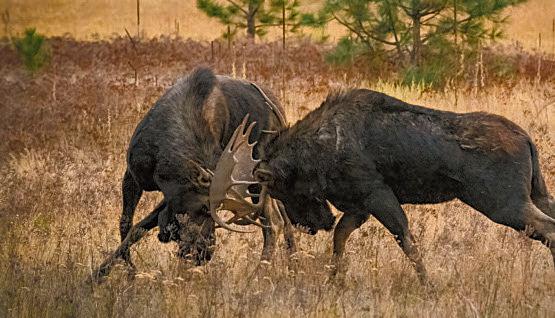
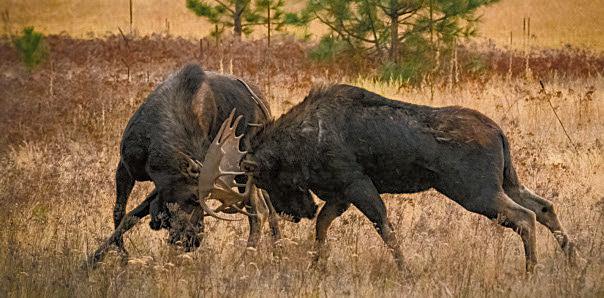
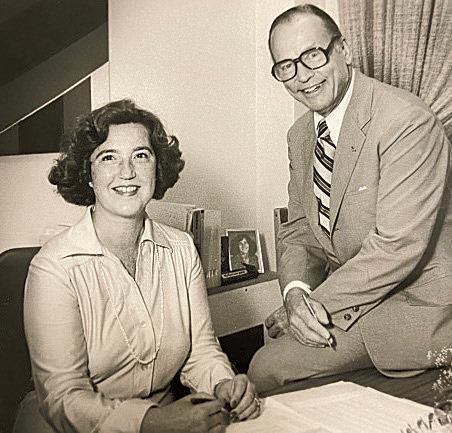


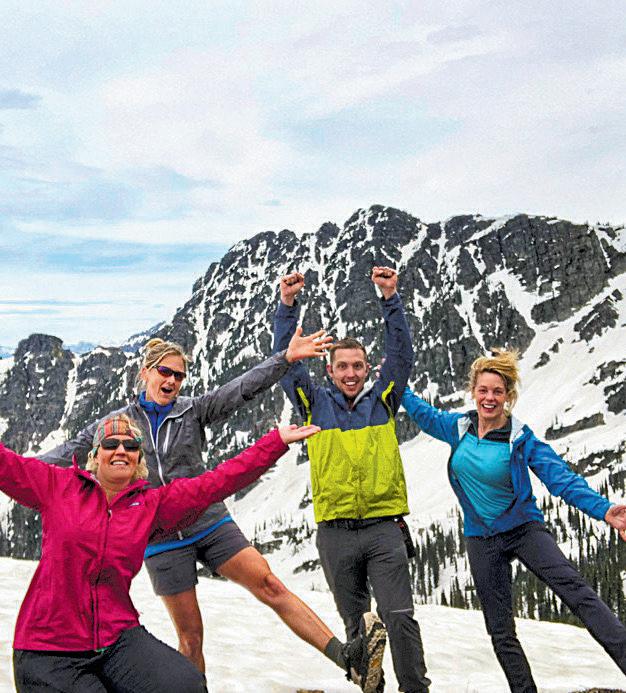
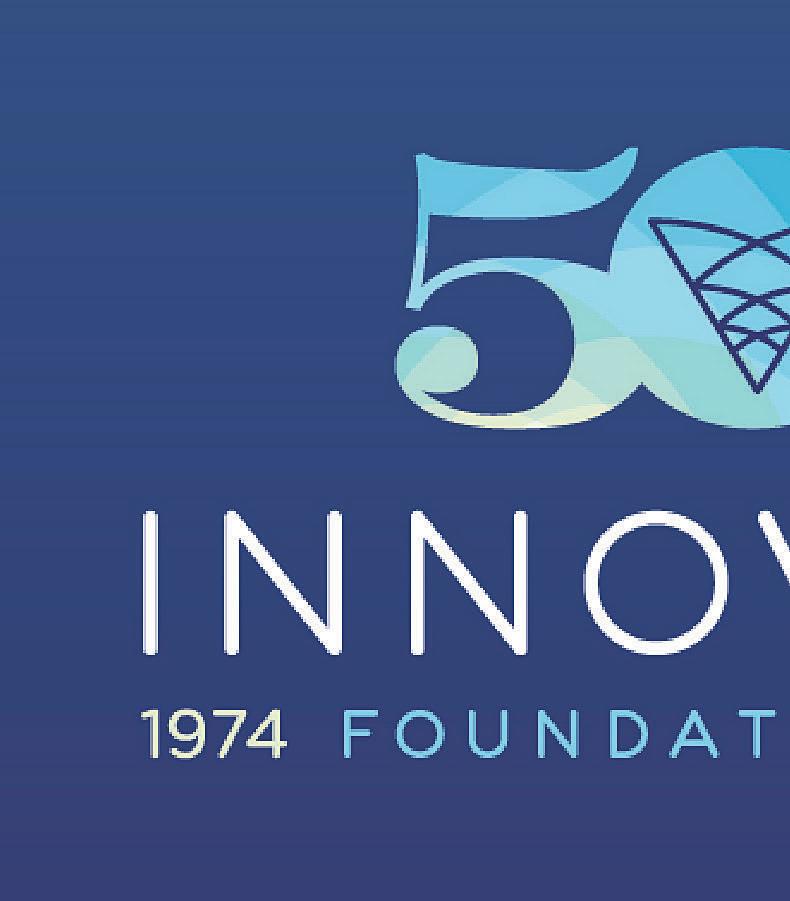
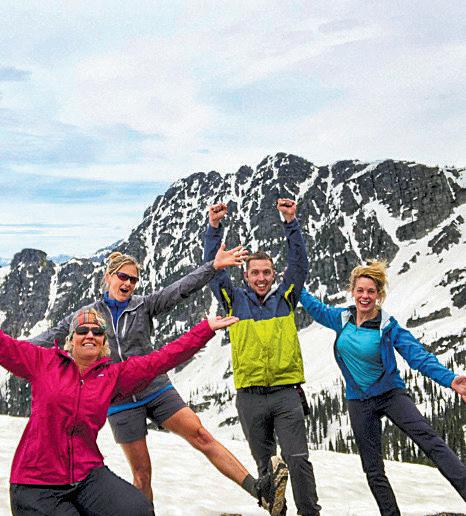
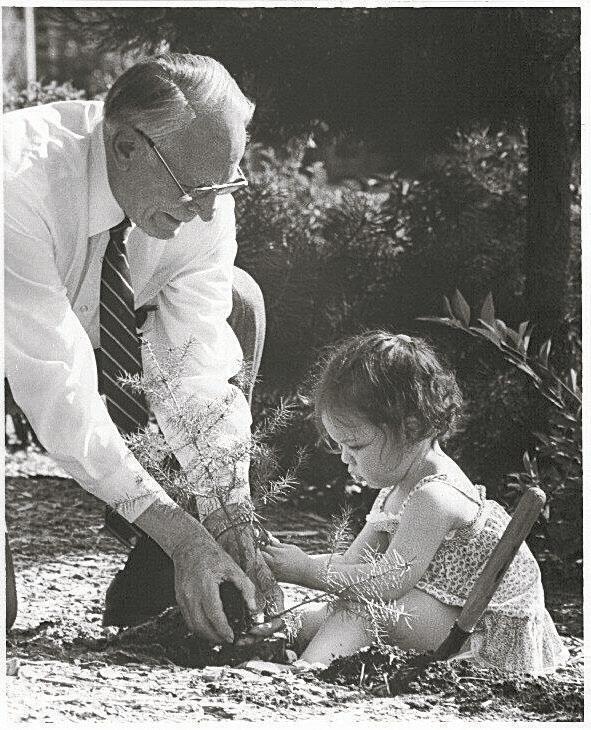
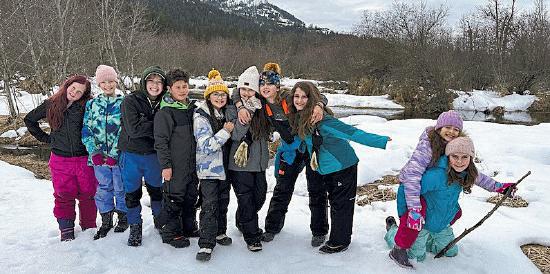
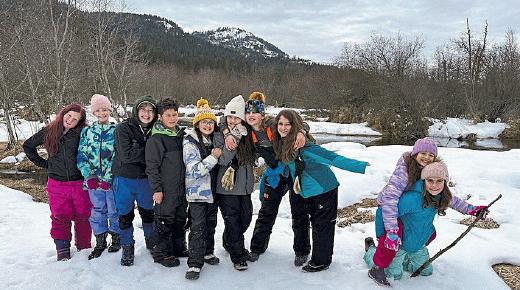
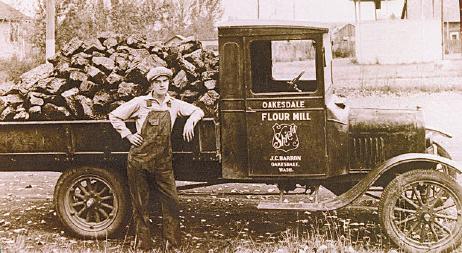

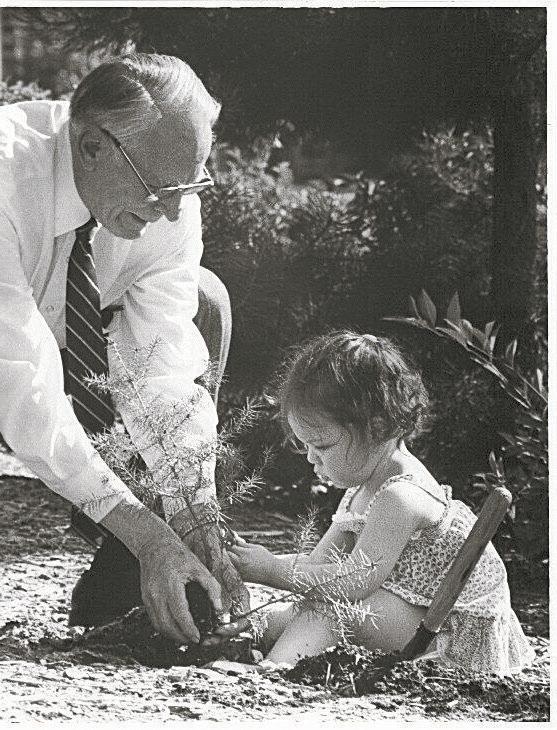
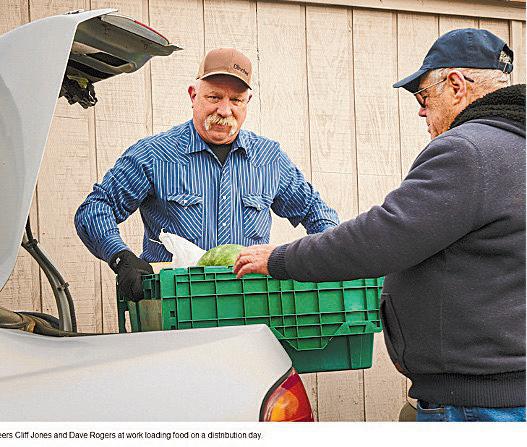

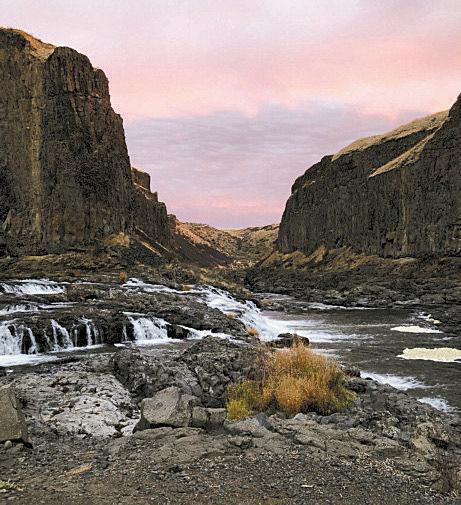

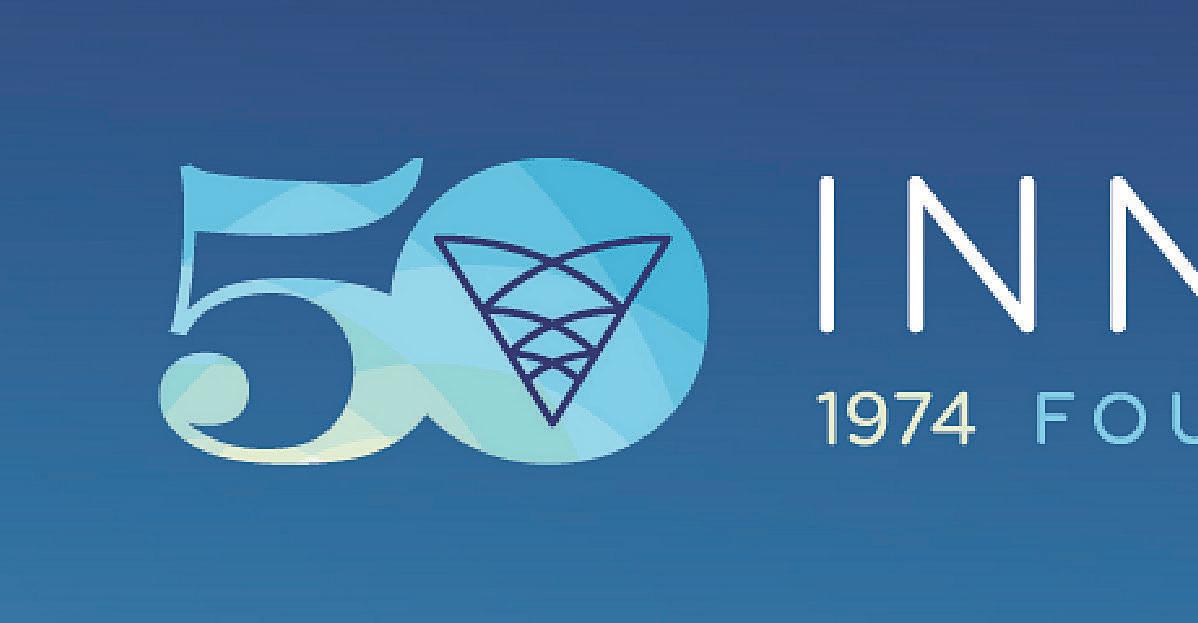



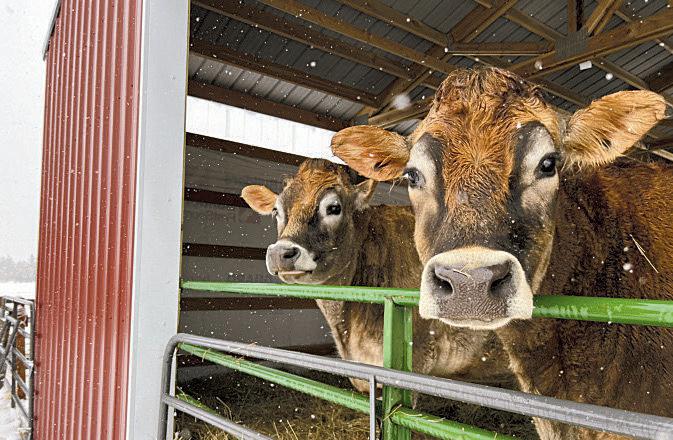


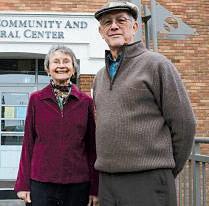

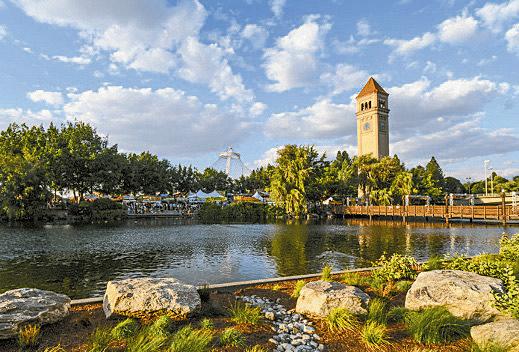

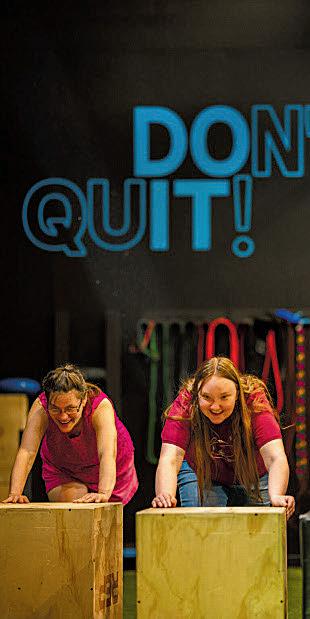
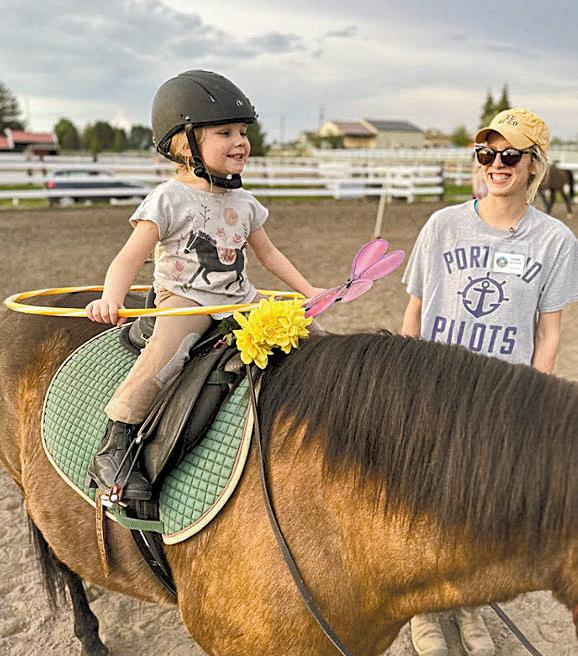


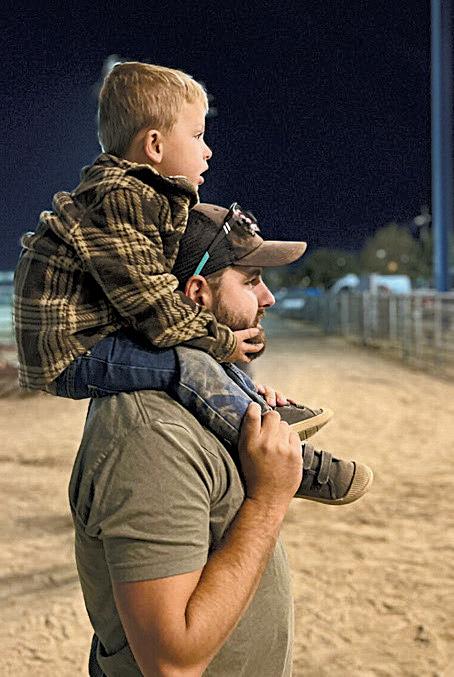

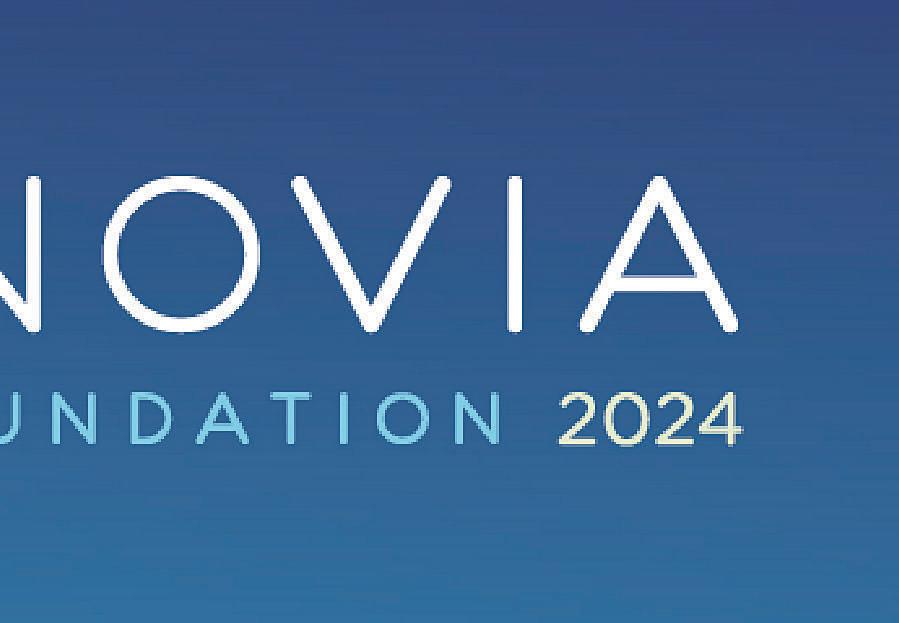









June 16, 2024 • Sunday • T3 Special SecTion Awarded in regional grants and scholarships since 1974 Serving communities in Eastern Washington and North Idaho CELEBRATE WITH US! | INNOVIA.ORG/FIFTY | 509-624-2606 eXPO ’74 50TH annIVeRSaRy
Readers reflect on World’s Fair 50 years ago
In early May, The Spokesman-Review made a call for readers to submit their favorite Expo ‘74 memories. They delivered. Some wrote of streakers and shaking hands with the president, while others spoke of singing in a 1,000-member choir and driving VIP guests around on golf carts. Here are some of their highlights.
‘A Christmas test,’ by Petr Spurney, executive director of Expo ‘74
As the implementation plan for the World’s Fair progressed on schedule, Tommy Walker, our Entertainment/Consultant-Director approached me with a major concern regarding the Opening Day Ceremonies. It was vital that we produce a world class extravaganza that would ensure presidential participation with the resulting stamp of approval and front page press coverage in newspapers and on TVs around the world.
So far, all we knew was that the White House had penciled in the first lady, Pat Nixon’s attendance. This would not result in our desired result. We had produced presidential events in the past and knew what was required. A very professionally produced and directed event with recognized talent, military music and tradition, large choirs, presidential sound and many, many, many special effects. Simply stated, we did not know if Spokane had the resources and volunteers to staff a world class event.
It was standard procedure that two or three times a week our top management team would meet, after working hours, in the conference room adjacent to my office, and charrette (brainstorm) major issues and finalize decisions. There was no office space available when we arrived, so the YMCA Chapel was converted into a management suite. We knew the “really big show” we envisioned would require thousands of participants plus the entire Expo staff. (The final Pageantry Manual lists 1,890 participants not including staff.)
The show script called for a tree within a tree, created from a very tall pole, with cables radiating from the top to the base to form two triangle shapes. The cables would be strung with aluminum cans collected by school children, painted in florescent colors, reflected by spotlights projected from below. After the event, the cans would be recycled.
Tommy had the tree professionally designed by architects/engineers, and we contacted the timber companies for a pole. A 120-footplus, the tallest in the Northwest at that time, was located, and three flatbed cars were used to transport it to the fair site. School administrators were called and signed on, and high school students were mobilized to collect, paint and string as ornaments 40,000 aluminum cans. Soft drink bottler’s trucks were utilized to transfer the cans to the fair site. Very importantly, the churches were contacted to mobilize Spokane’s choirs and church bells to be rung during the ceremony. A high school band was also included. The event held on Dec. 20, 1973, was covered by The Spokesman-Review.
The night before was scheduled to test the tree and rehearse the script. Tommy called me in a panic and asked me to come quickly to the site. When I arrived, I saw a terribly, ugly lighted tepee-like structure that looked like something you would see on the corners of a used car lot. We huddled, and I said the wires are too tight. When we slackened them, low and behold a beautiful environmental Christmas tree appeared.
The next day all the components came together. The band played, the choirs, totaling 500 singers, marched down the hills to the fair site singing Christmas carols, which continued around the tree. Church bells rang, the tree was lit and all was right with the world. Attendance was small: 200 plus the participants, but that was not the objective. Unknown then, Spokane passed the test with flying colors.
Early in 1974, the White House sent the first lady’s advance team to Spokane. During our first meeting, I realized that one of the members went to high school with my wife Lois, and we were able to establish a close relationship. Tommy and I explained the presidential event we envisioned, with all the requirements not only met, but exceeded. We stressed that this ceremony was conceived as a one-of-a-kind spectacle, which would be well received even in the shadow of Watergate. A few weeks later, we received the president’s advance team and once again reviewed the ceremony in detail. As opening day got closer and closer, we got very nervous that we had not achieved our goal. Then one day an Army Communications unit arrived, unannounced and installed a “red phone” on my desk and one on my night stand next to my bed. My wife was very concerned that our three very
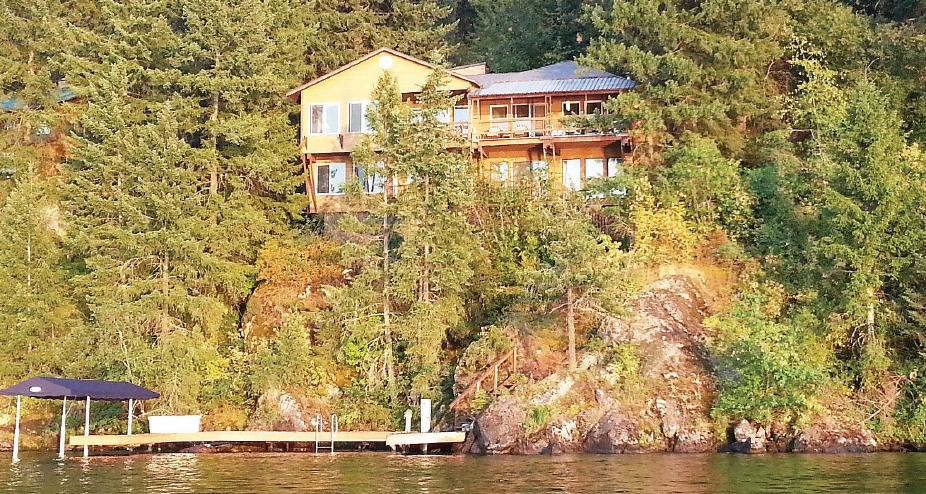
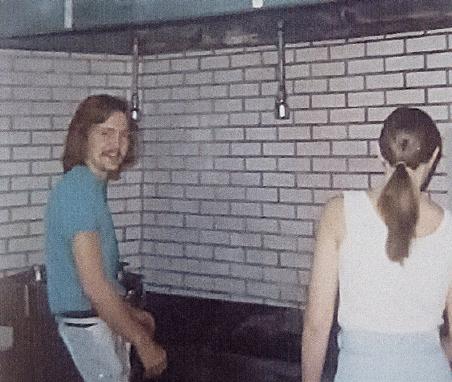
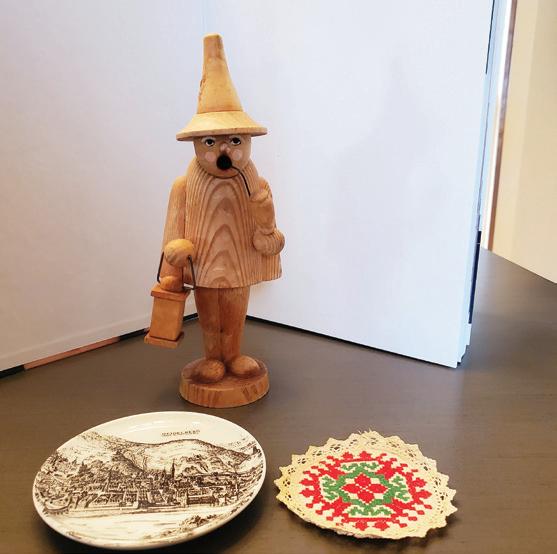
young boys would test the connection. When you picked it up the operator said “White House” and I knew President Nixon accompanied by the First Lady would open the Spokane World’s Fair. It would be the president’s last public appearance. After wheels up, the red phone rang on my desk, and it was Air Force One. The president had some comments and questions. This led to further communications both while he was in the White House and afterward in San Clemente. But that is a memory for another time.
‘The largest Expo ‘74 souvenir,’ by Mark Conlin Expo ‘74 was a wonderful success. It was then time for the transition into Riverfront Park in the spring of 1975. A group of buildings in the “Services” area were to be auctioned off. The March day was windy and rainy as I walked through each building. They were designed to be disassembled and removed from the Expo site.
I inspected the building designated as the U.S. Post Office. It was 24-by-24, and the ceiling was a beautiful tongue-and-groove vertical grain fir. The auctioneer accepted my bid for $250. With help from my bother, my cousin and many friends, we disassembled the building and hauled it up to Lake Pend Oreille, Idaho. We spent that spring and summer of 1975 putting it back together and framing the inside for use as a cabin.
Over the years, we build additions for bedrooms and a home office. My goal was to host six generations of my family to Expo ‘74 Post Office experience. In the summer of 2023, that goal was achieved when my grand niece brought her two boys to the cabin. The recycling of the Post Office building endorses the Expo ‘74 motto of “Celebrating Tomorrow’s Fresh New Environment.”
‘A different view’ by John M. Boline
I worked at the Fair in 1974. Fresh out of high school. Eighteen years old. The Waterfall Restaurant at the Lilac Gate. It was located at the Howard Street entrance. Across from us was the YMCA. Next or west of the “Y” was and is the Flour Mill. The location of the restaurant gave a beautiful view of the water hitting a basalt outcropping, then channeling off in two directions. People may remember (or maybe not) the “Hungarian” Restaurant. That’s what the waterfall morphed into. I wasn’t a cook and certainly not a chef, but I could grill steaks and salmon. Cook French fries. And put coleslaw on paper plates with the best of them. Once it changed over to the “Hungarian,” a real chef came over to train me on the new menu. Chicken paprikash goulash. It was all pretty good. But not to my grandma. A Swedish farm wife from South Dakota. She said, “That’s not goulash.” It wasn’t real goulash, because there was no elbow macaroni in it. Go figure. Authentic goulash was basic tomato/ beef-based stew. Oh well. My personal view of the Fair as a whole was, “What fair?” I never got to see any of it. The only exhibit I got to see was the inside of the USSR Pavilion Naquin Corp.’s office that was located there. That’s where I got paid. Yes. Rental offices were available in-



from the Public Safety Building
side the USSR Pavilion. Business is business after all. After seeing the Seattle Fair in 1962 at 7 years old, whose theme was the future, an Ecological-themed fair for an 18-year-old, long-haired, sleeping Gnomed teenager really didn’t do it for me. So I’d go to work at the Fair during the day and as the doorman at the Dishman Theater at night. The best of the Fair for me was the people I met. Tom Domini was one of these people. His sandwiches are pretty good. Dale Kleist of Fast Eddie’s and Onion Tavern was a co-worker and good friend. I met Dale in the seventh grade. And Chuck Grohs and his dad, Charles. Chuck was a high school (Ferris) pal who got us the job. His dad managed the Crescent Department Store restaurant and managed the eateries at the Fair for Naquin. There were many other schoolmates and friends who worked at the Fair for a summer job. A good many of them from Libby Jr. High and Ferris High. Also my future wife, Jill, who I didn’t meet at the Fair and met her a year later. What are the odds? That was the last and only job I’ve had in food service. Folks, if I may: Tip your server. Shoot, tip your cook, chef, host, bus person. It’s hard work, man.
‘Call it Expose ‘74,’ by Roger Gow Expo ‘74 was a wonderful time. It was a time when streaking was popular. Ray Stevens’ tune “The Streak” was No. 1. During May of ‘74, I was 13 years old, and there I was with a good friend. We witnessed a pair of streakers on Memorial Day weekend with a pair of police officers in pursuit. For me and many others, we were roaring in laughter. I did not see if the officers caught them. It sure was funny. They should rename Expo ‘74, Expose ‘74. That was our joke all the way through high school. Streaking was a fad I will never forget. That is the memory that stands out the most. Remember this: They called it the streak, the fastest thing on two feet. I also remember a guy trying to go over Spokane Falls in a barrel. He got caught in a spinning current. He never made his goal. Expo was quite a time for teenagers.
‘A gift from Germany,’ by Mary Dorsey
I have many good memories of Expo ‘74, but the one that stands out is Eastern Washington University sponsored a choir from Heidelberg, Germany, and requested volunteers to house the singers. Living in Cheney seemed like a great opportunity to do this. As it turned out, we were able to house three young men from Heidelberg for three days and what a great experience that turned out to be. They performed at Expo and also at EWU. We welcomed them with open arms and gained new friends from Germany. As a thank you for our hospitality, they each gave us a gift from Heidelberg which I treasure to this day.
‘A handshake to remember,’ by Michael Reiter
At the age of 21, I was one of 75 new hires to bolster the Spokane Police Department for the upcoming Expo ‘74. On opening day of Expo, with President Richard Nixon giving the opening speech, it was “all hands on deck” as every officer was on duty. Walking
after finishing my graveyard shift to the Expo grounds, I was given my assignment. The whole place was bustling with excitement, and I was looking forward to seeing the opening ceremonies and hearing the president give his speech. What a disappointment to find my assignment was to stand in one of the maze of hallways in the Washington Art Pavilion (now the Convention Center) throughout the entire opening ceremony! Standing at my post in the hallway, I was alone with the exception of the occasional Secret Service agent walking by. After what seemed like hours, I heard a group of people coming down the hall. The first were several Secret Service and security people. Then around the corner came Gov. Dan Evans and his wife, and the president with his wife. As they walked by me in the hall, President Nixon stopped, came over and shook my hand, and said, “It is an honor to meet one of Spokane’s finest.” I was pretty much at a loss for words, and they continued on down the hall and around the corner. That was my opening day experience.
‘Expo was a Roto Rooter Good Time,’ by Fred Valentine
My father bought me and other siblings season passes to Expo ‘74. I received the event pass before I turned 16 and thought it was the coolest ID.
The things I remember immediately with the mention of Expo ‘74 are two things.
One: The background music in the Russian Pavilion was the instrumental version of Golden Earrings’ song, “Radar Love.” Very soothing, but I felt there may have been a subliminal message attached. My friends and I survived and are doing well ... I think ... Two: With the numerous musical groups and entertainers scheduled to perform each night at Expo ‘74, I was compelled to attend as many performances as I could by the Roto Rooter Good Time Christmas Band! They were talented musicians, humorous and wonderfully entertaining. Many years later, I was fortunate enough to find an album by TRRGTCB in a Garland District shop. Now I can relive those Expo ‘74 memories listening to B-flat Baxter, Awfthe Walle, Little Orphane Ollie and the rest of the talented band as I enjoy the songs, “Martian March,” “On the Good Ship Lollipop,” “Pico & Sepulveda” and the rest of their creations.
Expo ‘74 was a magical time and created great long term improvements to Spokane.
‘Souvenirs to keep,’ by Scott Simpson I attended Gonzaga Law School from 1972 to 1975.
The summer of 1974, I worked at the downtown Spokane office of the Washington Department of Revenue. As luck would have it, I was assigned to go to Expo ‘74 nearly every day that summer to make sure all businesses on the Expo grounds were registered with the Department and were collecting and remitting their required taxes. Each morning, I would walk from the Department’s offices on Washington (the Hutton building) to Expo. Lots of times I would simply sit on a bench in the sun
and people-watch. Other times, I would visit the various pavilions. Of course, I did do what my “job” required, but there was a lot of down time.
One pavilion I frequently visited was the Philippine one. One reason for this was the very beautiful and friendly girls that worked there. In particular, there was one whose name now escapes me, but who enjoyed my visits even though we greatly struggled with each other’s language.
One day, I got up the nerve to see if we might see each other after the pavilion closed. We did meet and chatted as best we could on the Expo grounds, but she was required to return to where she was living with other Filipino girls working at the pavilion no later than 8 p.m. So much for that one and only “date.”
However, when Expo ‘74 closed, she asked me to come by and say goodbye and she gave me a very large collection of leftover Philippine souvenirs that were sold at the pavilion’s gift shop.
‘Host with the most memories,’ by Patrick LaFramboise
I was a host in the Guest Relations Department of Expo ‘74. As a host or hostess our role was to escort/guide the various dignitaries, performers and VIPs that came to the Fair around the Fair site.
It was huge fun for all of us. As one of 35 hosts/hostesses, each of us had experiences of a lifetime. I was fortunate enough to be assigned to take Gordon Lightfoot, Edward Villela, Roy Ash (director of the U.S. Office of Management and Budget), Charlie Pride, Hugh Hefner and his entourage, Olga Korbut’s group from the USSR, as well as several other very interesting folks.
During my time at the Fair, I also had the good fortune to get to know Expo VP’s Jack Geraghty and Paul Creighton, Assistant General Manager Chuck Aly, Operations Manager Ralph Sansone and a number of other great folks.
‘What a wonderful world,’ by Mary Mealey
My first memory of Expo was on May 3, 1974, when my Holy Names Academy Concert Choir walked from school to the brand new Opera House that had not been opened to the public yet. There we met up with a number of other area high school choirs to create the “1,000 Voice Choir” rehearsing together our part for the opening ceremonies the next day. And who was our director? None other than the legendary Danny Kaye! It got better the next day when we were placed on the bridge just off the main stage singing “What the World Needs Now is Love” for the president of the United States and the whole world. Pretty cool for this high school sophomore! Then all summer, I worked the counter at the White Elephant store, waiting on the vast array of people visiting Spokane for Expo. We even learned to say thank you in Russian (Spasibo) when workers from the Soviet Pavilion would come in. For some reason, during their time off, they especially loved shopping at the White Elephant. Between visiting Expo for fun, and working at the store, my Holy Names choir continued to perform outdoors on the Expo grounds for
T4 • Sunday • June 16, 2024 Special SecTion
COURTESY PHOTOS
Mark Conlin’s Lake Pend Oreille cabin, which is built from a U.S. Post Office building auctioned off for Expo ’74.
John Boline, left, stands at the grill at the “Hungarian” Restaurant at Expo ’74.
These gifts were given to Mary Dorsey for her efforts in sponsoring a choir from Heidelberg, Germany, during Expo ’74.
eXPO ’74 50TH annIVeRSaRy See MEMORIES, 5
Mary Mealey was part of the Holy Names Academy Concert Choir, which joined with a number of other high school choirs to create the “1,000 Voice Choir,” directed by Danny Kaye. Mealey and the choir went on to sing “What the World Needs Now Is Love” for President Richard Nixon.
A 1965 blue Beetle Volkswagon is filled to the brim with the children of Trudy Jones as they head from Chattaroy to downtown Spokane for Expo ’74.
Above: Petr Spurney, Expo ‘74’s general manager, shares this photo thanking him for his contributions to Spokane’s environmental Christmas tree event in 1973.
the entertainment of the many visitors. One of my favorite memories was one evening with our choir on the amphitheater stage under the stars. The audience was from all over the world, the weather was glorious, our river flowing nearby, while we sang Louis Armstrong’s classic, “What a Wonderful World.” It certainly was ...
‘The trip that never was,’ by Dennis DeMattia
In 1974, I lived in California and worked for a company there that had a couple of manufacturing plants around Spokane. I had traveled many times up here in the previous three years, so I was aware of the coming Expo. Expo opens, and all of a sudden nobody up here needed my help any more. Seems like everybody in the California office who was anybody found reasons for important conferences and meetings that just had to be done on site in Spokane. But I was not even the low man on that totem pole, I was more like a bug underneath that totem pole, so I had no pull.
I called everybody I had worked with in Spokane and asked them if there really wasn’t any work that needed to be done up here that would need my expert presence. I guess they were all tied up touring the corporate heavies around, so there wasn’t any time or money left for the humble technicians. There was no way I could get up here on my own nickel, since I was only a few years out of college, so I never got to see the festivities.
My wife, who has lived here all her life, constantly tells me of the lovely times she had there and can’t believe I missed it.
‘A blue Beetle full of kids,’ by Trudy Jones Expo was a delightful way to experience our great city as a family. When family and friends from out of town came to visit, we indulged in the local and international
exhibits, enjoying the entire park and the available food specialties. My personal favorite was the deep-fried carrots served at the Korean Pavilion. Oh how I hope to find these again during our 50th anniversary celebration. I have tried to recreate this delicacy at home, but only a near-close delight.
Our family’s greatest memory, though, is literally cramming Dad, Mom and our six children, ages 4 to 11 into our 1965 pasty blue Beetle Volkswagon Bug. We would drive from our home in Chattaroy and find our conveniently located parking place in the parking lot just north of the Purple Butterfly entrance. We could always fit that little Bug in where if in a larger car we would have had to park much farther away. Our adult children still laugh and talk about these happy times, sharing lifelong memories.
I still have a set of four tall Expo glasses, an ash tray, small pitchers, four mugs and other items.
‘Sharing cheese and fruit with Benny,’ by Charles W. Palmer
When we visited Expo ‘74, my wife and I decided to have lunch at the French restaurant. I wanted to try their escargot, but apparently they were out or didn’t have it on the menu, so I ordered the cheese and fruit plate.
Our waitress blurted out, “Oh, you are so lucky! Jack Benny is going to sit right next to you.” Sure enough, he came in with Mary Livingston and sat 8 feet away. Mr. Benny was served, and I noticed he ordered the same cheese and fruit plate that I did. My “plate” was a paper plate with two cheeses and three fruits ... he got five different cheeses and five different fruits ... on a huge ceramic platter! Eye roll No. 1.
As the meal progressed, I observed as a young boy, about 9 years old, went up to him and asked for his autograph. Mr. Benny said, “Sorry ... I’m busy right now,” and the boy, with a disappointed expression, went back to his seat. But then a young lady, who shall we say was “well-endowed” in a tight blouse went up to him,
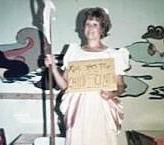
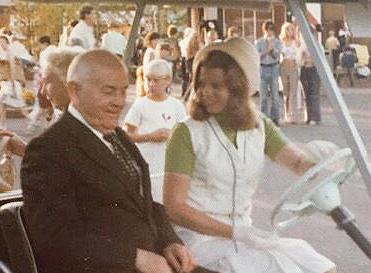
until summer finally rolled around.
In Folklife, I remember creating amazing crafts, including wooden puppets that danced when you bounced the stick, a mobile made out of yarn and twigs, and corn husk dolls (just to name a few). Additionally, we sampled and received the recipes for the most delicious items that were native to other countries. One of my favorites ... the Plum Danish.
bending low (he was seated) asked for an autograph. Mr. Benny said, “Why ... certainly, Miss!” Eye roll No. 2.
I only wish I had seen Mary Livingston’s expression, but, I admit, my attention was elsewhere.
‘Left our footprint on the world,’ by Ruth Wagar
I recall walking out of the committee meeting and an overwhelming feeling came over me. Could I really do this? I had just been asked by the Lutheran Council of Greater Spokane to be the director of the Child Care Center at the upcoming World’s Fair in Spokane in 1974. This was a huge undertaking that required much planning and preparation. Little did I know at the time, what an amazing experience it would be.
Our city had been preparing and making plans for years. The downtown area was being overhauled to accommodate the exhibits and people that would come to see them. At the Child Care Center, we were tasked with providing parents with physical care of the needs of their children so they could visit Expo ‘74. We operated seven days a week from 10 a.m. to 10 p.m., May 4 until Nov. 3 of that year. We welcomed children from ages 6 weeks to 8 years to participate in many activities and hear God’s word, all with an ecological focus that was the theme of the Fair. Overall, we had almost 10,000 attend our Child Care Center in the 26 weeks the World’s Fair was open. During this time, along with overseeing the facilities, I would dress up as Little Bo Peep and walk the park to advertise our services and
let everyone know we were available. It was a family affair, as my daughters both worked the fair and my husband and son helped almost daily moving and hauling items needed.
I know we had a great impact on the community. We helped many lost children and adults find their families, and even 20 years later, someone approached me at the mall to ask if I had been Little Bo Peep!
Although it was a lot of hard work, I only have fond memories of this time and I cannot believe 50 years have passed. I got to meet so many people from all over the world, even Liberace! The way people came together in our community was truly heartwarming. Working together with so many others and showing our love for the world is an experience I will never forget. God was right there along the way, guiding, leading and equipping me. I truly think we “left our footprint on the world,” and I was privileged and honored to be a part of it.
‘Folklife forged memories and slight jealousies,’ by Jessie (Kelsey) McLaughlin
I was 7 years old during Expo ‘74, and my special memories are centered around the time I spent in Folklife with my mother, Sharon Kelsey, and a dear family friend, Marilyn Keith. These high school friends found out about the opportunity to volunteer at Expo and were off on an adventure. Their area of service: Folklife. I wish I had been able to spend more time there with them, but alas, I was still in school

I’ll share two of my fondest memories (actually they are just memories that stuck, because I felt left out, but memories nonetheless). Marilyn’s children were roughly the same age as my younger sister and me.
The first story is of homemade ice cream. They made this on several occasions and they didn’t use the easy motorized ice cream makers that we have today in our homes. Nope ... it was good old hand-cranked deliciousness. The machine worked better, however, if you had weight on top of it, and I was always so jealous that Marilyn’s kids seemed to always get the chance to sit on top of the ice cream maker. Now, as I’ve gotten older, I’m not so sure why anyone would want to sit atop a cold bucket, but how I longed to do just that each time they made that vanilla ice cream! The second story was log rolling (burling) that took place in Folklife. I wanted to try it so badly but my mom always said, “You’ll get your clothes wet.” Sure enough, Marilyn’s daughter, Laurie, came back dripping wet one day after she got the chance to try it. I know that I would have ended up in the drink as well but what a memory I would have had.
Loved Expo, loved Folklife and love my mom!
‘Singing praises,’ by Tina Lassman
I was 13 years old when Expo ‘74 was going on. I had a sister who lived in Spokane and our family (from Tacoma) came to stay with her and we were able to attend Expo for several days.
My two older brothers and I were allowed to go off together and explore on our own. We saw every single pavilion there was, some of


them more than one time. I clearly remember the “Mormon” pavilion and was impressed by the things I learned. The missionaries came to my home some time after Expo, but were turned away by my mother. A good friend in high school, however, introduced me to the Church of Jesus Christ of Latter-day Saints during my senior year and I was baptized the day after my high school graduation. That was one of the best decisions I ever made! It has shaped and influenced my life and generations after that in a very meaningful way.
Singing is my passion and being in this choir singing the same songs that were sung during Expo was unforgettable. Singing in the Expo ‘74 memorial choir was an incredible experience and one that I will likely never forget!
‘Grasshopper guided guests,’ by Debbie Christensen Hansen
My job during Expo ‘74 was working as one of the VIP tour guides. The uniforms of the ladies doing this work consisted of white skirts and vests, white gloves and hats, with chartreuse shirts and tights. Sometimes we were referred to as “grasshoppers,” with good reason. We drove golf carts every day, escorting our guests to the back doors of the pavilions (so they wouldn’t need to wait in the sometimes long lines) and also to reserved seats in the front of each presentation area.
Depending upon how much time each guest was able to spend at the Fair, we drove them from pavilion to pavilion, carefully scheduling their day to attend as many exhibits as we were able to fit in. Some of my favorite visitors were Spencer W. Kimball, the president of the Church of Jesus Christ of Latter-Day Saints, and his wife Camilla. These kind, appreciative and unassuming people were a delight to spend a day with. I cherish my memories of Expo ‘74 and can’t think of a better job to have had right out of college than working at the Fair.

Dear Expo ‘74, Doug Toone established Jewelry Design Center in 1977, but the seeds of inspiration were sown in 1974. His journey took a fortunate turn when he received an offer for a booth at the esteemed World’s Fair (Expo ‘74). At that time, Doug was involved in crafting and repairing jewelry for a local trade shop. Armed with his workbench, tools, and a modest amount of materials, he meticulously carved and fashioned pieces from raw silver. Much to his delight, every piece he created sold on that day, which showcased his exceptional craftsmanship and his natural talent for building enduring relationships with his customers. This realization became the foundation for the establishment of Jewelry Design Center just three years later! Since then we have evolved from a modest back room office near North Town Mall to our current 17,000 square foot state-of-the-art facility in Spokane, with two additional 6,000 square foot locations in Kennewick and Missoula, MT.
As we remember and celebrate the anniversary of Expo ‘74, we express our gratitude for all you have brought us and taught us over the years. Here’s to the next 50 years of being your jeweler for life!
With highest gratitude,

Jewelry Design Center














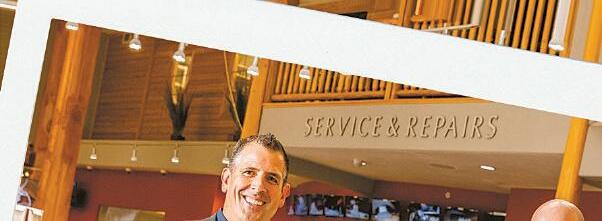









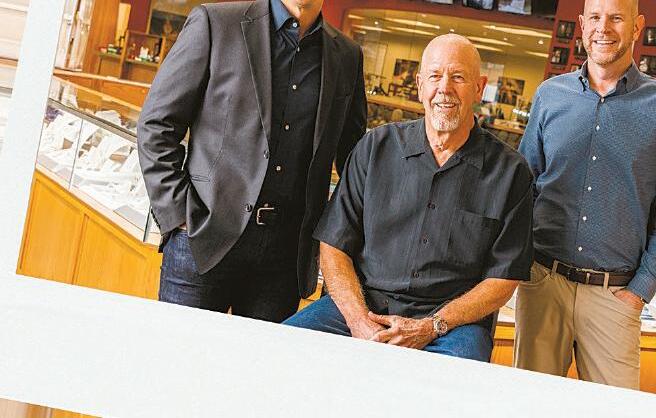
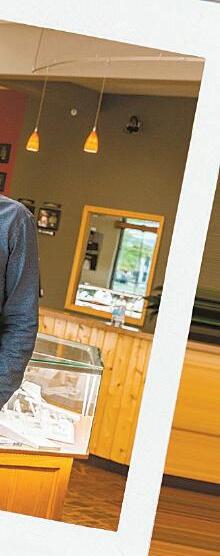


June 16, 2024 • Sunday • T5 Special SecTion
Ruth Wagar is dressed as Little Bo Peep in an effort to advertise the Lutheran Council of Great Spokane’s child care services that were part of Expo ’74.
MEMORIES Continued from 4 eXPO ’74 50TH annIVeRSaRy
Debbie Christensen Hansen, right, was a VIP tour guide, escorting guests via golf carts, like Spencer W. Kimball, center, president of the Church of Jesus Christ of Latter-Day Saints, and wife Camilla.
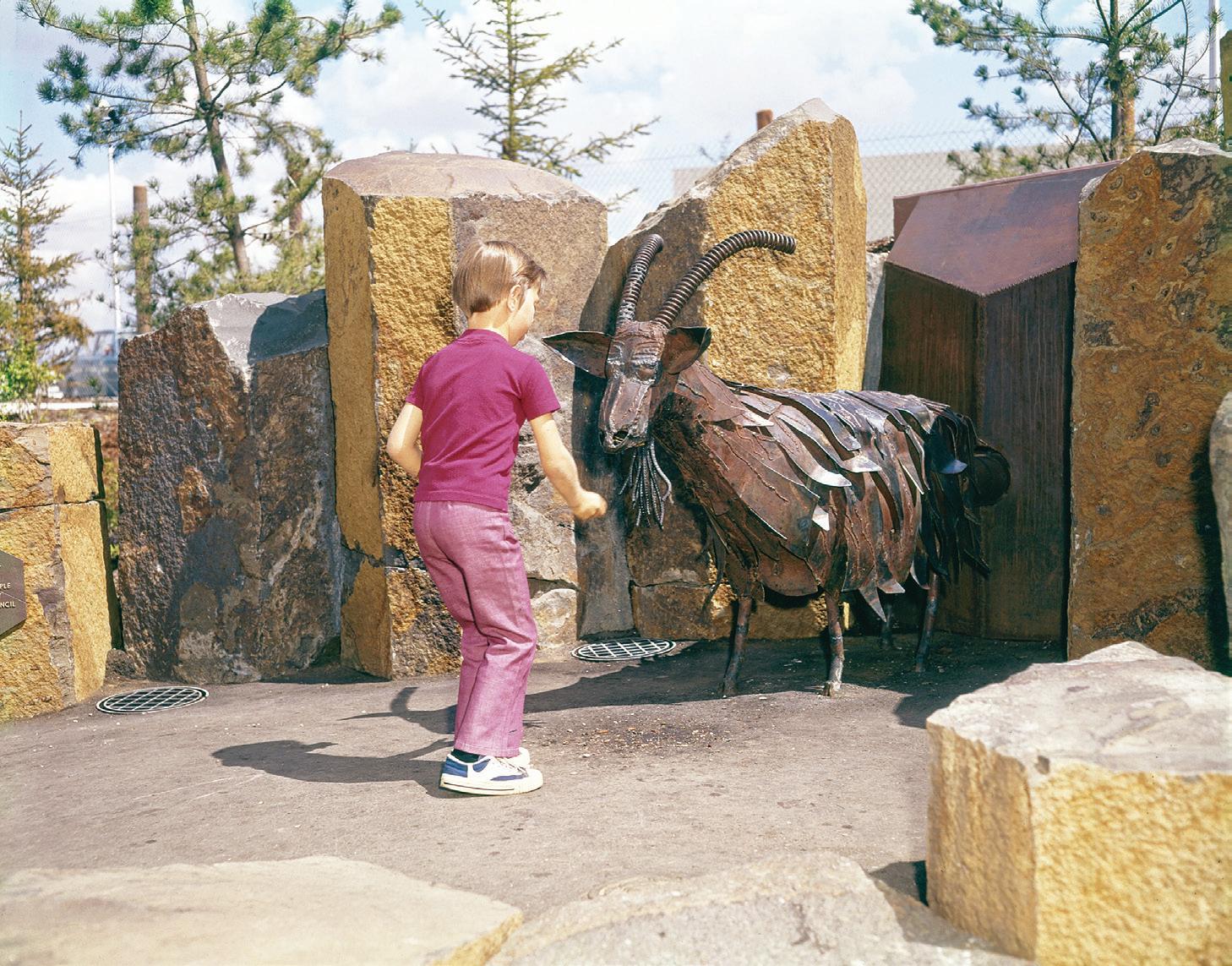

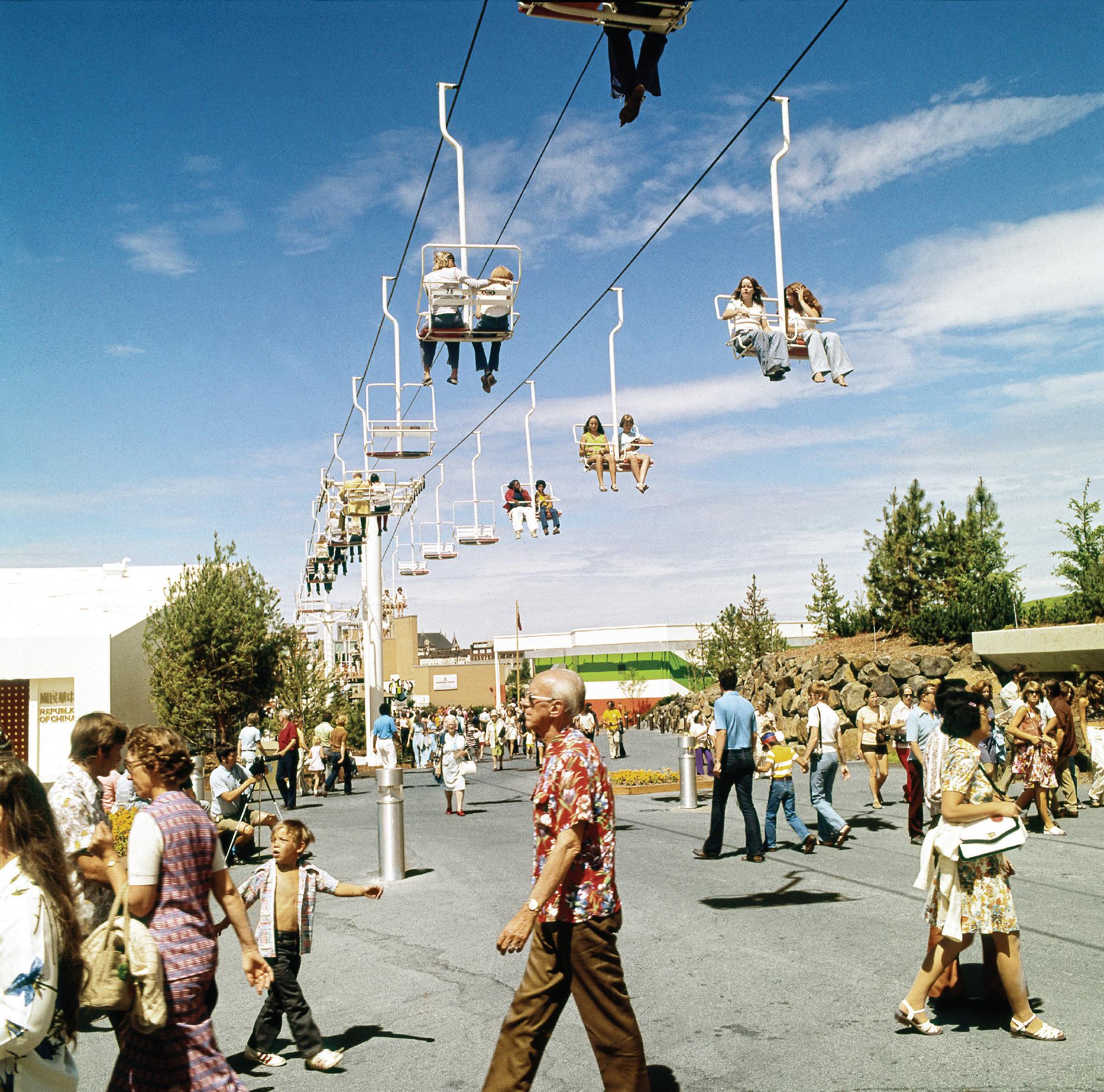
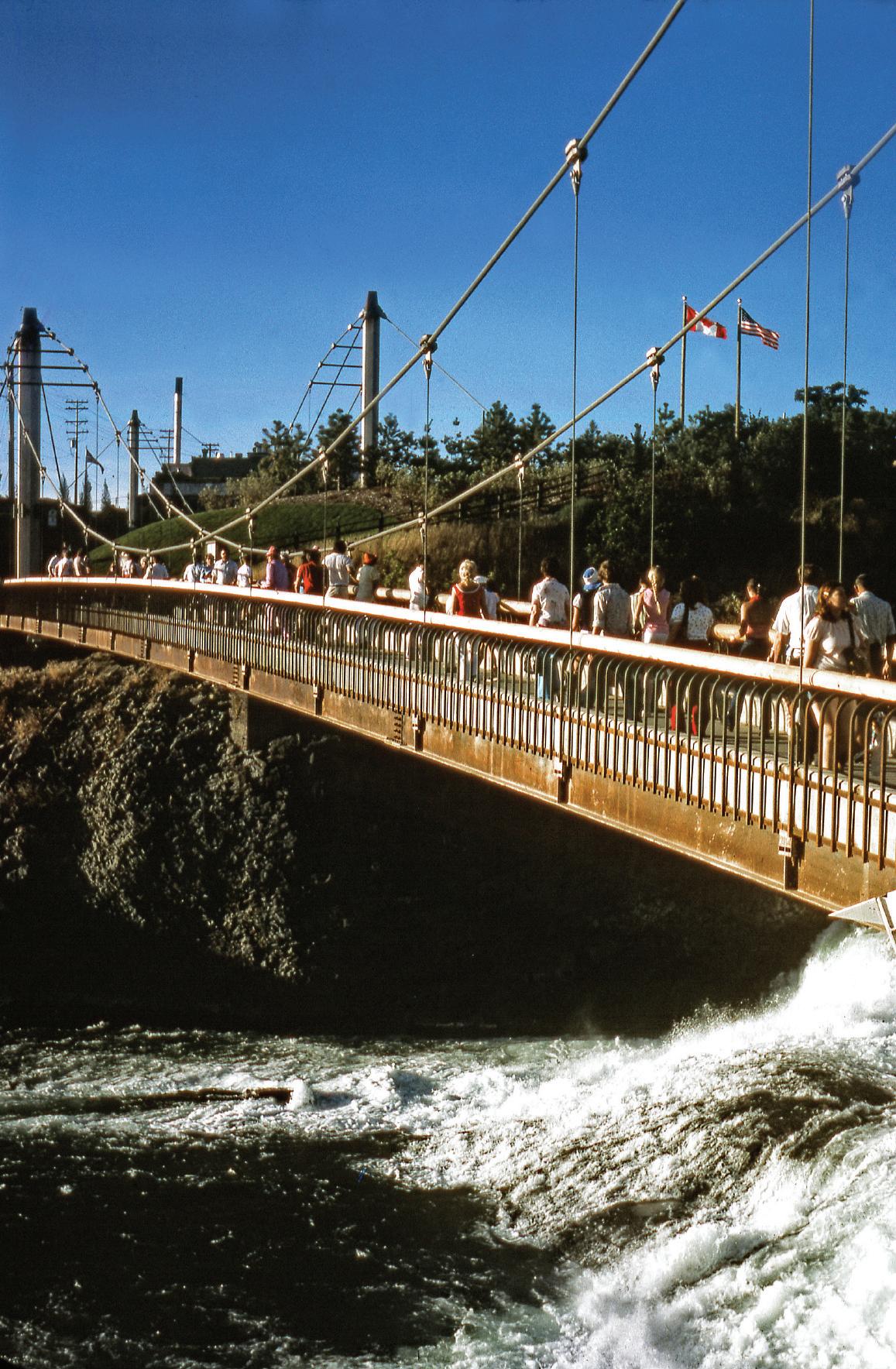
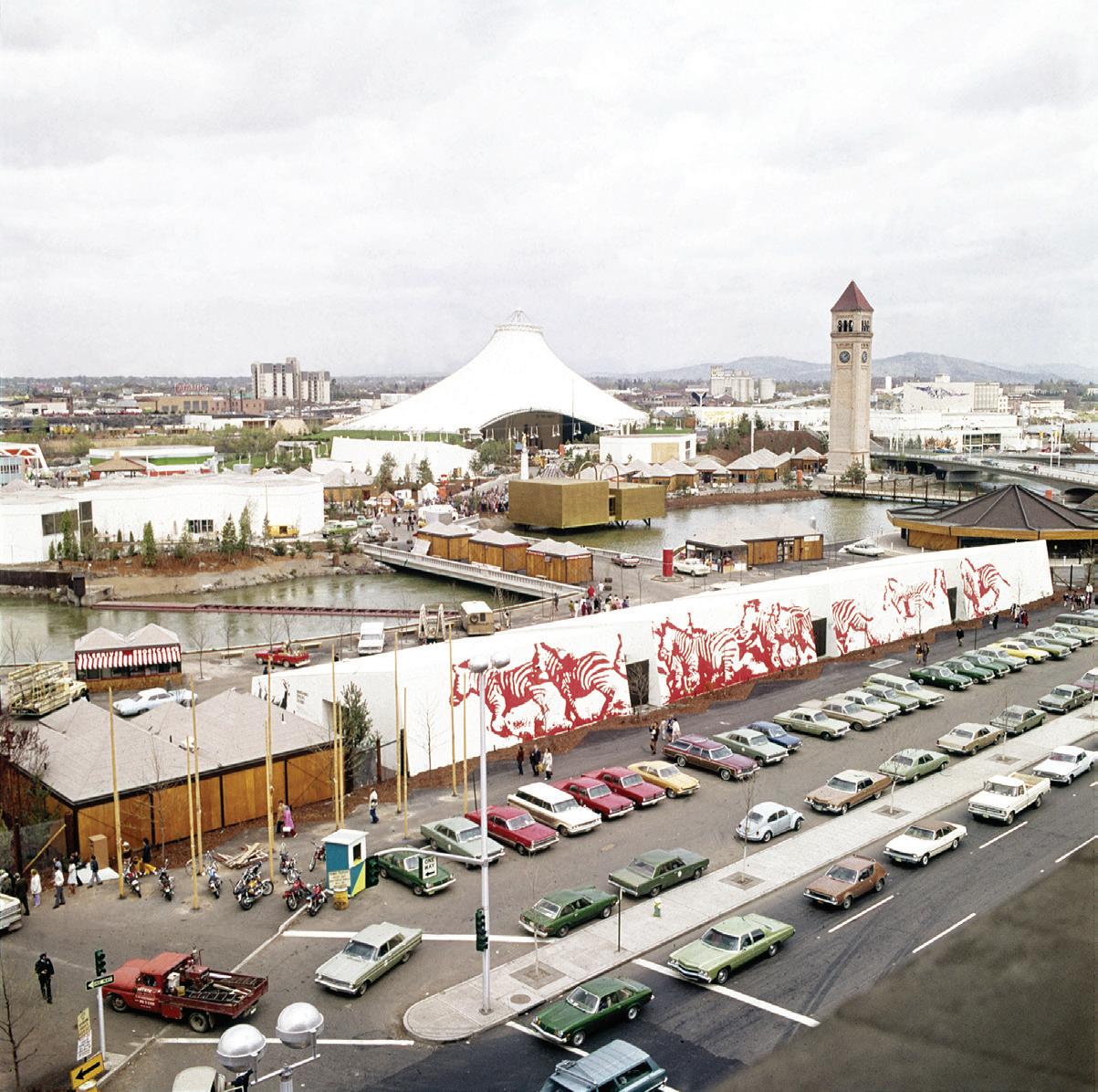
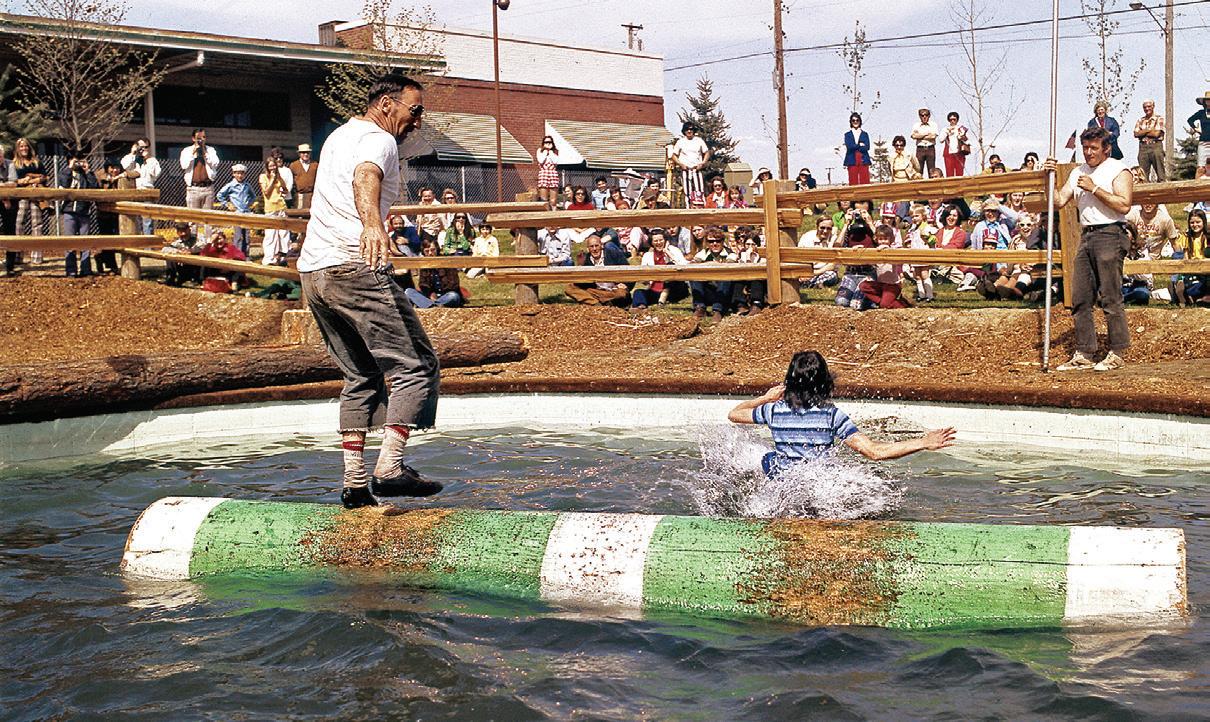
T6 • Sunday • June 16, 2024 Special SecTion
Havermale Island and its festive environs are filled with exhibits for fairgoers.
A log-rolling competitor falls into the waters while spectators
Above: Expo ’74’s litter-consuming goat by Sister Paula Turbnull in Riverfront Park.
watch on.
At left: Another of the many delights for Riverfront Park visitors will be this pedestrian bridge connecting Canada Island to the south bank of the Spokane River. During Expo ’74, the footbridges on site gave fair visitors an unprecedented chance to look down on the water cascading over the rocks.
At right: Children play in a designated play area at Expo ’74.
SPOKESMAN-REVIEW PHOTO ARCHIVES
eXPO ’74 50TH annIVeRSaRy
Riders on the SkyFloat enjoy a panoramic vista of the Expo site on July 19, 1974.

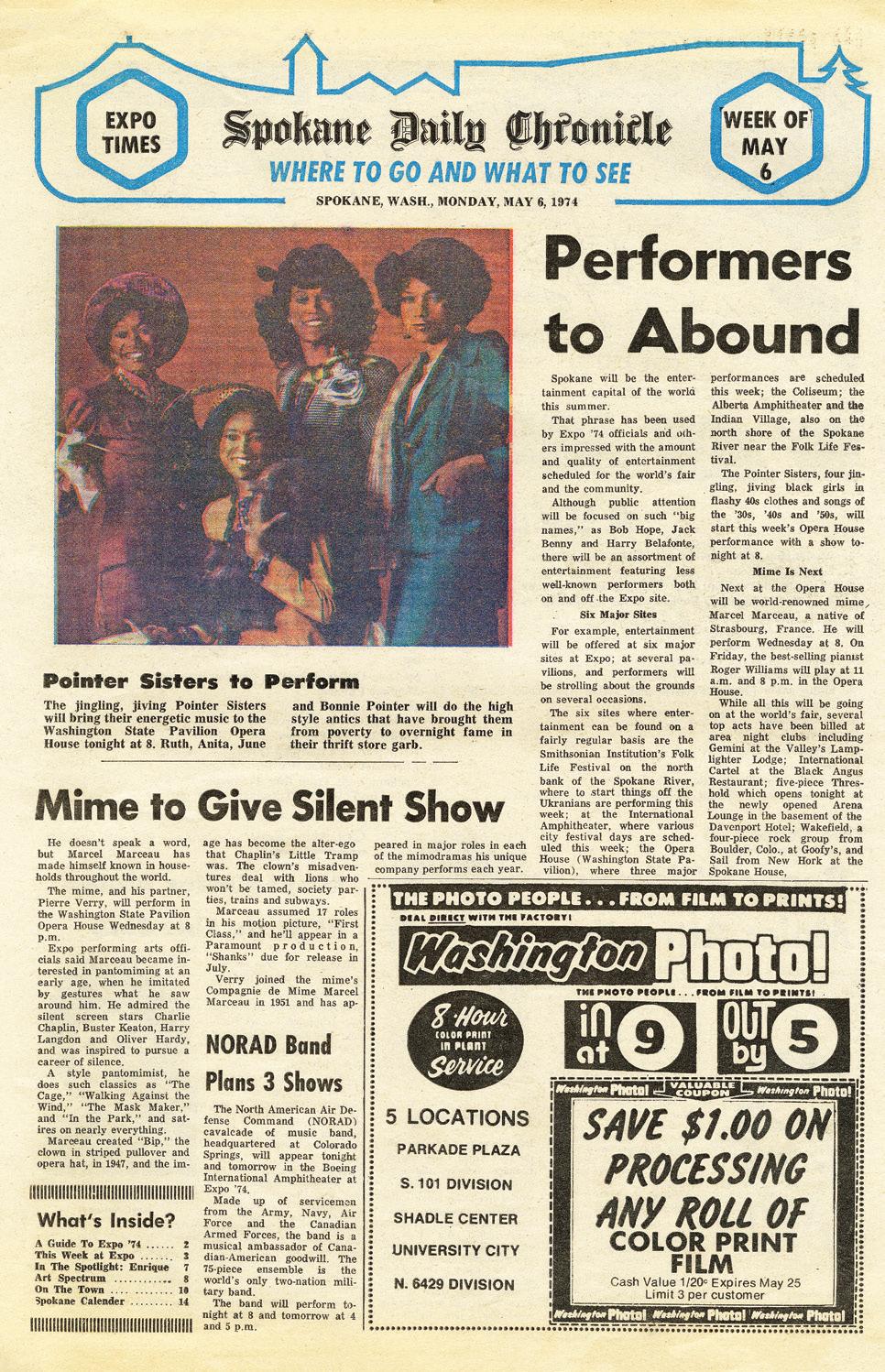

TURNING THE PAGE ON WORLD’S FAIR
Spokesman-Review newspaper archives show look back into history, highlighting special guests, like the president, and posterlike front covers
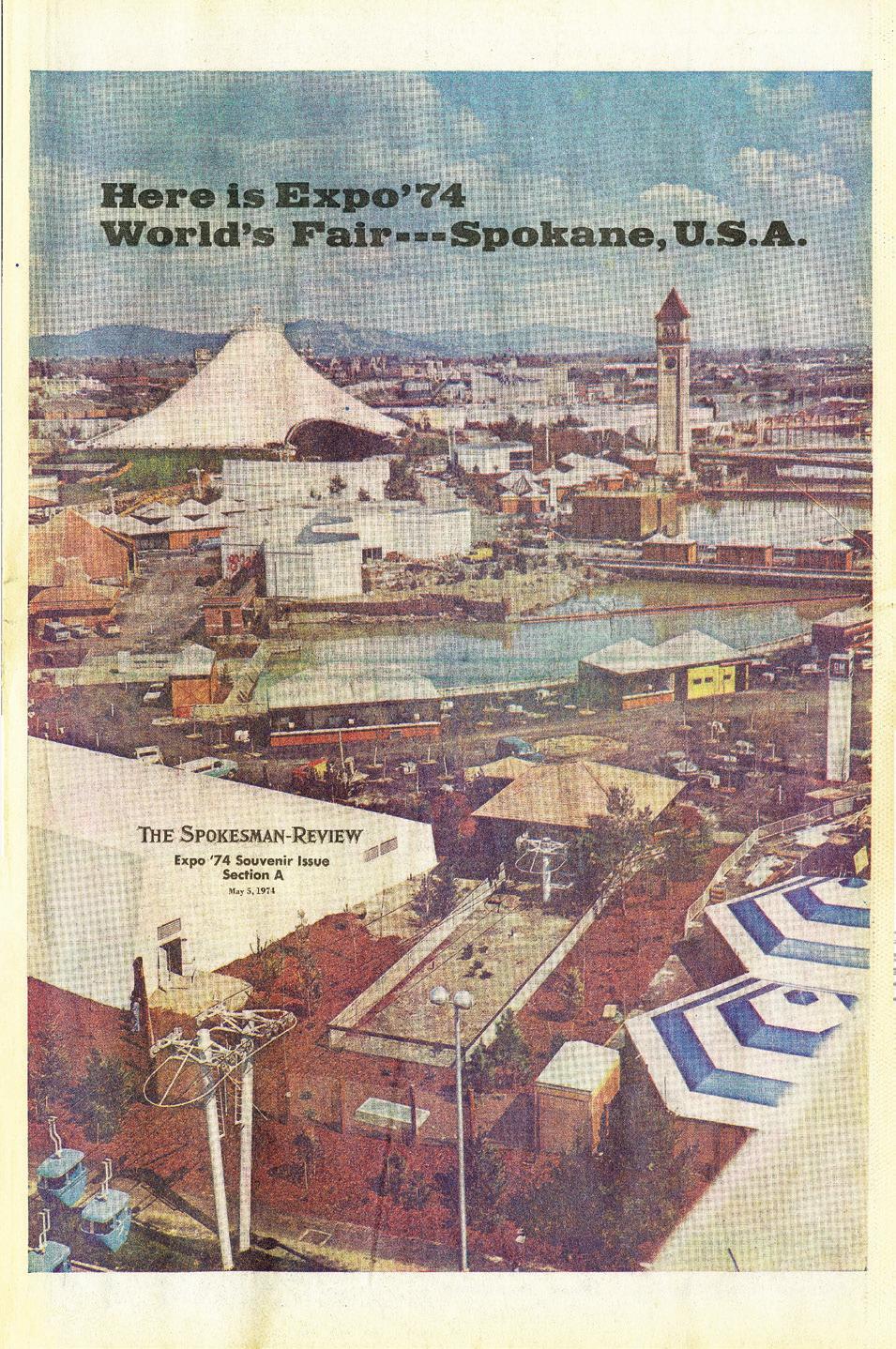



A special collectors edition of The Spokesman-Review – shown at left and below –came out on May 5, 1974. The “Expo ’74 Souvenir Issue” had specially designed covers for each section of the newspaper, including topics like pavilion offerings and politics, future promises and hopes, concessions and World’s Fair entertainment.
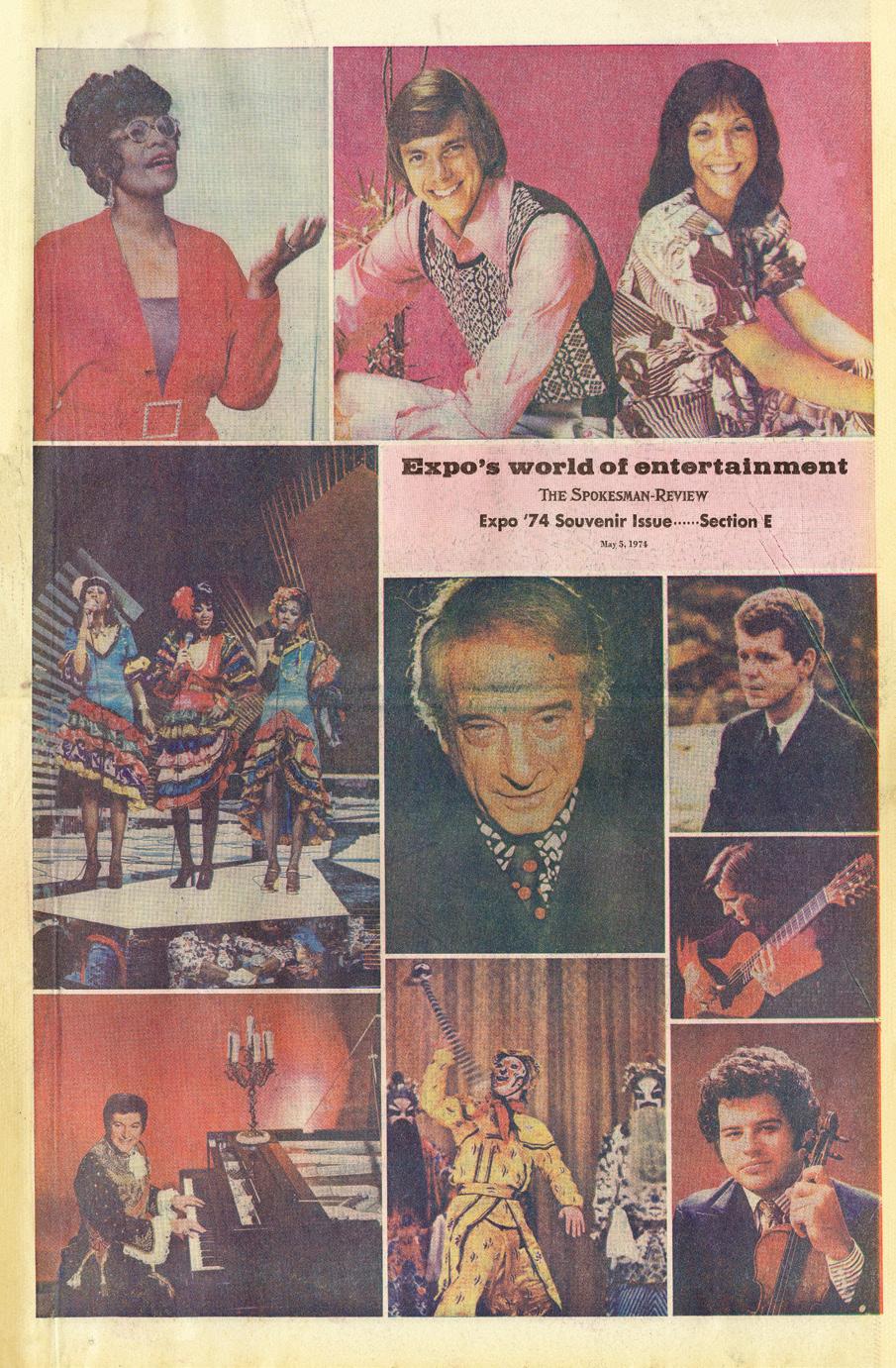
June 16, 2024 • Sunday • T7 Special SecTion
SepT. 30, 1974 MaY
1974
MaY 5, 1974
6,
eXPO ’74 50TH annIVeRSaRy
MaY 5, 1974: ‘eXpo ’74 SoUVeniR iSSUe’
THE HISTORY
Grand opening
Thousands of balloons and pigeons were released, and ambassadors from Japan, South Korea, Taiwan and Australia were in attendance. The fair drew 55,000 visitors by noon on the first day and 123,000 by the end of the second day.
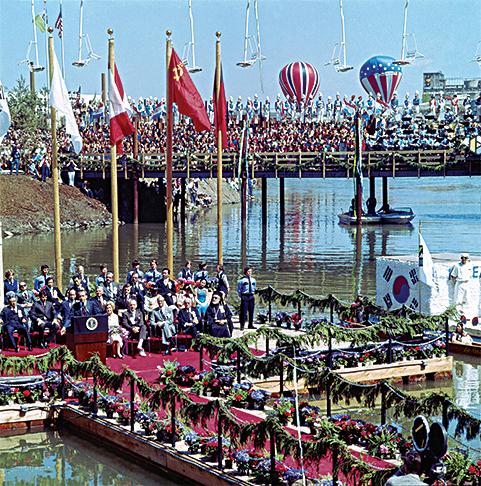

The appearance of President Richard Nixon on opening day of Expo ’74 was controversial. The city denied a parade permit for a group who wanted to call for Nixon’s impeachment after the Watergate scandal. Nixon would resign months later on Aug. 9, 1974.

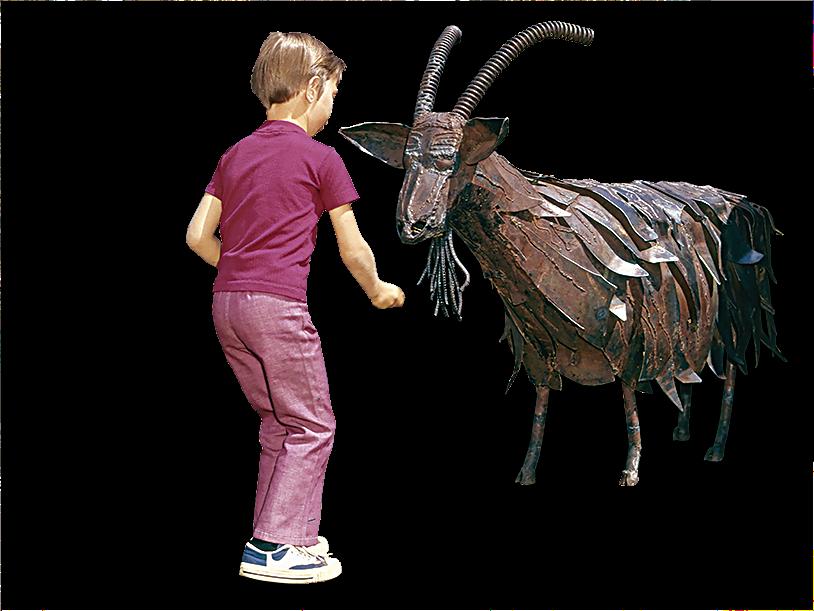
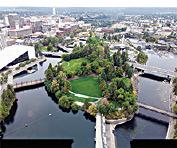
The Father of the fair
King Cole, known as the Father of Expo ’74, served as the fair’s president. First hired as an urban planner to revitalize downtown Spokane, he worked for more than a decade to rally support for the fair and relocate the rail lines covering what is now Riverfront Park.
A group of Spokane business leaders created Spokane Unlimited in the 1960s to find a way to revitalize downtown. They considered a centennial celebration in 1973, but consultants instead suggested hosting an international exposition as a way to fund the project.
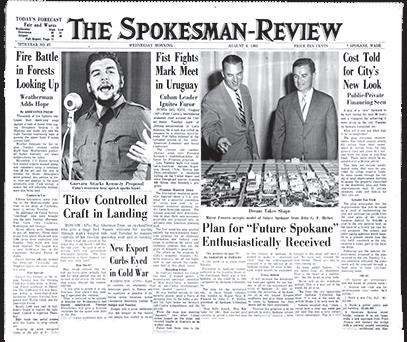
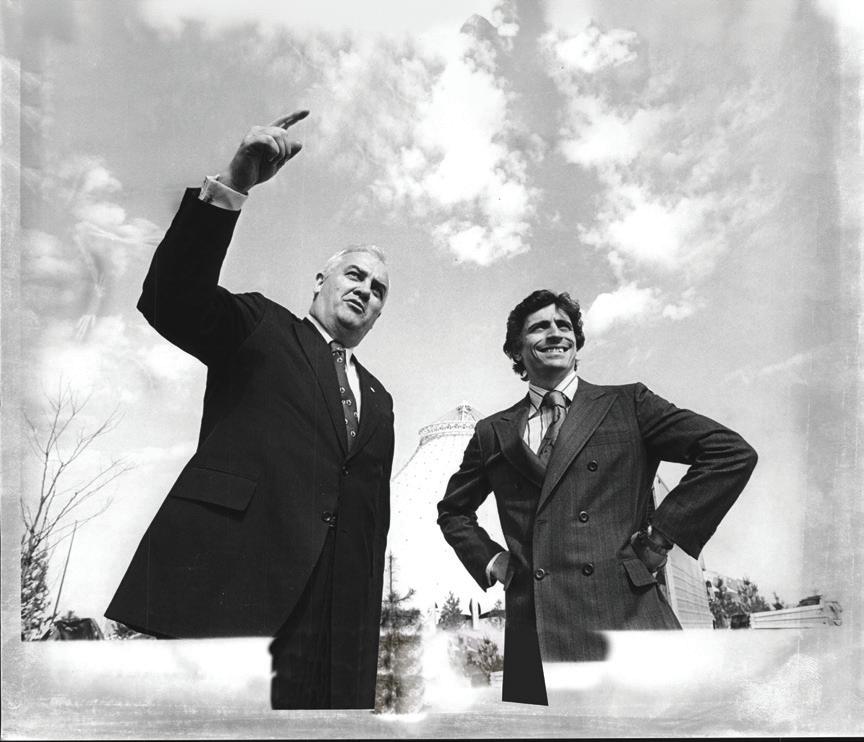
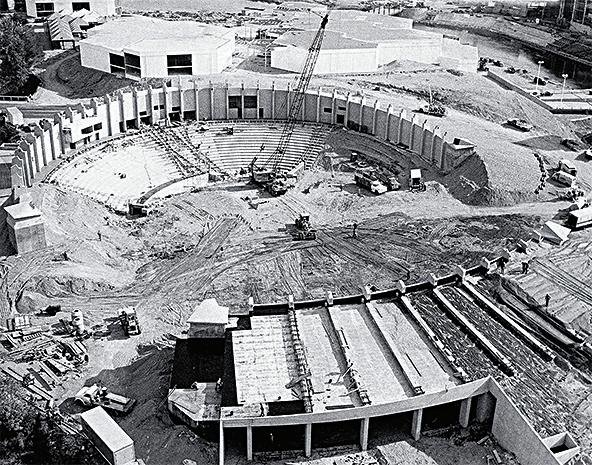



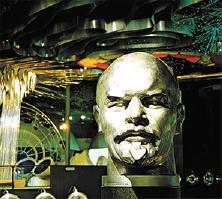
Afro-American Pavilion
Julian Bond, civil rights leader and Georgia state legislator, toured Expo ’74’s Afro-American Pavilion (sometimes called the Pan-African Pavilion) and called it “very impressive.” He said it presented a “much-needed” commentary on Black Americans, and was “particularly impressive if you consider there has never been anything like it before.”
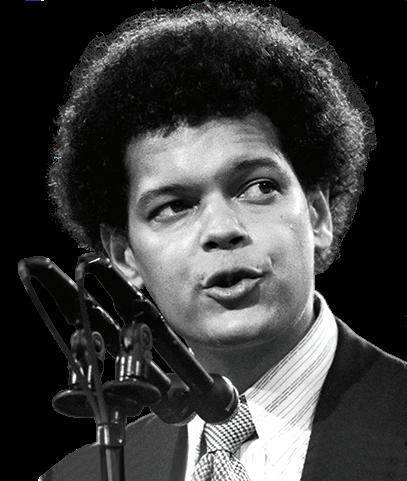

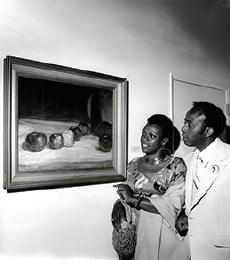
Having a lasting impact
In 1973, the Expo governing board adopted a 126-page environmental impact statement, setting policies for everything from better and more e cient waste disposal during the fair to dust control during construction. Many of the temporary Expo structures were made to be recycled after the fair.
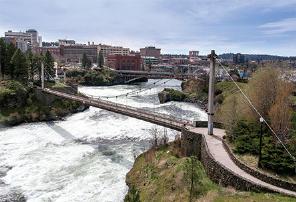
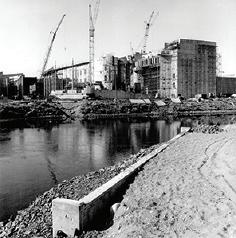
A-list celebrities
Concerts were a daily occurrence and included stars like John Denver, Ella Fitzgerald, Victor Borge, Liberace, the Pointer Sisters, Gordon Lightfoot and Merle Haggard. Bob Hope made an appearance, along with troupes of dancers and performers from around the world.
Hugh Hefner, editor of Playboy Magazine, with Barbi Benton, the country-western singer who sang in the Merle Haggard Show.
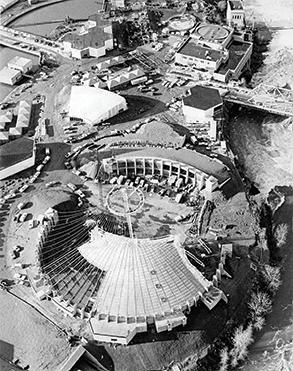


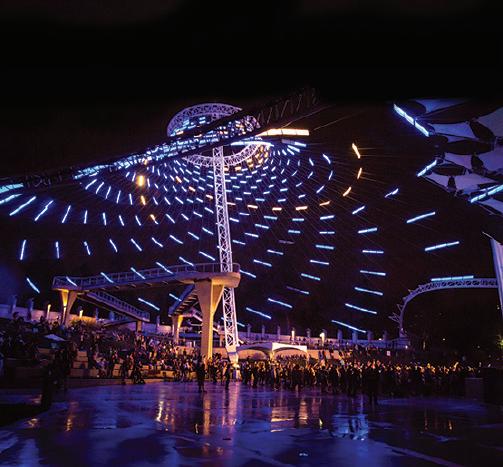

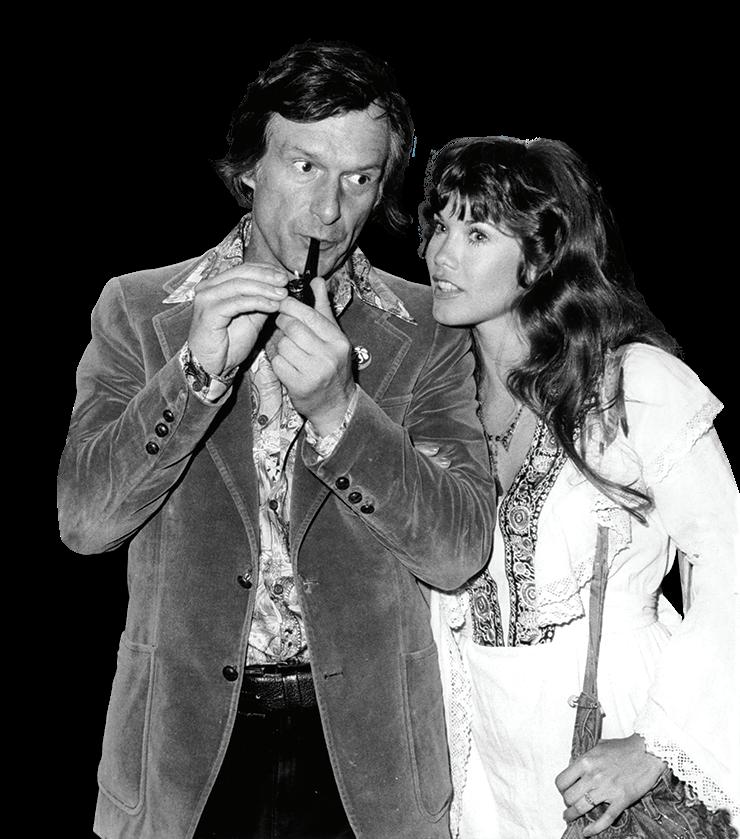
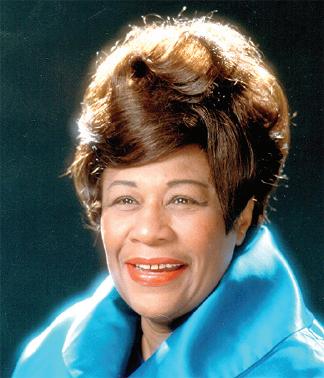



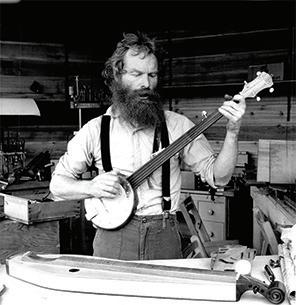

The real star of the show
The Spokane River was one of the big stars of Expo ’74 as it cascaded through a gorge carved by Ice Age floods. The river overlooks were popular, and visitors marveled at the falls, which were no longer covered by railroad trestles or lined by lumberyards and laundries.
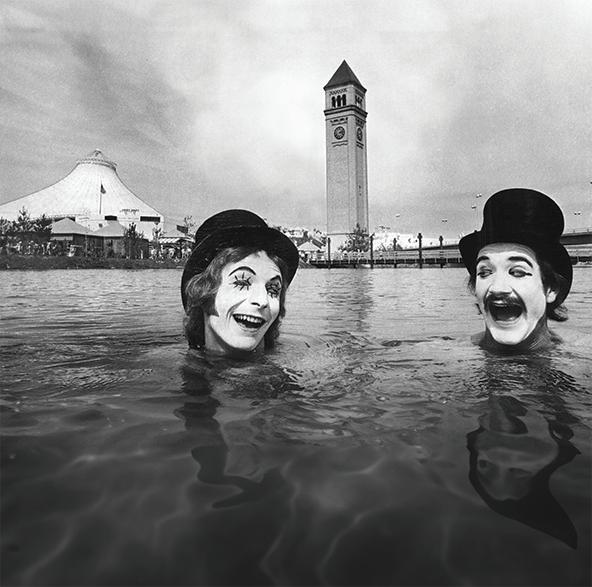
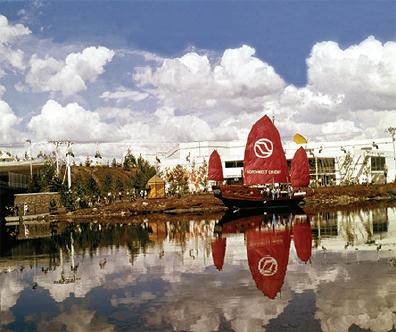
T8 • Sunday • June 16, 2024 Special SecTion Getting our goat The Garbage Goat, long a favorite of children who love “feeding” trash to the metal goat’s vacuum system, was created for Expo ’74 by Sister Paula Turnbull, known as the “welding nun.” When it was first installed, a recording would play asking for garbage. From industrial to incredible Havermale Island was a tangled mess of railroad called the “Chinese Wall” that literally covered leading up to Expo ’74. City business leaders Unlimited to revitalize downtown Spokane Pacific, Milwaukee Railroad and Great Northern town property to make way for the World’s part of the Great Northern Station, is all that
Ten countries, including the United States, hosted pavilions during Expo ’74. Countries that were represented included the Soviet Union, Japan, South Korea, Taiwan, Canada, Australia, Iran, West Germany and the Philippines. Several states, including Idaho and Montana, had exhibits at the fair. Paying for Expo ’74 Business leaders held the keys to Expo ’74, encouraging the idea and putting up money to make it happen. The main organizers included the leaders of downtown banks, Washington Water Power (now Avista Utilities) and the Cowles Co., which publishes The SpokesmanReview and The Spokane Daily Chronicle. Expo ’74 cost $29.1 million to put on and ran a $750,000 deficit, which was covered by “seed money” put up by local businesses and individuals. A study after the fair showed the event generated an estimated $139 million in gross income to businesses in Spokane County, which would be $1 billion in today’s dollars.
World powers
GETTY
Yippies and hippies People’s Park on the banks of the Spokane River was born during Expo ’74. Hundreds of people camped on the 35-acre property, becoming known for swimming nude and partaking in marijuana. The camp was organized by the Yippies, the Youth International Party, who spent at least some of their time protesting the fair.
IMAGES
John Denver CMA
Liberace
Bob Hope Ella Fitzgerald GETTY IMAGES
SHUTTERSTOCK
OF EXPO ’74


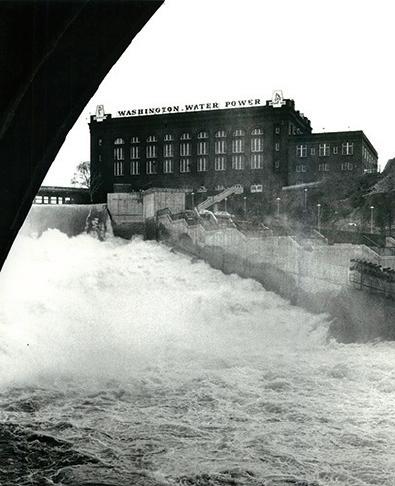
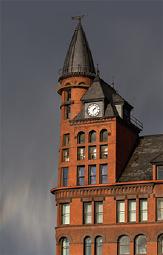
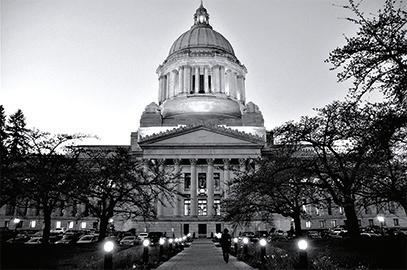



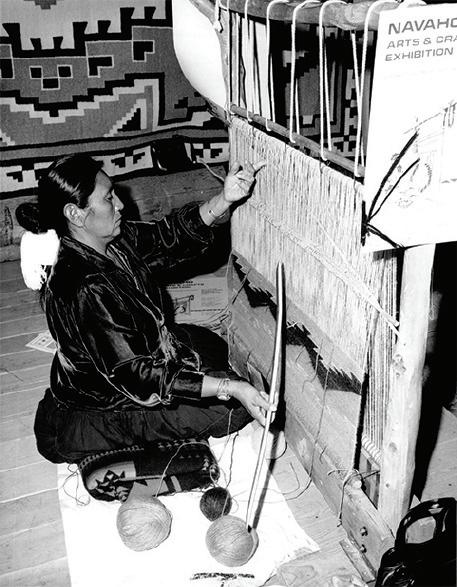


Little big city
Spokane, the smallest city to ever host a World’s Fair, held Expo ’74 from May 4 to Nov. 3, 1974. Attendance topped 5.7 million visitors (kids got in free, so that means a total of 5.1 million paid), surpassing the estimates of 4.8 million. Just over 54% came from Washington. Residents from California, Montana, Oregon and Idaho also topped the visitor lists.
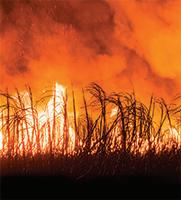

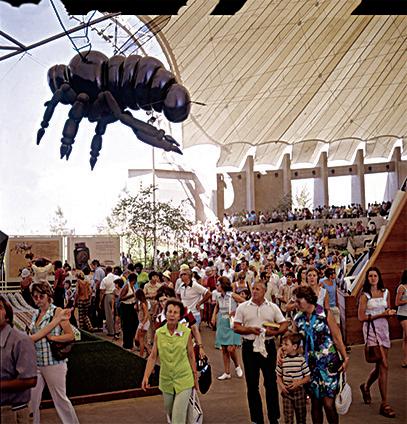
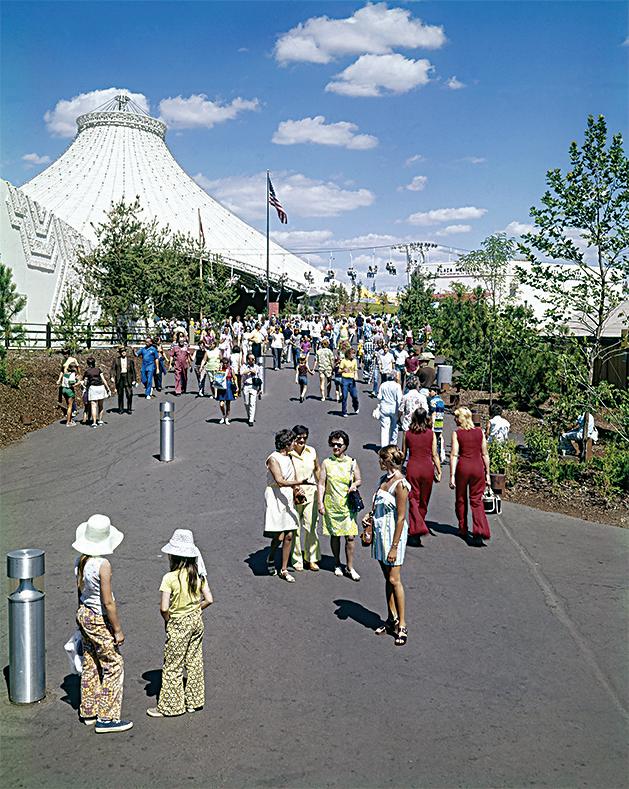

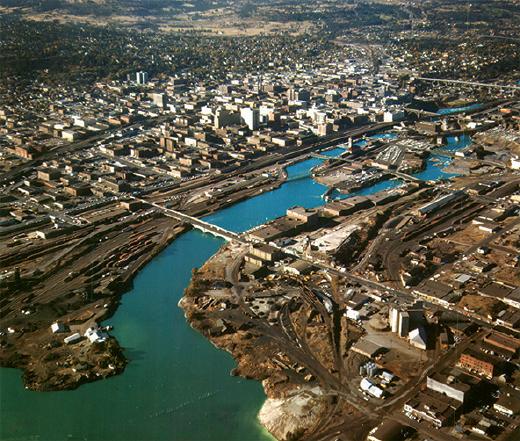
Day of celebration
The Fourth of July during Expo ’74 was no small spectacle and included astronaut Harrison Schmitt, a canoe race, a pie eating contest, a liars contest, live music, marching bands, a parade and $30,000 worth of fireworks. Spokane singer Bing Crosby was given a “Great American” award.

Festival was the place to listen to bagpipe music, watch a demonstration of Basque sheepherding or have your fortune told. There were lumberjack demonstrations and panning for gold. A new ethnic group was invited each week, creating an ever-changing tapestry of culture. Folklife festival
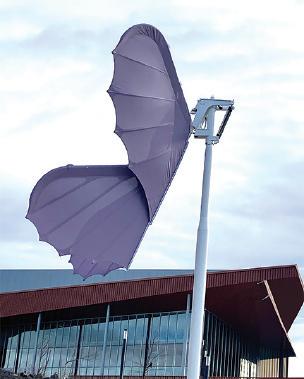
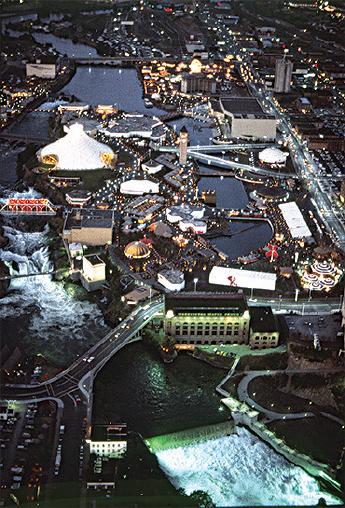
Focusing on the environment
The

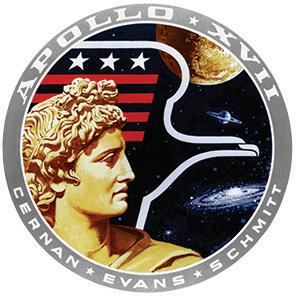


remaining butterfly fell in a windstorm in 2021. One butterfly was restored and remounted last year and stands at the north entrance of Riverfront Park.

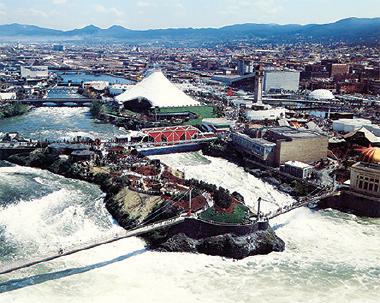
Closing day
Closing day of Expo ’74 on Nov. 3 saw attendance of 62,438, creating a huge “people jam” as visitors turned out for a torchlight parade, fireworks, concert and a taped message from President Gerald R. Ford. Ford called the fair “an historic gathering of nations and peoples dedicated to making our Earth a better place for all of us.”
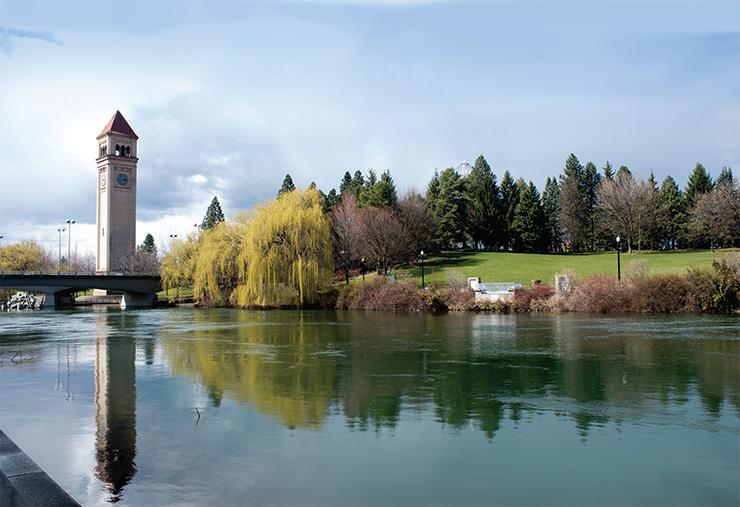
Spokane River natives
The Spokane River Falls were historically salmon fishing camps used by the Spokane, Coeur d’Alene and Kalispel tribes. The three tribes hosted “Native Americans’ Earth,” a pavilion dedicated to educating people about the culture and history of Native American tribes. People could watch Native dances and learn about making moccasins, beading, basket weaving, wood carving and more.
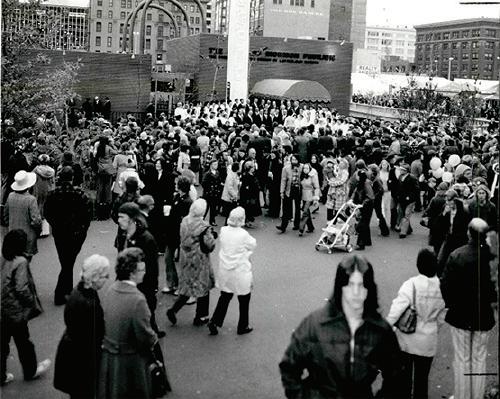
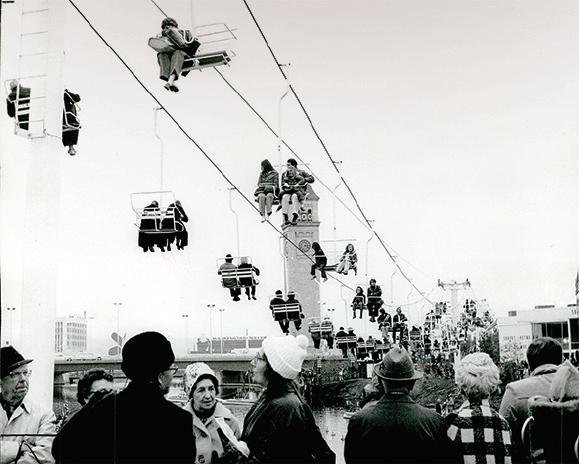
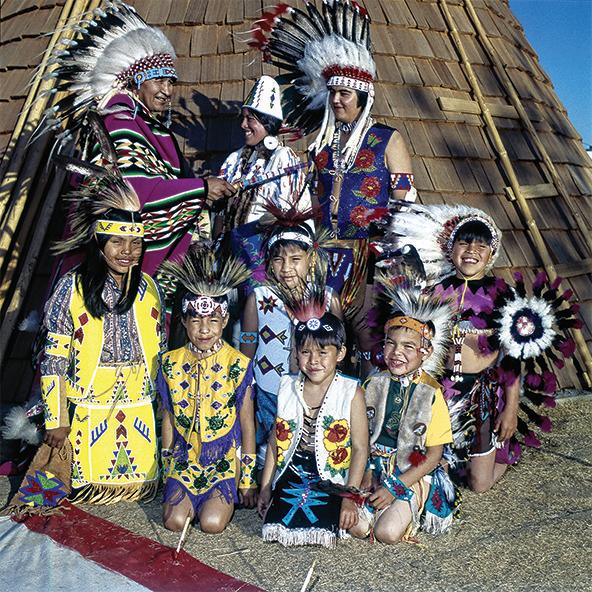
The
Park after the Fair
After Expo ’74 ended, the city turned the 100-acre site into what is now Riverfront Park. Many features of the fair have been used for decades, including the U.S. Pavilion, the SkyRide and the IMAX Theater. The park was recently expanded and updated to include the Ice Age Floods Playground and a skate park.

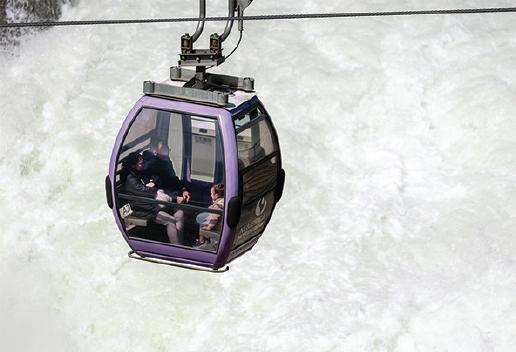
June 16, 2024 • Sunday • T9 Special SecTion incredible railroad tracks and trestles covered the Spokane River leaders created Spokane Spokane and convinced Union Northern to vacate the downWorld’s Fair. The Clocktower, that remains.
theme of Expo ’74 was “Celebrating tomorrow‘s fresh, new environment,” and it was the first World’s Fair to focus on the environment. Three International Environmental Symposiums were held during the fair, with sessions on recycling, land use, population, economics and the environment, environmental law and solid waste management. The first annual United Nations World Environment Day was celebrated during Expo ’74 on June 5. The day has been used to highlight global warming, toxic chemicals, microplastic contamination and the depletion of the ozone layer. Washington state provided $11.9 million to build the Washington State Pavilion, which was later sold to Spokane for $1 to become what is now the First Interstate Center for the Arts. The city enacted a controversial five-year B&O tax to raise $5.7 million.
Schmitt was NASA’s first scientist-astronaut to fly in space. As a member of Apollo 17, the last of the manned moon missions, he was the second-to-last person to step o of the moon. The Expo’s Folklife
Gigantic butterflies Expo ’74 featured five 50-foot metal butterflies mounted throughout the fair site, their giant wings covered in colorful fabric. The final
PHOTO: Cole, left, with American ballet dancer Edward Villella who was featured at the Washington State Pavilion Opera House opening concert featuring the Spokane Symphony.
Australian contingent celebrates 50-year Expo reunion down under
By Cindy Hval
FOR THE SPOKESMAN-REVIEW
They arrived in Spokane in April 1974. Clad in yellow and gray, the men sporting large bow ties, the women in yellow hats.
Richard Goodwin, Kerry Thomas and Barbara Wright joined 15 other Aussies to staff the Australian Pavilion at Expo ‘74.
Though they were strangers before accepting the gig, the group quickly became friends, and last month they held a reunion in the Barossa Valley, in Australia, to commemorate the 50th anniversary of the World’s Fair.
It wasn’t their first gathering.
“We’ve stayed in touch over the years, even though we live mostly widely apart,” Goodwin said. “In 2004, we held our first reunion and our old Expo bosses joined us. That was followed by reunions for the 40th, 45th and now 50th anniversaries of Expo.”
The 12 girls and six guys got their jobs the old-fashioned way via a newspaper advertisement that offered $225 per fortnight, including allowances, from April 16-Nov. 8.
Goodwin only applied because his best friend showed him the ad and said he hoped to get the job.
“I was in my third year as a young journalist for the Age newspaper in Melbourne, a career I’d long treasured. The chance to go to America representing Australia appealed as a growth measure personally and professionally,” he said. “My editor agreed and gave me a leave of absence for six months, later extended to a year.”
His friend didn’t get the job, which made Goodwin feel a bit bad.
Kerry Thomas was 21, working as a programmer/ analyst, and a few nights a week he played drums in a rock band.
“I had shoulder-length hair and volunteered during the interview to get a ‘short back and sides’ if I got the job,” he recalled. “The only problem was that the very next day after I got confirmation, the press wanted to interview me and take photos, which, naturally, I obliged.”
He hadn’t had time for that haircut.
“The phone call I received next morning from recruitment was not pleasant, so that afternoon I had my locks cut!”
Barbara Wright loved traveling and had already visited the U.K., and the South Pacific before landing the Expo job.
“I was teaching English and French in a secondary school in Perth (Australia), and the Education Department gave me leave without pay, so I didn’t have to resign,” she said. “I’d never been to North America and working in a world’s fair sounded pretty exciting!”
The crew stayed at the Chateaux apartments on

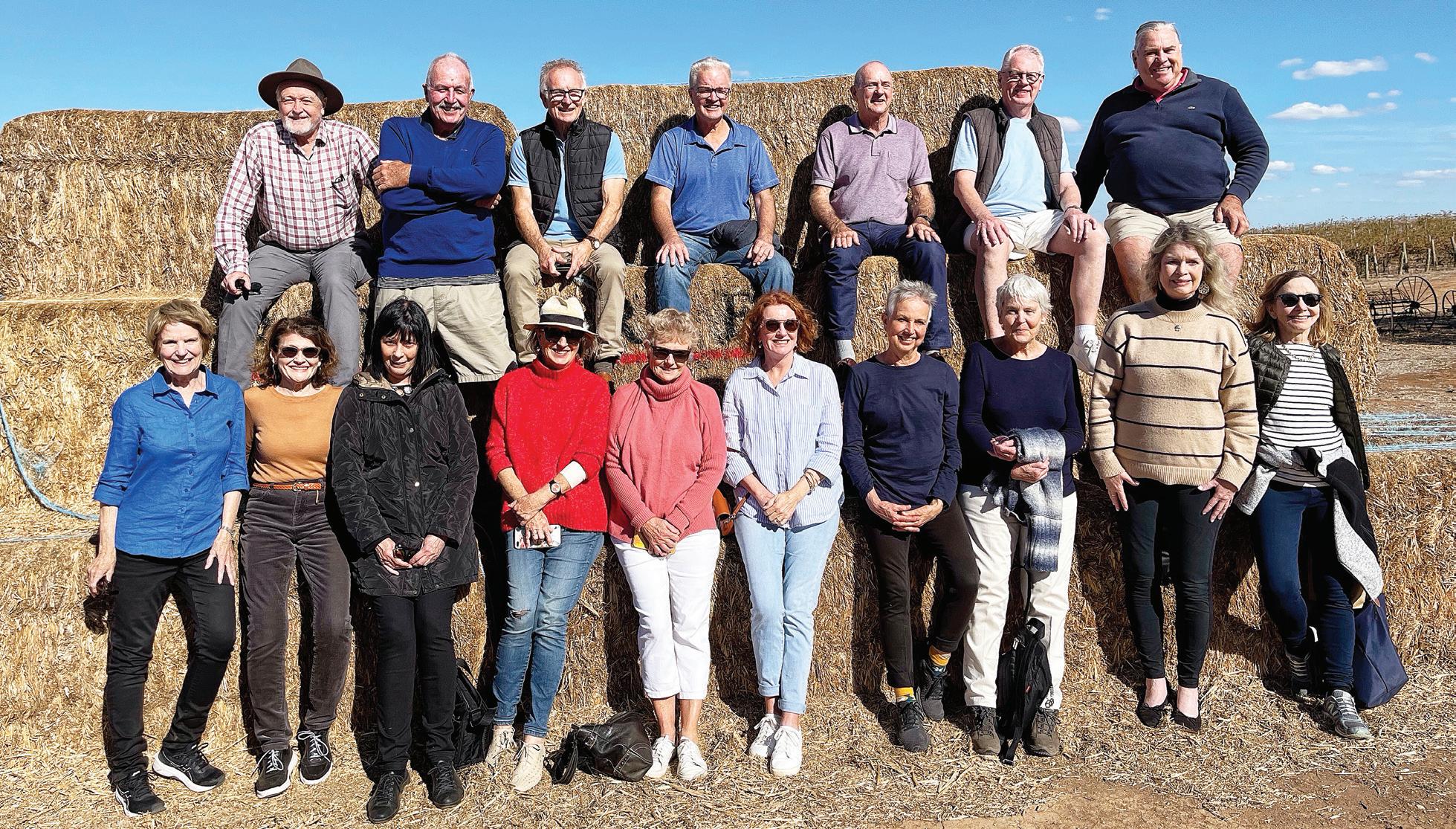
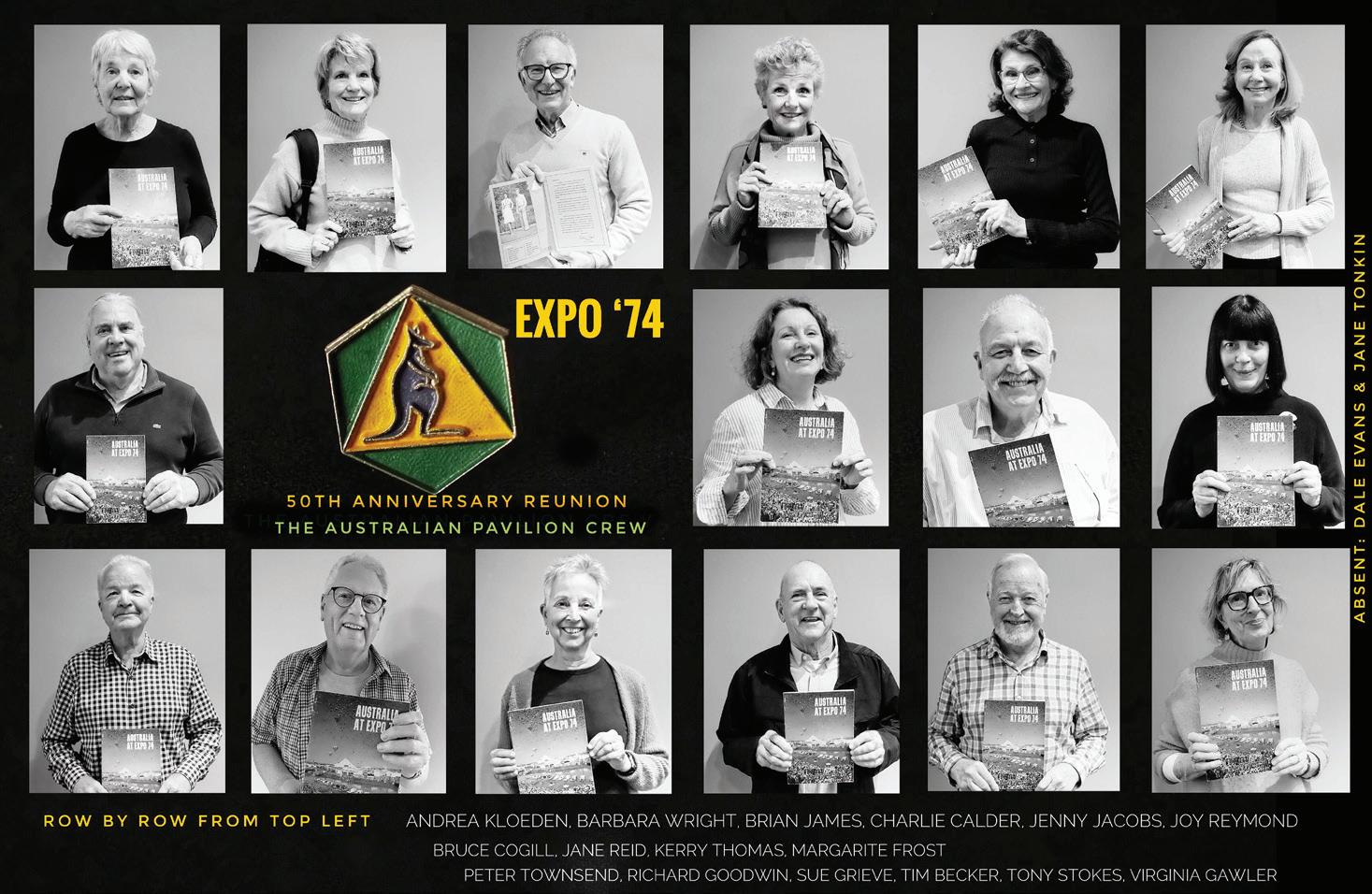
North Washington Street.
“You could see our place from inside the pavilion. We could walk to and from work each day,” Goodwin said. “Spokane impressed us. The Expo site’s location next to the river and falls was beautiful.” They discovered plenty of novelty in American life with unfamiliar items like color TVs, massive milk cartons and big cars. Wright enjoyed the surrounding forests, lakes and mountains.
“Western Australia is rather dry and has very few of these features,” she said. “We soon adjusted to traffic on the wrong side of the road, and the different names and pronunciations of words, compared to what we’d grown up with in Oz.”
Two million visitors passed through the Australian exhibit during Expo ‘74. In June, 17 pieces of exquisite handmade opal jewelry were displayed at
the pavilion. The star of the show was the Pride of Queensland necklace which featured a 34-carat opal set in 4½ ounces of 18-carat gold.
The Australian crew proved to be a big draw, as well.
“People just wanted to listen to you talk,” Thomas said. “They were interested in kangaroos and koalas. Each day working in the pavilion was different and I thoroughly enjoyed interacting with the public.”
Thomas had a side gig during Expo. He donned a kangaroo suit and greeted visiting Aussie dignitaries or performers at the airport. Their primary job was greeting guests at the pavilion, guiding them through the exhibits and answering their questions.
“We were frequently asked what dialect of English we spoke,” recalled Goodwin. “One man pointed at our Perspex (Plexiglas) model of the Sydney Opera House and asked, ‘Is that a grocery store?’
Another queried whether our animal exhibits were freeze-dried!”
Their pride knew no bounds when the New Yorker magazine wrote, “The ground floor of the Australian pavilion happens to be the most tasteful and well-designed exhibit offered by any nation at Expo ‘74.”
It wasn’t all work for the Aussie crew. Their schedules allowed regular fourday breaks, and they took every opportunity to explore.
Wright said she has lasting memories of rafting down the river, a donated plane ride to see the autumn colors, and trips to Coeur d’Alene, Seattle,
Vancouver, Calgary, Lake Louise, San Francisco, Reno and Glacier National Park.
“The people in Spokane were incredibly friendly and generous,” she said.
Another perk was the lineup of celebrity guests.
“One big hit was the entertainment program at the Opera House,” Goodwin said. “We devoured shows featuring world-class artists like Harry Belafonte, Gordon Lightfoot and Henry Fonda.” He, too, appreciated the warmth of the locals.
“Many of our young crew were befriended by families who hosted us at home or took us places,” he said.
Thomas even found romance.
“During Expo, I met a beautiful local girl, and this made it more difficult for me to leave. I spent Christmas with her family in Spokane – my very first white Christmas,” he recalled. “Not long afterward I sadly said goodbye and did a road trip down Highway 101, then into Mexico and Central America.”
He returned to Spokane in 1975 and more recently in 2007.
“That later visit was with my wife, and we visited the Expo site out of curiosity,” Thomas said. “We stayed with my (ex) girlfriend and her husband which may seem strange to some, but that’s what good friends do.”
Wright also spent time traveling after the World’s Fair concluded.
“I spent two months traveling throughout the U.S. and Canada with a couple of others,” she said.
“We bought a Greyhound Pass – $90 for 90 days’ travel. It was great! We finished our travels in New Orleans on New Year’s Eve.” The bonds built while living and working at Expo ‘74 have proved lasting.
“Because of our ages when we went to Spokane, the entire experience proved life-changing, and mind-broadening – an era which molded memories,” Goodwin said. One of their crew has passed away, but at their recent reunion, they had just two absentees – one recovering from illness and another welcoming a new grandchild in New York City.
Thomas said they refer to each other as their “Expo family.”
“When we get together we all feel like we are putting on a comfortable pair of cozy slippers,” he said. “There’s a familiarity, an at-homeness, that’s hard to qualify.”
The group is already talking about their next reunion.
“We were known as a friendly bunch by the pavilion visitors,” said Goodwin. “And half a century later it seems something in our chemistry has kept us affectionately connected.” Contact Cindy Hval at dchval@juno.com.

50 years ago, Expo ’74 brought the world to Spokane launching the city’s tourism and convention economy.

T10 • Sunday • June 16, 2024 Special SecTion & heAlth H app y anniversaryexpo ‘ 7 4 From yourFriends A t PeAce, love SRHD.oRG
Visit
continues
legacy, proudly promoting our region in all sectors of hospitality
enhancing the quality of life for our residents. Discover what we do.
Spokane
to honor this
and
Expo ’74 Australian Pavilion workers pose in the Barossa Valley during their 50th Reunion on May 7.
This photo gallery was on display for the 50th reunion of Expo ’74 at the Australian Pavilion reunion in May.
PHOTOS COURTESY OF RICHARD GOODWIN
eXPO ’74 50TH annIVeRSaRy
The Australian Pavilion Expo ’74 crew poses, sans one worker, in Spokane.
Expo 50: A tribal perspective
By Margo Hill FOR THE SPOKESMAN-REVIEW
This year marks 50 years since the World’s Fair came to the city of Spokane in 1974. Many of us tribal people may remember Expo ‘74 and participating in the Tribal Pavilion at the war dance. Maybe you remember panning for gold or having an Expo ID card. Maybe you remember your grandpa drumming and singing to bring the dancers in. Or you remember your auntie helping you get your regalia on before grand entry. There were tepees set up and visitors traveled from all around the world to the Expo World’s Fair. I remember Etta Adams, “Big Mom” as her family calls her, being our whip woman. (A whip woman is a cultural position in the tribe that makes sure everyone on the war dance floor is following protocol.) I remember my great grandmother Sadie Boyd speaking in the Salish dialect and my grandmother Ida Peone-Boyd interpreting and translating Spokane Salish to English. I remember fighting with the loggers next to us. It seems like it never failed, when our elders would be praying or explaining history, they would start up their chainsaws. To this day, I can’t believe someone would put a bunch of Natives next to loggers with axes and chainsaws!
As we embark on the Expo ‘74’s 50th celebration, I would like to share a little history of how our tribal involvement originally came to be, just months before the World’s Fair opened and where we are today in planning the events of the Tribal Pillar. A whole series of Tribal Pillar events began in May’s opening ceremonies and runs through July 4.
Expo ‘74 powwow Expo ‘74 was the first world’s fair to focus on the environment. The Spokane Tribe and other tribes, such as the Coeur d’Alene Tribe of Idaho, served as host tribes for the “Native American Earth” at Expo ‘74 in Spokane. There were many other tribes that participated: the Kalispels, Colvilles, Salish-Kootenai, Nez Perce and Umatillas were represented at the fair.
Bingo SiJohn, of the Coeur d’Alene Tribe, was a coordinator for her tribe and recalled: “Whenever we (the tribes) would get together to perform, everything was put aside. This is what was called Unity among the Tribes. War Dancing is one thing all Indians enjoy doing. A lot of us learn to War Dance and sing the songs before we learn to walk and talk.”
Some remember Francis SiJohn and John B. Flett with Cliff and Jim SiJohn at the drum singing songs. Roger Moses shared that he his brothers represented the Spokane Tribe at the opening ceremony and closing of Expo. Celina Goolsby, Carol Evans, Colleen Cawston and others served as hostess at the Indian Village sharing the tribal history and explaining the dances to the international audience. Spokane Tribal members Junior, Merle, Ray and Andrew were construction workers and helped build the Expo buildings. Perry Tonasket, who war danced and was dressed in Sherman Alexie Sr.’s beadwork, remembered the visit of famous gymnast Olga Korbut’s to Native America’s Earth.
Sadie Boyd shares her story
The Spokesman-Review reported on July 7, 1974, that Spokane Tribal elder spoke and shared when Indians “owned” the river.
“Visitors to the Native American’s Earth recently had the opportunity to learn about the early days of the Spokane are from the Indian point of view. The reflections were given by Sadie Boyd, 90, a member of the Spokane Tribe from Wellpin-
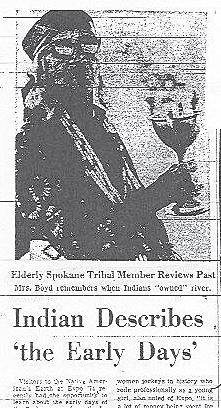
SPOKESMAN-REVIEW PHOTO ARCHIVES
This Spokesman-Review clipping details 90-yearold Spokane Tribe member Sadie Boyd’s efforts for Expo ’74.
it, Wash. The Spokanes were one of the featured tribes at the Indian presentations. Each day, Mrs. Boyd was on hand relating things from the early days that happened in the Spokane area.”
“One of her main stories – which are told in the Spokane language and translated by her daughter, Ida Boyd Thomas –concerned the acceptance of a flag by the Spokanes in a special ceremony in 1910.”
That event took place at the old Spokane fairgrounds and race track, Sadie Boyd said. Four tribal members accepted the flag and a cup – which she still has – from the federal government officials. She spoke that the presentation held special significance to the tribe at the time and the event was attended by other tribes. There were 50 tepees at the site for the ceremony.
Boyd noted that the Spokanes “are the people who own this area along the river. It is our own land,” she said. “And I am going to welcome all the people from the ‘old’ countries.”
She said the bringing together of people for Expo is good and gives the Indians a chance to “share with our visitors.”
The Spokesman-Review went on to report, “Mrs. Boyd was one of the first women jockeys in history who rode professionally as a young girl,” and also noted of Expo: “It is a lot of money being spent for playing.”
Boyd said “I am glad though” “that Mr. Nixon stepped on our dirt,” referring to the visit of the president opening day of Expo. “I hope his footprints will be here for all our lives and will be there for our children to see.”
“Mrs. Boyd aided in lining up of some 183 Spokanes who participated – and she will return with another group in August when she promised she will have more stories to tell the people,” the news clipping read.
Boyd showed that she is not tied to the past – the present and future of the Spokanes is uppermost in her mind.
“I asked Mr. (Robert) Dellwo (the Spokane tribal attorney) to talk about our reservation now,” she said. Sadie Boyd proved to be a popular attraction at the Indian site with tourists. She posed for a number of pictures as she chatted with visitors about the early days both in the Spokane area and on the Spokane reservation.
Etta Adams (Cox), the Whip Woman of Expo ‘74
Many of us clearly remember Etta Adams whose Indian name was
We are honored to have been part of Expo ‘74 and the 50th Anniversary celebration. May our community continue to come together peacefully in friendship, connection and belonging in the years ahead! The Church of Jesus Christ of Latter-day Saints of the Inland Northwest
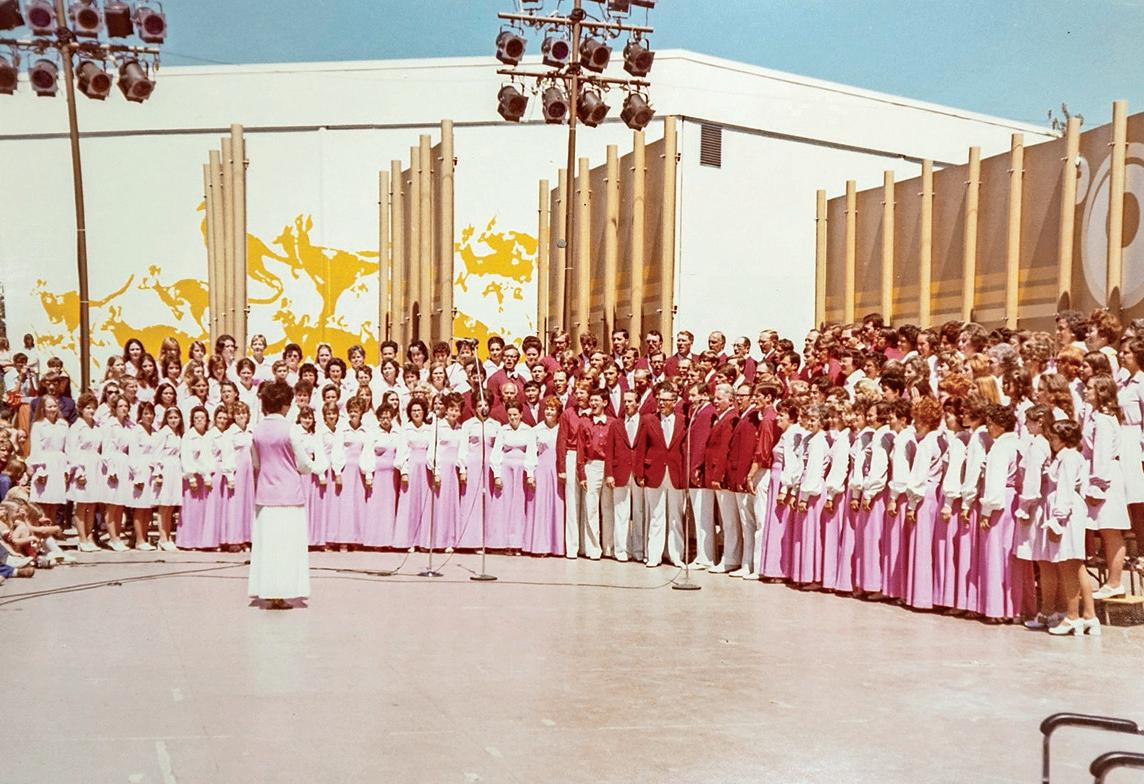
“Sapine” and “Big Mom” by her family served as “Whip Woman.” A Whip Woman is a special position held in the tribal war dance ceremony. It is a respected position that everyone listens to. She danced with a horse tail on her dance stick. Big Mom knew the dances, the songs and how we were supposed to behave. She was in charge and lined up all the dancers for grand entries. She also corrected the young people if we were chewing bubble gum or horsing around on the war dance floor. Kids weren’t allowed to horse around in case they may run into an eagle bustle and run into feathers. I was so struck by Sapine and her important role for the tribe I wrote a poem for her daughter Lillian Alexie and drew big mom’s picture in 1982.
“Etta Adams, so wise and strong.
Whip woman of Expo 74. She taught us right of wrong, Like so many before.
Now may she rest in peace, in her heavenly home, Green pastures and golden streets may she forever roam.”
The war dance circle brought us all together. It was unity of the local tribes and belonging for our people as we joined the circle. It’s a powerful concept that would not translate to white culture. We are singing the songs that our ancestors sang and performing the dances and ceremonies that our ancestors have done for thousands of years. It is a connecting back to our ancestors. A time where we are connected to the past and yet empowering our future by teaching and encouraging our young people.
Songs echoing across the river
Expo was a time when the songs of our people and tribes will echo across the river where we once lived in peace. Alex Sherwood reminisced on stories from his father and grandfather, “I remember this river so well as it was before the dams. My father and grandfather used to tell me how it was before the white man came; when, right below where we are standing, Indians from all over would gather every year from the annual salmon fishery.
It was beautiful then, with thousands coming for many miles. You could hear the shouting welcomes as they arrived, the dancing, the singing, the trading, the games, the races, always the hearty hugs and the fish! The fish sometimes so thick that it seemed that they filled the river.”
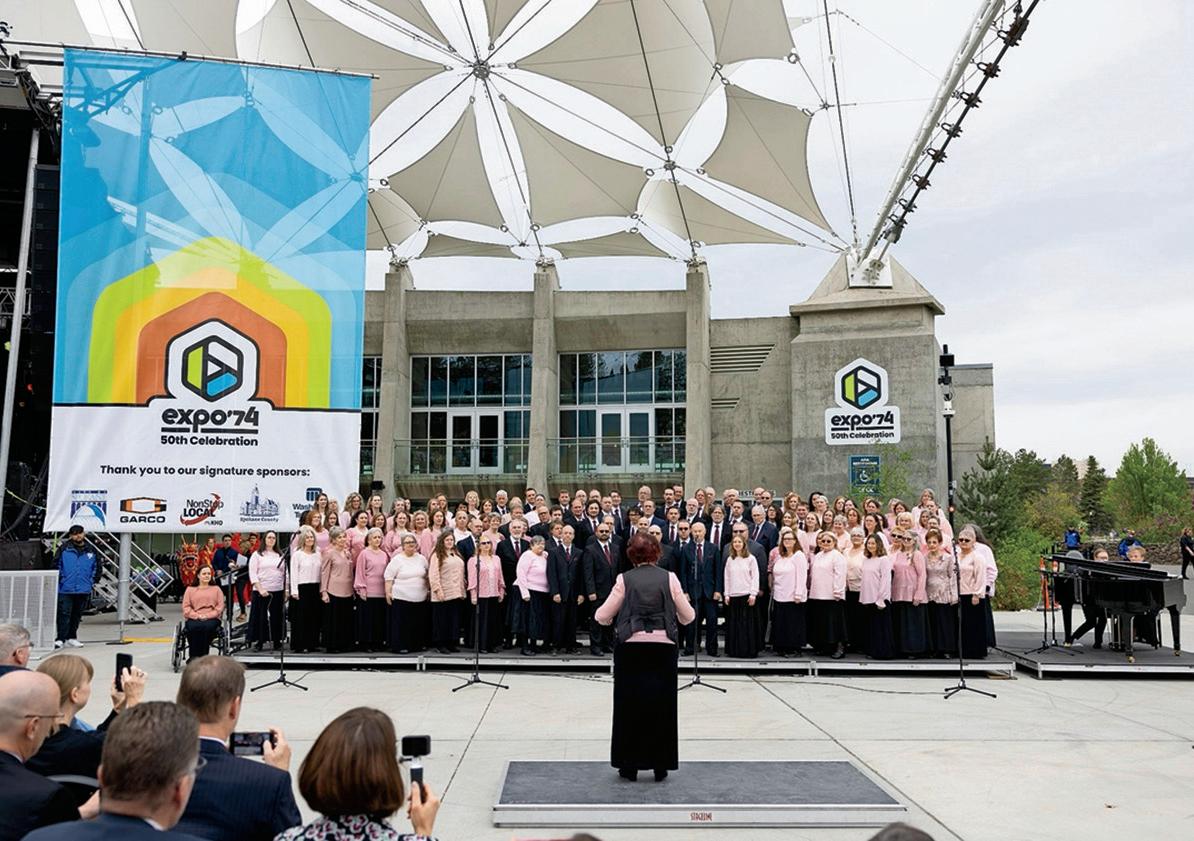




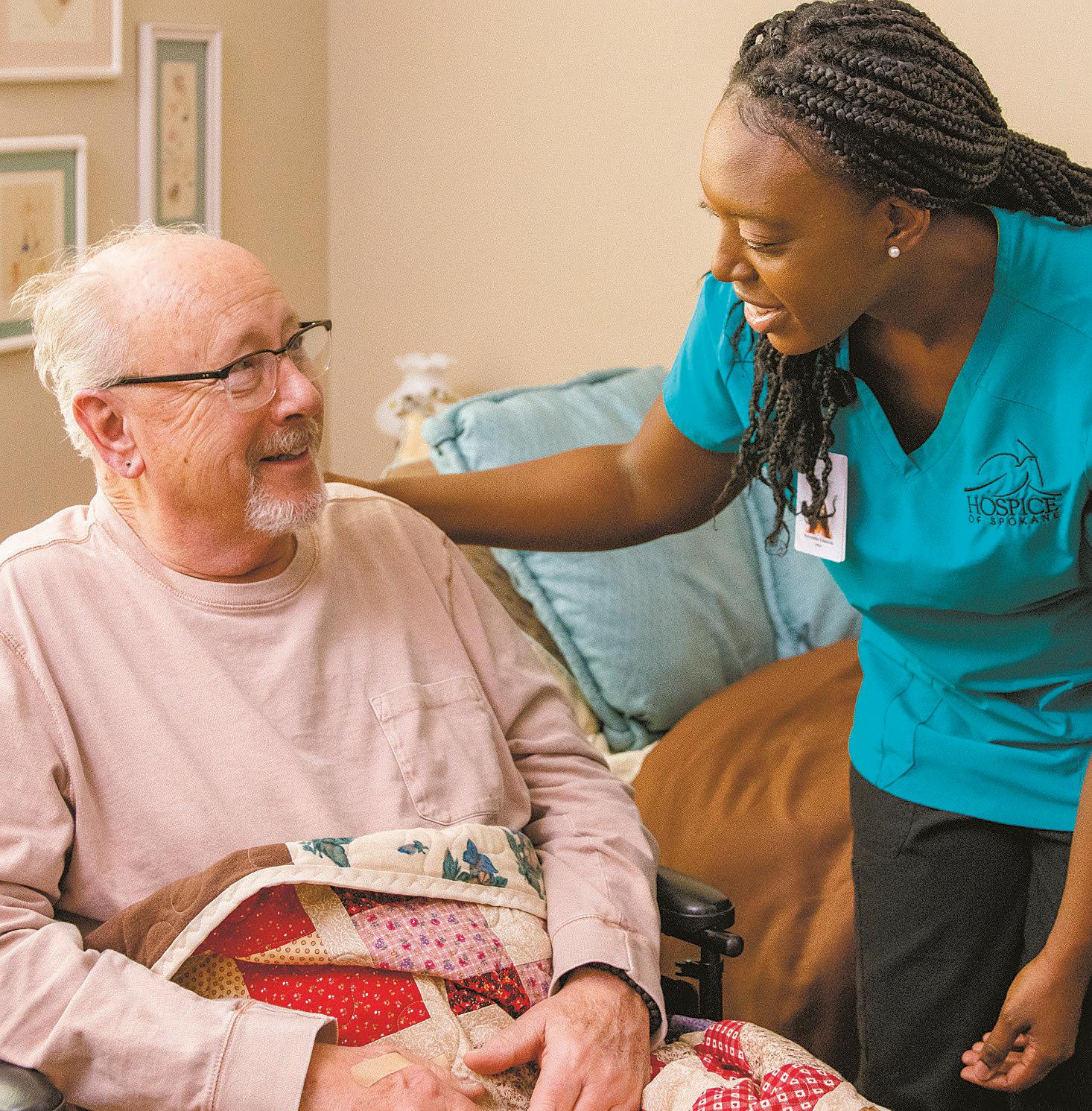

June 16, 2024 • Sunday • T11 Special SecTion
KARLYN FROST
HOSPICE OF SPOKANE, A COMMUNITY-BASED NONPROFIT HOSPICE, WAS AMONG THE FIRST HOSPICES IN THE UNITED STATES
HAS
DIGNITY. RESPECT. COMPASSION. 509.456.0438
hospiceofspokane.org
Mormon Expo ’74 Choir, the official choir of the World’s Fair
BRETT choir director in 1974 and 2024 The Regional Choir of The Church of Jesus Christ of Latter-day Saints, on May 4, 2024
AND
SERVED THE GREATER SPOKANE AREA SINCE 1977.
|
Hospice of Spokane offers care and support to patients with terminal illness and their loved ones. Through in-home skilled nursing care, home health aides for personal care, grief and bereavement counseling services, you and your loved one will be assured of the best possible quality of life to the end of life.
eXPO ’74 50TH annIVeRSaRy
Coloring Spokane’s World’s Fair
The Expo ’74 World’s Fair Coloring Book , printed by Lawton Printing, Inc. , was published in 1973. The multipage book, featuring downtown Spokane and the “ Great Northwest ,” had drawings by the monomymous Hamilton. It was distributed by Little Enterprises, Inc
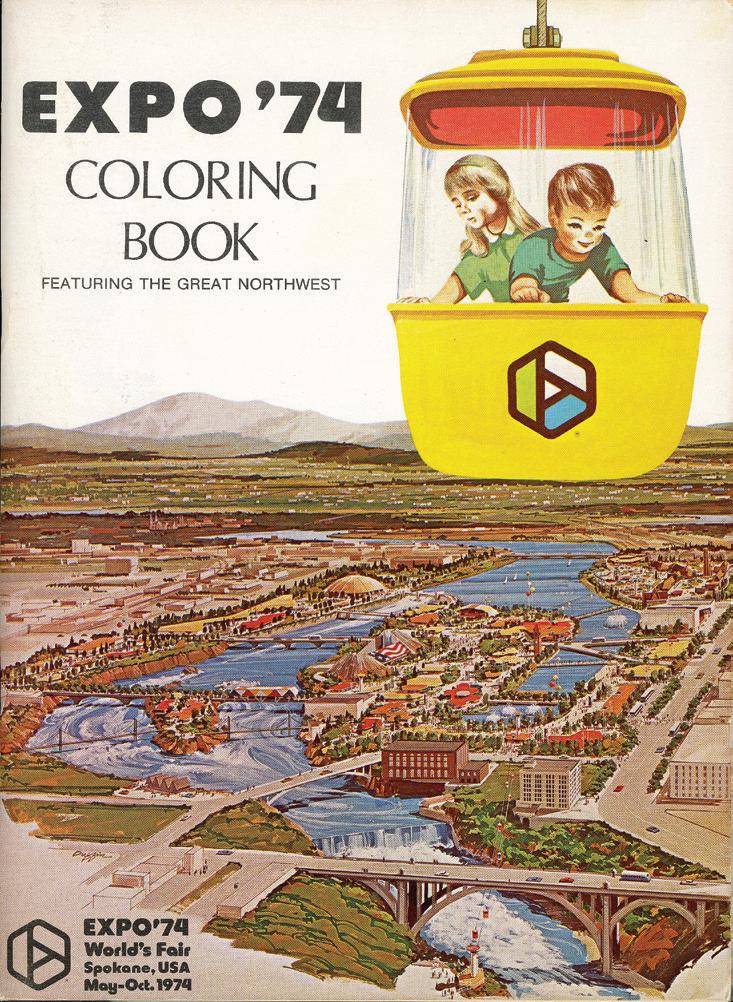
Coloring pages showed Expo visitors how to arrive: Via bus , plane , train and even a helicopter , before featuring the sites of the Spokane-area outdoors, like the Bowl and Pitcher and the “rolling”
Cascade Mountains Pages showcased the work of regional farmers and cute livestock before turning to mining and depictions of Native Americans , some which include outdated stereotypes.
Coloring pages then turned to area outdoor recreation, like horse racing and the Spokane Jets hockey team , before finally landing on exhibitions at Riverfront Park , like the Looff Carrousel , Clocktower , Washington Pavilion, Parkade and more.


T12 • Sunday • June 16, 2024 Special SecTion eXPO ’74 50TH annIVeRSaRy
head indicated that a Spokane exposition was “not only possible, but a damned good idea” (Youngs, 172). They also commissioned Economics Research Associates to do a further study on the economics and logistics of an exposition. That report, issued in September 1970, was a ringing endorsement of the idea.
It said that a world’s fair would, in one monumental effort, solve the city’s urban renewal problem and “recapture the natural setting of its falls” (Youngs, 174). The target date: 1974.
The race begins
Then the race began to get a world’s fair funded, planned, publicized, built and opened in less than four years. King Cole would later jokingly summarize the three phases that a big project like this must endure:
1. “You’ve got to be kidding!”; 2. “My God, the dummies are going to do it! They’re going to ruin us!”; 3. “They’re doing it and it’s working. Gee, that was a great idea that I had” (Youngs, 178-179).
The centennial committee was transformed into the Expo ’74 Corporation, which quickly extracted pledges of $1.3 million in start-up money, mostly from local businesses. Corporation members then went to the Washington state Legislature, whose support was crucial if the idea was to advance at all.
In March 1971, the legislature easily passed three bills – one to form an Expo Commission, one to authorize an Expo surtax on corporate licenses and fees, and one to appropriate $7.5 million (later increased to $11.9 million) to build the Washington State Pavilion, which would later become the Spokane Opera House and Convention Center.
Winning votes at home proved to be more difficult.
The city authorized a vote on a $5.7 million bond issue, which would pay for removing the downtown tracks and trestles and clearing Havermale Island. The money was not specifically for Expo ’74, yet the vote was widely seen as referendum on the fair, since it would provide the fair’s setting.
Local opposition was vocal. Some people believed wealthy downtown interests were foisting the project upon the community; they took to calling it “Exploit ’74” (Youngs, 290).
Some feared it would be a financial fiasco, and others feared it would lead to growth and big-city problems. When the votes were counted on Aug. 31, 1971, the bond issue had 57% approval – a solid majority, but agonizingly short of the 60% needed to pass.
The disheartened supporters believed they had two alternatives: either they could abandon the fair altogether or push through a temporary business-and-occupation tax.
The B&O tax was traditionally anathema to the Spokane Chamber of Commerce and generally “about as popular as a skunk at a garden party,” said one Expo backer (Youngs, 188). Yet this case was different, because the chamber and the big downtown businesses were solidly committed to Expo ’74. In the end, all seven members of the Spokane City Council held their noses and voted for the B&O tax on Sept.
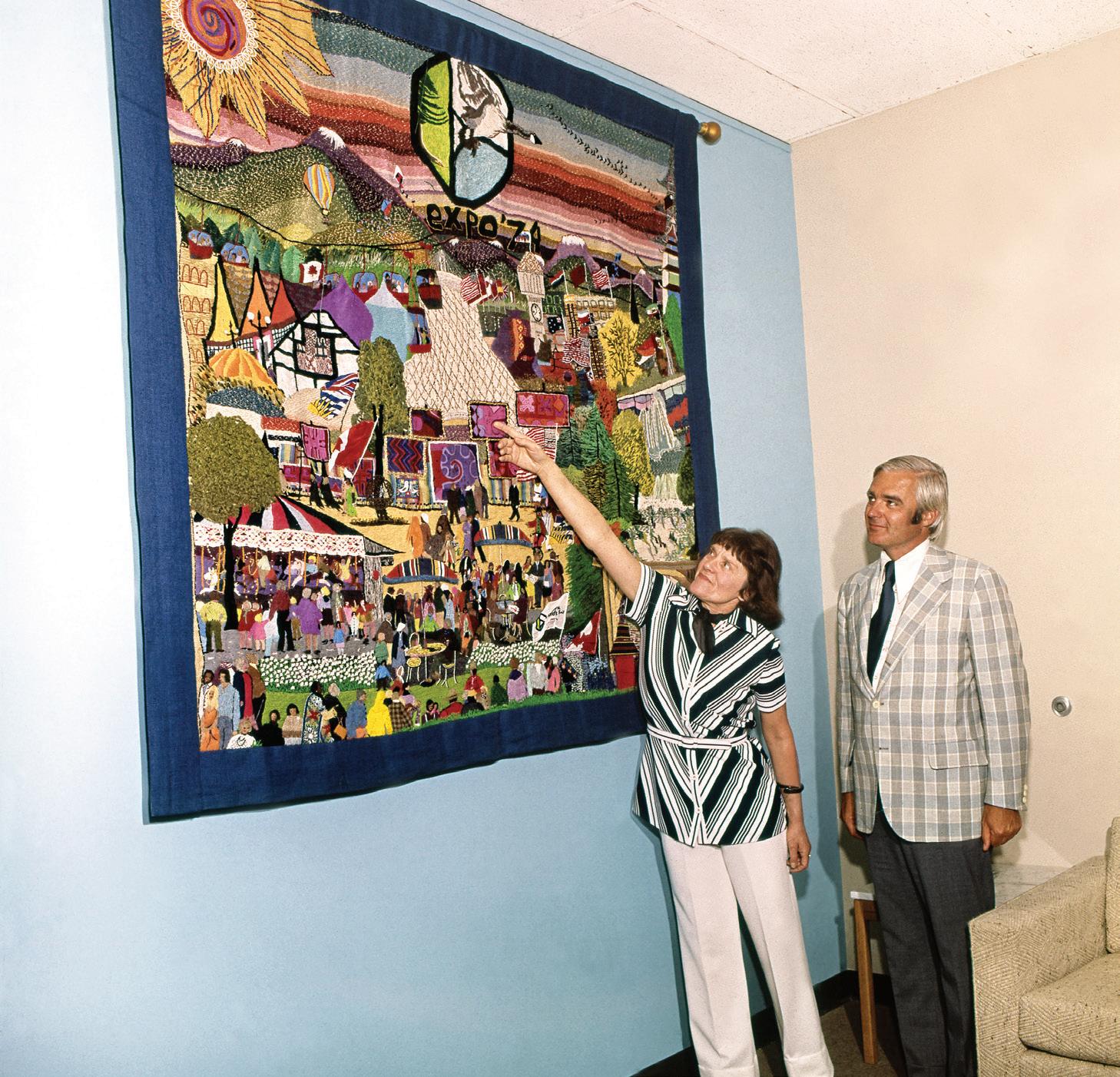
20, 1971, despite the fact that four of them were facing re-election the very next day. The tax raised the necessary $5.7 million to tear out the tracks, open up Havermale Island and, in essence, make Expo ’74 possible. In October 1971, President Richard M. Nixon gave Spokane’s Expo ’74 his official sanction. Then it needed to clear its “last and biggest” hurdle, a halfa-world away in Paris (Official Program, 17). Cole and the Spokane delegation went to the Bureau of International Expositions in Paris in November 1971. After lengthy but mostly cordial discussions, Expo ’74 received the bureau’s unanimous sanction as an official “special exposition.” The Paris bureaucrats were apparently smitten with Spokane’s “little old country town” humility and gumption (Youngs, 196). A Bicentennial-themed exposition in Philadelphia for 1976 was also approved.
In 1972, Washington’s powerful Congressional delegation, led by Sen. Henry “Scoop” Jackson, Sen. Warren Magnuson and Rep. Thomas Foley, painstakingly shepherded through Congress an $11.5 million appropriation to build the U.S. Pavilion. Back in Spokane, Expo backers and city officials pulled off a crucial coup: They persuaded the city’s three railroads to move. The Union Pacific, Milwaukee Road and Burlington Northern donated 17 acres of land to the city, worth many millions, and consolidated their routes to tracks away from downtown. It took many months of tense negotiations, and a series of complex land swaps, but one of Expo ’74’s key goals had already been accomplished: “The Spokane River was now cleared of railroad steel” (Official Program, 18).
The two depots were also torn down – all except for one iconic piece of the Great Northern depot. It was the 155-foot-tall clocktower, with its clock face measuring 9 feet in diameter. It would immediately become one of the most recognized symbols of the fair, and of the city itself. The city also purchased some land using urban renewal grants from the U.S. Department of Housing and Urban Development.
Inviting the world
That same year, Presi-


dent Nixon issued an official proclamation inviting the world to Spokane’s Expo ’74. Now, Cole’s job was to persuade the world to show up. He traveled the world and soon landed a big fish, the Soviet Union, which committed to a $2 million pavilion. This gave Expo ’74 instant credibility and publicity, since the Soviet Union had not had a world’s fair exhibit in the U.S. since 1939-40. In the end, it proved difficult to lure national pavilions to faraway Spokane, especially European nations. Expo ’74 eventually landed Japan, the Republic of China (Taiwan), South Korea, Canada, Australia, Iran, West Germany and the Philippines. It was a “disappointing return,” yet it was offset by the fact that the Soviet Union’s pavilion alone “covered more space than all of the foreign exhibits combined at Seattle’s 1962 World’s Fair” (Youngs, 236).
Luring corporate pavilions proved to be easier. Ford, General Motors, General Electric, Eastman Kodak, Boeing and the Bell Systems signed up for pavilions. So did the states of Oregon and Montana, and the Church of Jesus Christ of Latter-day Saints. In the end, Expo ’74 would cover 100 acres, slightly larger then Seattle’s Century 21 World’s Fair in 1962, but less than a tenth the size of the New York World’s Fair in 1964. The Expo ’74 site, which included a broad stretch of riverfront, as well as Havermale Island and Cannon Island (sometimes called Crystal Island), was formally dedicated in May 1972.
Preparations and panic
The next two years were both tense and exhilarating, as the site was transformed from rail yard to mud pit to environmental showcase. The fair weathered a leadership crisis in the summer of 1973 when the U.S. Department of Commerce determined that it needed an experienced fair manager. They brought in a new general manager, Petr Spurney, a veteran D.C.-area exhibition manager and planner. Cole remained as the fair’s president, yet his role shifted toward his strengths: selling the fair to the world. He traveled the country, appearing on TV shows such as “The Merv Griffin Show.”
With the May 1974 dead-
line approaching, new doubts began to surface about the city’s ability to pull off the event. The Philadelphia Bicentennial Expo had already been canceled, and some outsiders were skeptical that Spokane could pull off what Philadelphia could not. A few insiders were skeptical, too. Six months before opening, one of the backers came up to Cole, tears streaming down his face, and blubbered, “King, you’ve got to call it off, you’re gonna bankrupt the town!” (Youngs, 342). Cole was unfazed, since he had been warned by Seattle’s Gundy to expect exactly that kind of preopening panic.
Even comedian Bob Hope (1903-2003) was a bit skeptical several months before the opening. He had come to film promotional ads for the fair, and after a tour, he told fair officials, “It scares me when I see all that mud out there. Are you sure you’ll be ready to open on time?” (Bowers, 12). They assured Hope, somewhat nervously, that everything was on schedule. Up on the Clocktower, a huge countdown sign displayed the days left until opening. The number went down to single digits before all of the construction was finished, all of the sod was laid and all of the paving was done. Even the fair’s executives had to pull a few all-nighters, right before opening, planting flowers in the garden beds.
An international flavor
On May 4, 1974, President Nixon officially declared the fair open, in a ceremony attended by 85,000. Under normal circumstances, the president’s presence would have been an unmitigated coup for Expo ’74. When Nixon’s visit was first announced, Cole said, “This is an outstanding way for our fair to be recognized, as we have been an underdog and people didn’t think we could put it together at all” (Youngs, 374). But these were not normal circumstances.
Nixon was deeply embroiled in the Watergate scandal that spring and was at the nadir of his popularity. Five days earlier, he had released partial transcripts of the damaging tapes that would soon undo his presidency. However, his visit was a public relations victory for Expo ’74, because it ensured that the eyes of the world were on Spokane for
opening day. About 1,200 journalists were accredited for the opening. The opening day reviews were mostly positive. Expo ’74 clearly benefited from low expectations. Cole overheard a conversation in which an Associated Press reporter complained to a colleague that “it’s not as much fun as I thought it would be” because he had wanted “to make fun of this place, but this is too nice to do that” (Youngs, 396).
A subsequent AP story said, “Absent is any hint that Expo, as wags suggested, is a big country fair. It has a true international flavor” (Youngs, 395).
The fair and its pavilions
Attendance remained strong, averaging about 35,000 per day over the summer months. About half came from Washington state, followed by visitors from, in order, California, Oregon, Montana and Idaho. Only around 10% came from foreign countries, and most of those were from nearby Canada, making the “world’s” part of World’s Fair seem to be an overstatement. However, by the fair’s end, an estimated 100,000 people from countries other than the United States and Canada had visited.
And what did they see? Among the foreign pavilions, the behemoth was the 54,500-square-foot Soviet Pavilion. Visitors walked past a giant statue of Lenin’s head and a 4,500-pound aluminum relief map of the USSR, into a maze of “myriad spotlights, Daliesque artificial trees, fountains, chrome, plastic bubbles and colored liquid coursing through miles of transparent tubing” (Hill). It was filled with dioramas and displays about topics including urban renewal, nuclear physics and forestry. The pavilion’s message about the fair’s theme, the environment, seemed to one New York Times reporter to be “a phantasmagorical statement of how Russia’s magnitude, might and diversity overshadow such mundane annoyances as dirty water and unbreathable air” (Hill). And on top of everything else, the pavilion had three movie theaters, one of which showed trained bears playing ice hockey.
The U.S. Pavilion, housed in its iconic tilted vinyl canopy, had a different perspective, with “mountainous displays of how we abuse our intrinsically magnificent environment” (Hill). The main attraction was an IMAX movie showing stomach-churning views of the Grand Canyon and high-speed motorcycle races. “Barf bags” were available for those who got motion sickness. The U.S. Pavilion was by far the biggest, covering 179,250 square feet under a 14-story
steel mast. The Japan Pavilion featured a serene formal garden, yet dwelt on the country’s many environmental horrors. The Republic of China’s fan-shaped pavilion contained one of the fair’s biggest hits: a multimedia show on a 180-degree screen, with “three movie projectors and 28 slide projectors” along with rear-screen projector to simulate “lightning, fireworks and a moonrise” (Youngs, 448). Canada’s exhibit was on the newly renamed Canada Island (formerly Cannon Island). In fact, the entire island was Canada’s outdoor exhibit, featuring playgrounds, Indian totem-carvers and an outdoor theater, all to the roar of the Spokane Falls. Youngs called it “nearly perfect as a display in an exposition devoted to the environment” (Youngs, 447). Canada Island was renamed in 2017 to snxw mene’ – Salish words pronounced sinHOO-men-huh that mean “salmon people.” Visitors collected “passport stamps” from each country’s pavilion. Despite the fact that only 10 stamps comprised a complete Expo ’74 international set, it was nearly impossible to collect them all in one day, even on a weekday when the lines were short. One reporter noted that simply walking, at a fast pace, from one end of the fair to the other took a minimum of 30 minutes.
Entertainments and attractions
Meanwhile, there were dozens of other attractions. The largest corporate pavilion was the 13,000-square-foot Bell System Pavilion, where children could make phone calls to Mickey Mouse, Snow White and other Disney characters. The Ford Pavilion was mainly about the outdoors – and also about Henry Ford’s love of nature. The domed Kodak Pavilion was about “photography’s role in the study and preservation of the environment” (Bowers, 104). Both the General Motors and General Electric pavilions made the case that improved technology could reduce pollution. GM showcased its new emission control system – as well as an electric two-seater car. Washington had the biggest state pavilion, encompassing the new 2,600-seat Opera House and an extensive art gallery. It also housed one of the surprise hits of the fair, the Kino-Automat. This was a 400-seat theater that showed two Czech-filmed comedies in which the audience was allowed to vote, with buttons at each seat, on the direction of the plot at key intervals. One of the films was for kids, and “audience
See HISTORY, 14










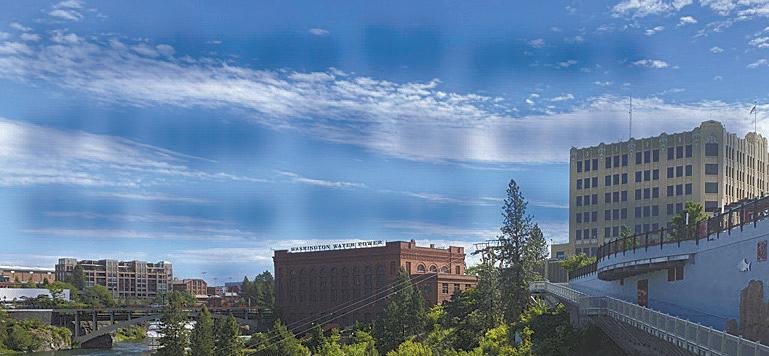
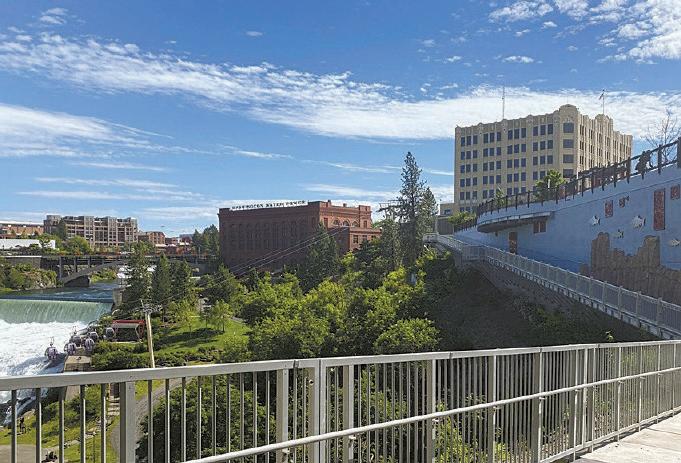
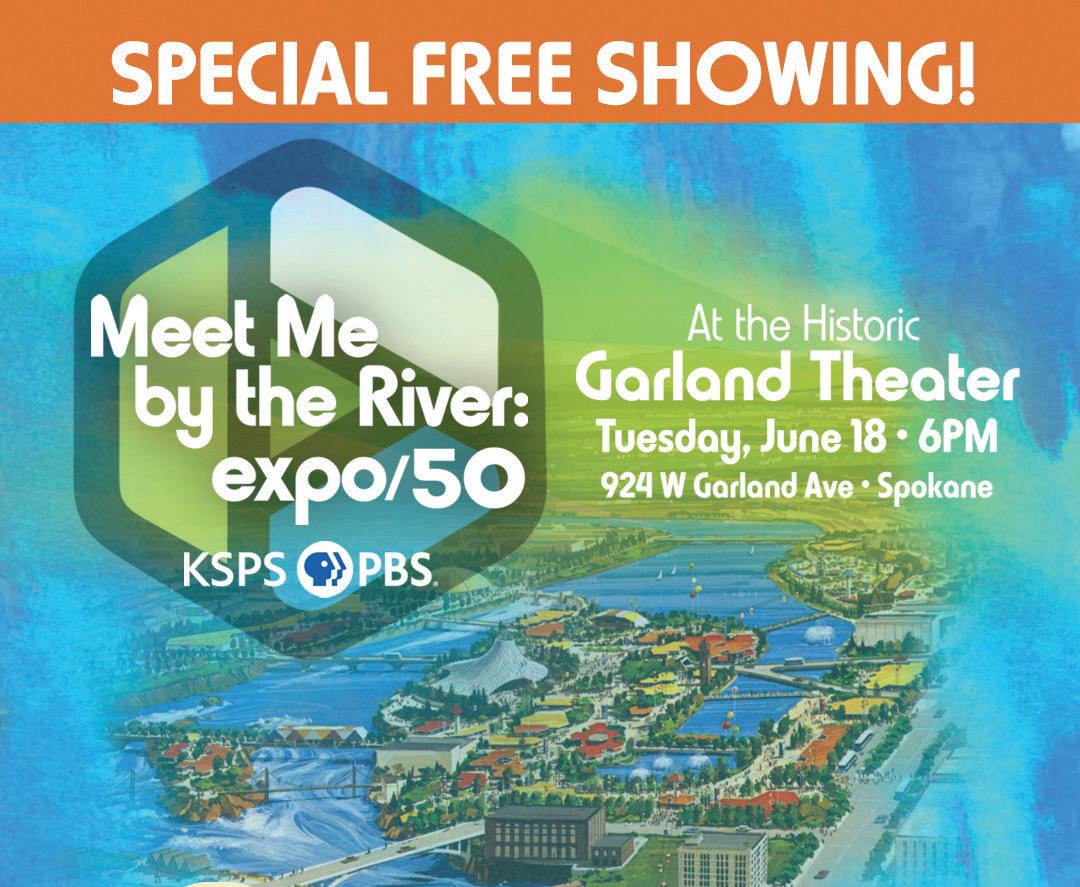
June 16, 2024 • Sunday • T13 Special SecTion Discover New Lifestyle Benefits 509.922.3100 EVERGREENFOUNTAINS.COM 1201 N. EVERGREEN RD., SPOKANE VALLEY Tours Now Available! LIVING OPTIONS Independent Living Assisted Living Light Assisted Living Cottage Homes LIFESTYLE BENEFITS Wellness & Fitness Activities Social Events Gourmet Dining $1,000 FREE Move In Service Celebrate 50 years of Expo ‘74 by walking the new Great Gorge Loop Trail Find a map here
HISTORY Continued from 3
eXPO ’74 50TH annIVeRSaRy
SPOKESMAN-REVIEW PHOTO ARCHIVES
Elsa Bryan points out flags on Primitive Art piece to Jack Geraghty.
participation was certainly less inhibited in the children’s version,” because the kids tended to shout their instructions at the characters instead of just pushing the buttons (Bowers, 107).
An amusement area was tucked in the southeast corner of the park, including a $500,000 roller coaster from Germany and an 85-foot-tall Ferris wheel from Italy. For 70 cents a ride, visitors could hop on contraptions called the Universa, Himalaya, Roundup and Apollo 11.
Two different kinds of rides, the Sky Rides, were people-movers. One was essentially a two-person ski chairlift, intended to transport people from one end of the fair to the other. The second was an enclosed Gondola that transported sightseers across the thundering Spokane Falls. The Gondola dropped so close to the falls that the windows were sprayed by the mist. That ride remained after the fair and become part of Riverfront Park.
When fairgoers were asked 40 years later for their Expo ’74 memories, many people vividly recalled the food, which included Danish aebleskiver , Russian borscht and – most popular of all – sausages, schnitzel and Munich beer at the Bavarian Beer Garden. Some pavilions, including the Soviet Union’s, had their own restaurants serving that country’s specialties. The rest of the food was served by vendors clustered in the Food Fair portion of the grounds. There, visitors could order Philippine Camaron Rebosado, Indian curry, French onion soup or Japanese tempura.
As the official program pointed out, it was entirely possible to spend only $10 a day at Expo ’74. The tally went something like this: $4 for admission, about 70 cents for a meal from a food stand (or $3 for a formal, sit-down dinner), a stein of German beer for 80 cents, a souvenir for a dollar or two, and $1.40 to ride the roller coaster and Ferris wheel. All of the exhibits and pavilions were free with the price of admission.
Music at the fair
That left enough money to buy a ticket to one of the almost daily concerts, most of them in the newly built Spokane Opera House, part of the Washington State Pavilion. The concert lineup was probably the most truly international aspect of the entire fair. It included Marcel Marceau, Victor Borge, Margot Fonteyn and the London Ballet, Isaac Stern, Itzhak Perlman, The Moiseyev Dancers of Russia, The National Dance Company of Senegal, Festa Brazil, the Republic of China Acrobat Spectacular, the Georgian State Dancers and Singers, the Japanese Folkloric Dance Company, and the Royal Shakespeare Theatre with Sir Michael Redgrave and Dame Peggy Ashcroft.
The big entertainment names included Liberace, Bill Cosby, Bob Hope, Jack Benny, the Pointer Sisters, Helen Reddy, the Carpenters, Grand Funk Railroad, Bachman-Turner Overdrive, Merle Haggard, Buck Owens, Van Cliburn, Chicago, Charlie Pride and Ella Fitzgerald.
Mike Kobluk, Expo ’74’s director of visual and performing arts, had been a member of the Chad Mitchell Trio in the 1960s, so he used his connections to lure some of folk’s biggest names: Harry Belafonte, Glenn Yarbrough, Gordon Lightfoot, the Irish Rovers and John Denver. Denver was at the peak of his popularity – “Annie’s Song” hit No. 1 on the Billboard charts during Expo ’74 – and incited a fan frenzy when he tried to tour the fair with Kobluk.
“He was just totally mobbed – we got 200 yards into the site from our offices and realized there was no way we could do this,” Kobluk said (Youngs, 409). They had to hustle him into a limousine and send him back to the hotel.
Expo ’74 also had a separate Folklife Festival, which encompassed folk music, dance and crafts from the Northwest and from a huge variety of ethnic groups. At various times on the Expo ’74 grounds, visitors could
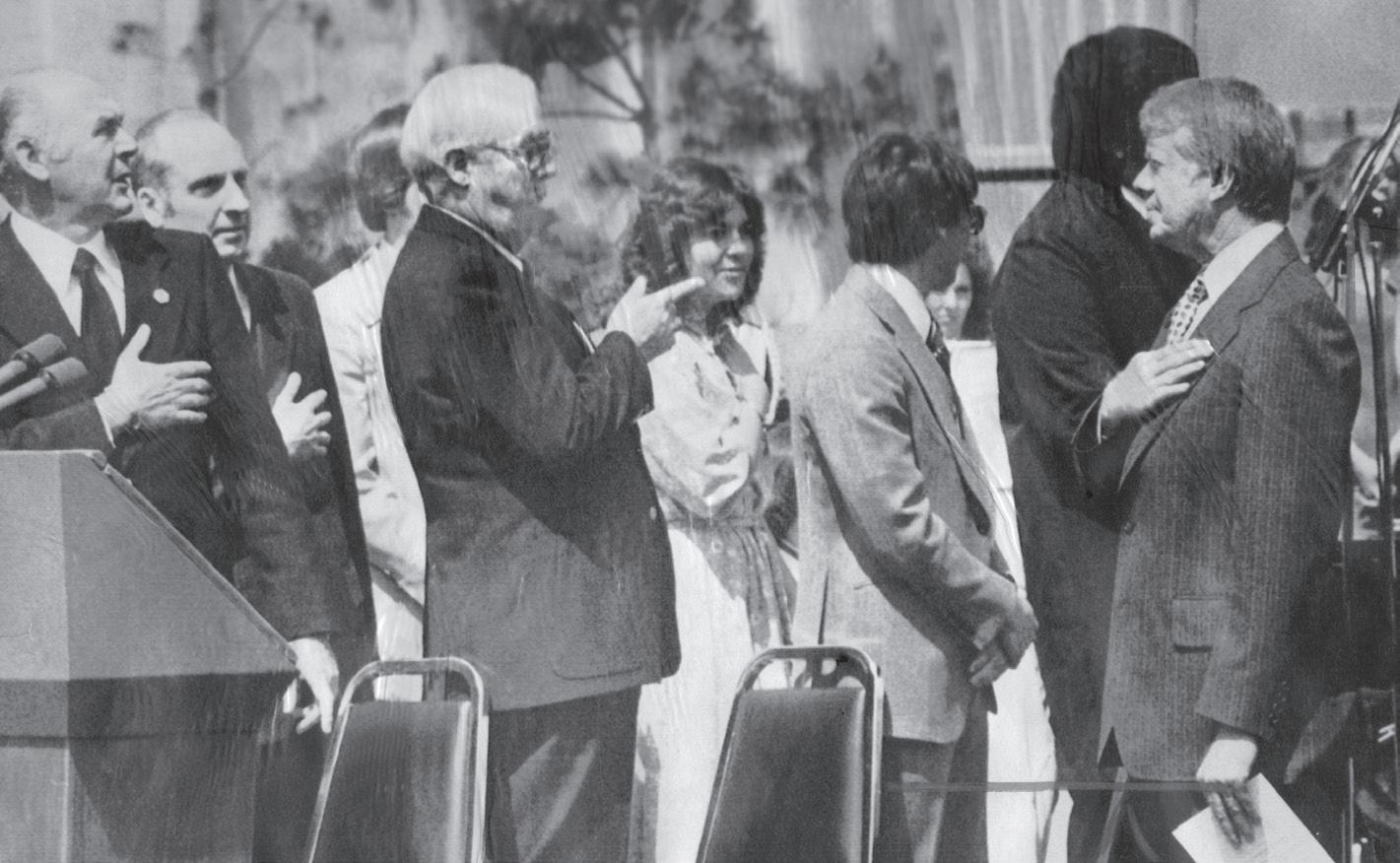
hear bagpipes skirling, watch a demonstration of Basque sheepherding and witness a Roma wedding. Calvin Trillin, writing for the New Yorker, called the Folklife Festival “either the best thing at the fair, or a way of making fun of everything else, depending on your mood” (Trillin). He called it “informal instead of rigid,” and said that it “emphasized participation – helping to build a boat or learning how to rope a calf or jousting on logs” (Trillin).
An American Indian exhibit, called Native American’s Earth, adjoined the Folklife Festival and provided a look at an entirely different kind of folklife, intrinsic to this particular spot on Earth. The Spokane Indians, who had fished for salmon for millennia below the Spokane Falls, were among the organizers and main participants, along with several other Northwest tribes. They also invited more far-flung tribes, including the Apaches and the Mexican Aztecs, for weeklong visits. The tribes staged dances, in which they encouraged others to join in – including, most memorably, Russian gymnast Olga Korbut, who was at the fair to perform an exhibition. Native American’s Earth proved to be one of fair’s most popular attractions.
Expo’s environment, Exxon’s environmentalism
The most powerful attraction of all wasn’t a pavilion or an exhibit – it was the mighty Spokane Falls. Visitors could feel the spray from several footbridges and from the Gondola ride, as well as from the many walkways along the riverbanks. One Chicago visitor said he would remember two things about Expo ’74, the “wonderful fresh air” and the “wonderful turbulent river that cut right through the grounds” (Youngs, 396). He said he sometimes sat “for an hour or so, just watching the water pour through there” (Youngs, 396). This was fitting since the falls were, in essence, the root cause of the fair. It was also fitting, for a fair dedicated to the environment, that the iconic symbol was something nature-made, not manmade. The media reviews were largely positive, and many of them noted this fact.
Sunset magazine wrote that “Expo’s biggest show is its site, the crashing falls, the sound of water, the river overlooks” (Youngs, 498). The mixed, or negative, reviews often cited the inherent hypocrisy in having a preachy save-theearth theme, even from the likes of General Electric, General Motors, Ford and the government of the Soviet Union. Trillin wrote, “From whom do we acquire our information about how shrimp get along with oil rigs? From the Sierra Club? ... . No, from Exxon” (Trillin). Meanwhile, the meatier Expo ’74 environmental programs, a series of environmental panels and symposia, were sparsely attended. Those who did attend were not typically fairgoers, but earnest environmentalists preaching to a tiny choir.
Nobody satirized Expo ’74’s environmental pretensions more thoroughly than the Yippies, the radical and mischievous Youth International Party founded by Abbie Hoffman. Two local Yippies organized a summer hippie encampment in a riverside park they named People’s Park.
Dozens of Yippies and other activists from around the country arrived at the camp throughout the summer. They held marijuana smoke-ins and embarked on occasional protest forays into Expo ’74 itself. They shouted slogans such as “Environmental World’s Farce,” and “Expo is Polluting the Area” (Youngs, 447). Once, somebody set fire to an Expo banner, causing police to arrest a dozen protesters, although the charges were later dropped.
Trillin also touched upon another weakness of the Expo’s environmental theme: the tedious nature of constant nagging and constant earnestness.
He wondered whether the Soviets, with their pavilion, were “engaged in a plot to bore the world into submission” (Trillin). However, Expo’s environmental mission was certainly not entirely unsuccessful. One visitor, reminiscing 40 years later, said, “This theme really sunk into me as a boy ... . To this day, I would never even consider littering” (“Hello World”).
A great big paid-off party
The vote of the populace – in the form of ticket sales – was positive from the beginning. Attendance hit the 1 million mark on June 8, nine days before projections, and remained strong throughout the summer, averaging about 35,000 per day. The crowds dropped off after school began in the fall, but then picked up toward the November closing date, as people realized that time was running out. The fair’s fourth-largest crowd arrived on Nov. 2, and the second largest came for closing day, Nov. 3. Attendance was 62,438 on that day. The final tally: 5,187,826 visitors, nearly identical to the organizers’ optimistic projections. Compared to attendance at other world’s fairs, it was near the low end, and only about half of what Seattle had attracted in 1962. However, it was a clear success for off-the-beaten-track Spokane.
The financial situation looked rockier, at least at first. A few months after the fair’s close, the Expo ’74 Corporation announced it had a $723,961 deficit. However, the deficit was soon paid off by calling in the pledges made by local donors back in 1970. Many of those same donors came out financially ahead, because of the interest they made on their Expo bonds.
Also, the hated B&O tax, which made the fair possible, was removed in 1975, three months ahead of schedule. Tax revenues had been higher than projected, due to increased business generated by the World’s Fair. A story in The Spokesman-Review on closing day was headlined, “Local Businessmen Bask in Cash Glow of Expo Days” (Ream).
Mayor Rodgers’s pithy quote – “reduced to its essentials, we gave a great big party and the rest of the world came and paid the bill” – wasn’t entirely accurate, since taxpayers had footed plenty of the bill (Youngs, 503). Yet the world did in fact help Spokane pay for what it could never have afforded on its own: the permanent transformation of Spokane’s downtown riverfront.
The coming of Riverfront Park
As soon as Expo ’74 was dismantled, work began on transforming the site into Riverfront Park. In 1978, a
Center (the Opera House is now called First Interstate Center for the Arts). Spokane’s downtown was given new energy, and it remained stronger commercially than the downtowns of many similar-sized cities. Today, shoppers, tourists and downtown office workers stroll unimpeded to the river and the falls. Rodgers wrote in 2006 that the park complex “changed the entire character of the downtown,” and continues to do so today (Rodgers). In others words, Expo ’74 accomplished precisely what it was intended to accomplish.
new president, Jimmy Carter, came to Spokane to dedicate the park, which subsequently become the center of many of Spokane’s biggest celebrations, including its Fourth of July and New Year’s Eve festivities, as well as its big annual sports festivals, Bloomsday and Hoopfest.
Meanwhile, the Washington Pavilion was sold by the state to Spokane for $1, and became the Spokane Opera House and Convention
Forty years later, evidence of Expo ’74 is easy to find. The clocktower and the tilted dome of the U.S. Pavilion (minus the vinyl covering and recently with LED lighting) still dominate the park’s skyline. Beyond it all rumbles the reason for Expo ’74’s existence: the majestic Spokane Falls.
From the safety of the Gondola ride, Riverfront Park visitors can still experience the roar and the spray.
Sources: J. William T. Youngs, The Fair and the Falls: Spokane’s Expo ’74, Transforming an American Environment (Cheney: Eastern Washington Uni-
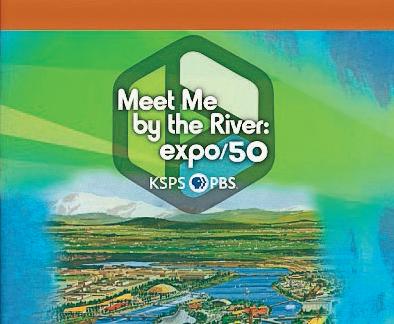

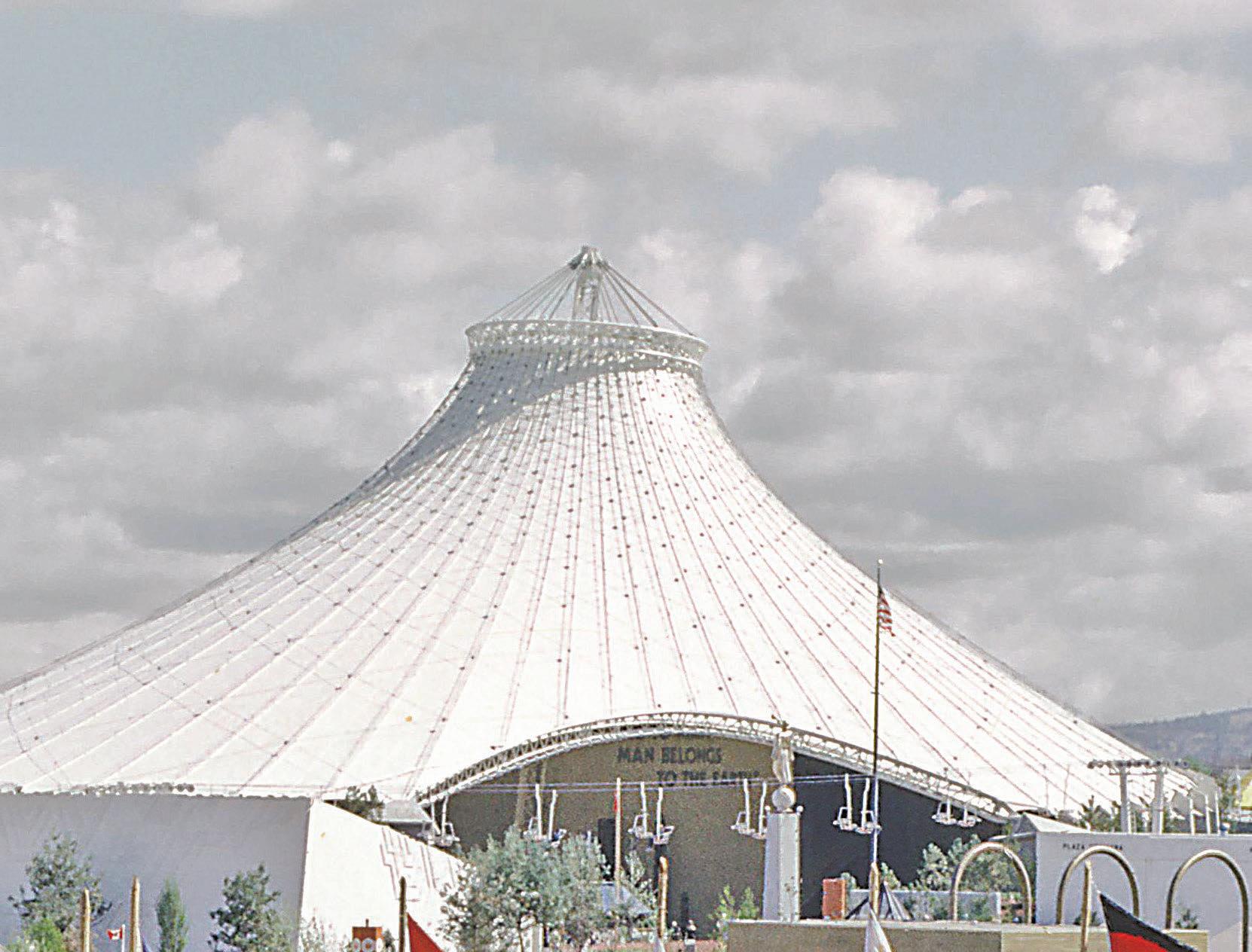
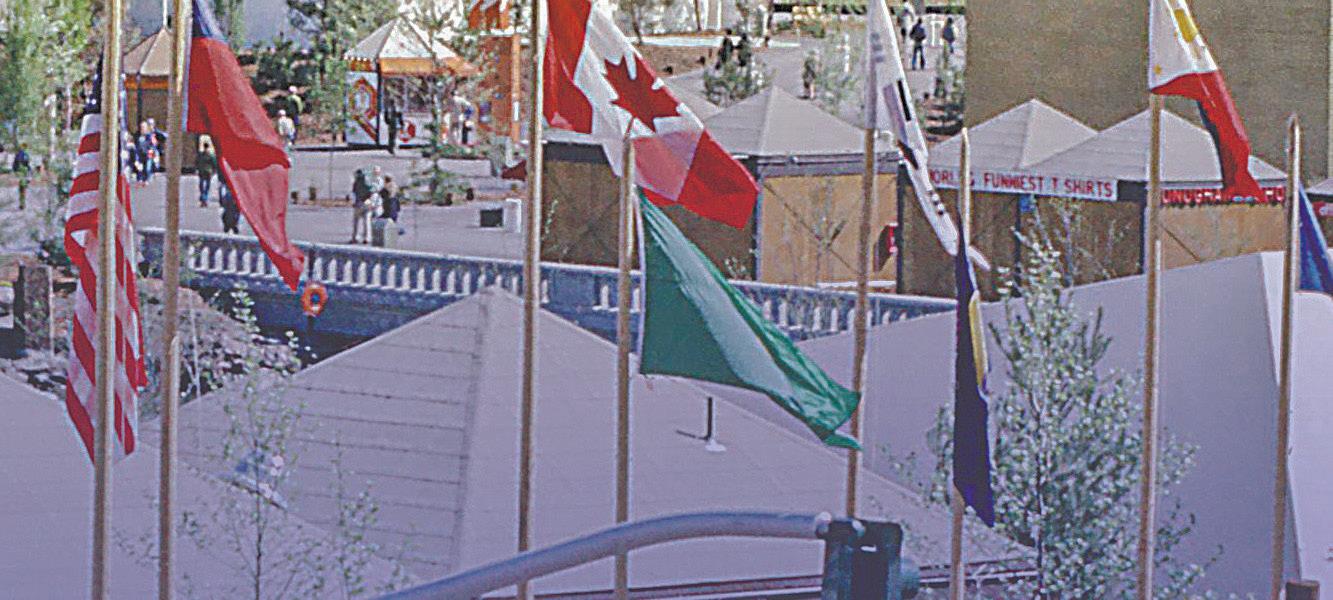
LEGACY
is downtown
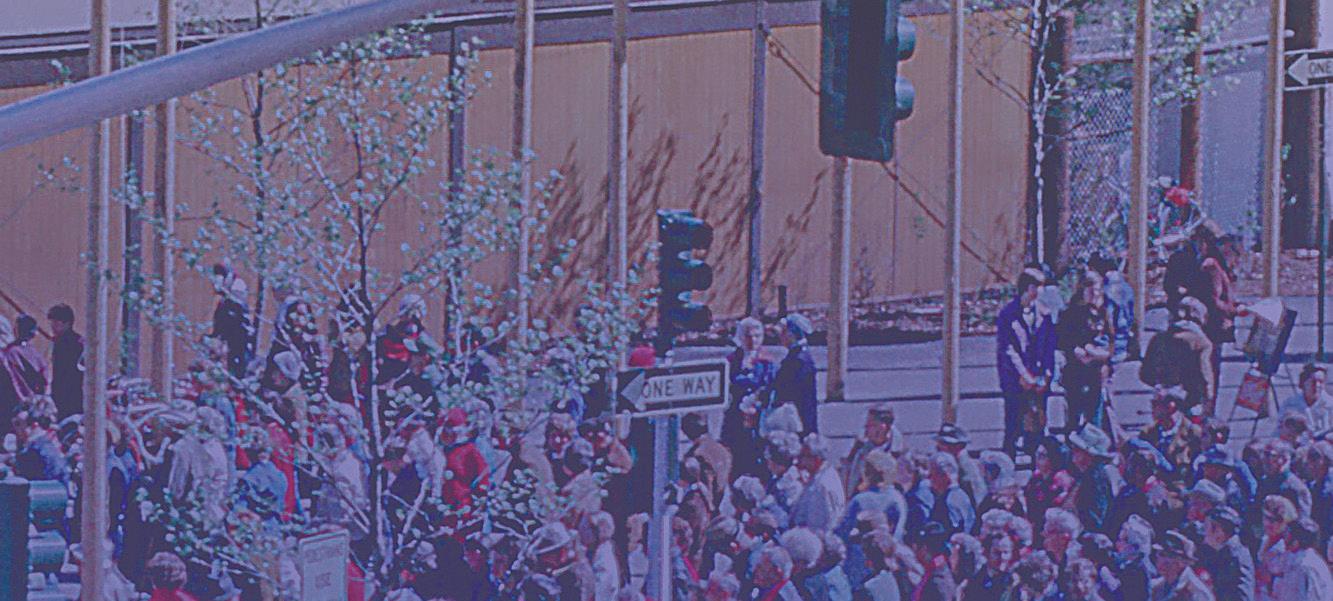
In 1974, downtown Spokane was transformed forever when a former railyard hosted the World’s Fair, giving rise to the iconic Riverfront Park. This landmark event not only fueled economic growth but also ignited a spirit of unity and dedication to urban preservation.
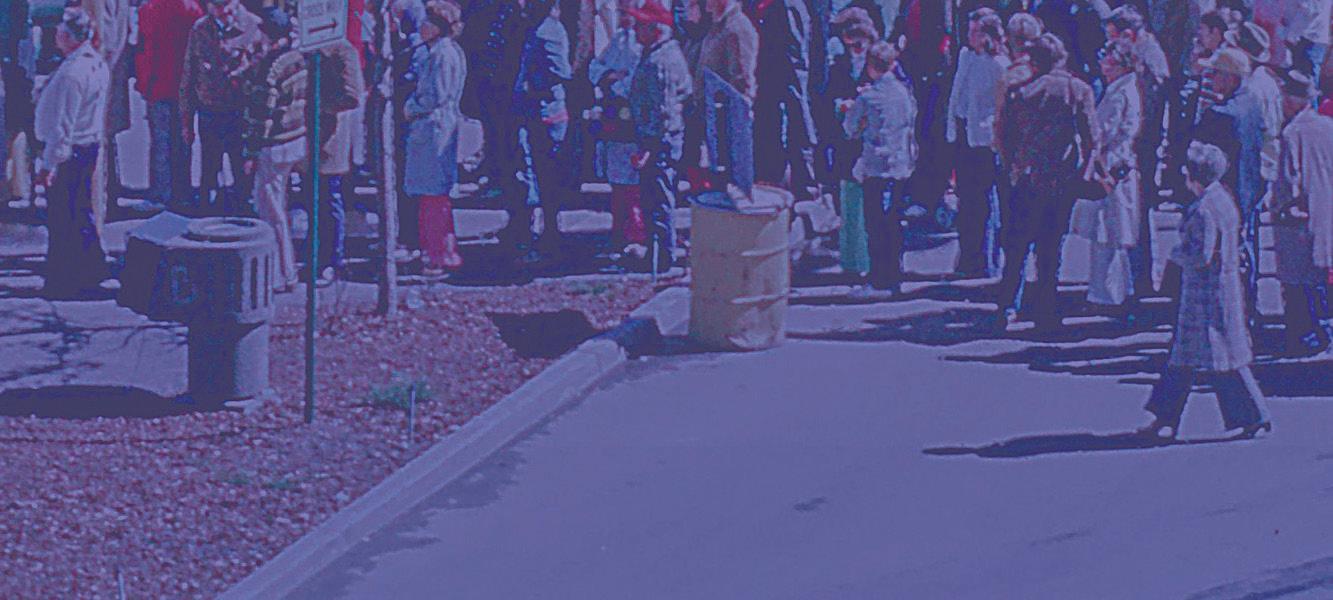
Fifty years later, the Downtown Spokane Partnership takes pride in carrying forward the enduring legacy of Expo ‘74.

versity Press, 1996); Olmsted Brothers Report, as printed in The Report of the Board of Park Commissioners, Spokane, Washington, 18911913; Dawn Bowers, Expo ’74 World’s Fair Spokane, Official Commemorative of the Spokane World Exposition 1974 (Spokane: Expo ’74 Corporation, 1974); David H. Rodgers, “The Permanent Legacy of Expo ’74,” The Pacific Northwesterner Vol. 50, No. 2, October 2006; “Expo ’74 Souvenir Issue,” The Spokesman-Review, May 5, 1974, in five sections, A through E; “Hello World,” The Spokesman-Review, May 4, 2014, special section; Gladwin Hill, “3 Nations Differ in Expo Displays,” The New York Times, June 10, 1974, p. 15; Calvin Trillin, “U.S. Journal: Spokane, Wash., Thoughts of a Fair-Trotter,” The New Yorker, August 5, 1974, p. 60-64; Joel Ream, “Local Businessmen Bask in Cash Glow of Expo Days,” The Spokesman-Review, Nov. 3, 1974, p. 1; “Complete Text of Nixon’s Address at Expo ’74’s Opening,” The Spokesman-Review, May 5, 1974, p. 19; Larry Young, “Opening Day Goes Like Clockwork,” The Spokesman-Review, May 5, 1974, p. 1; Dorothy R. Powers, “President Praises Spokane, Expo ’74,” The Spokesman-Review, May 5, 1974, p. 1. because spokane is downtown explore downtown at downtownspokane.org
T14 • Sunday • June 16, 2024 Special SecTion
HISTORY Continued from 13
SPOKESMAN-REVIEW PHOTO ARCHIVES
President Jimmy Carter, right, momentarily looks the wrong way as the flag is raised during his May 1978 visit to Spokane’s Riverfront Park. King Cole, a major influence in bringing Expo ’74 to Spokane, points the direction to president should be facing.
eXPO ’74 50TH annIVeRSaRy
Interior Secretary Cecil Andrus, left, and former Spokane Mayor David Rodgers, second from left, watch the ceremony.
Mementos touch the hearts of young, old alike
By Cynthia Reugh FOR THE SPOKESMAN-REVIEW
I first heard of John Conley while working as an intern at KHQ-TV back in the 1980s. Fondly referred to as, “that guy who bought all of the Expo stuff,” by co-workers, I later learned Conley had purchased all 280,000 pieces of leftover Expo ‘ 74 merchandise after the event ended. The items fueled a steady stream of flags, wallets, coloring books and other funky fair souvenirs in his two Spokane White Elephant stores, which have since closed. Decades later, remnants of Conley’s investment in Expo ‘ 74 history can still be found scattered across the Spokane-area landscape in homes, thrift stores and collectibles shops.
I am not alone in my adoration for these vintage items.
“I’d love to have more of the Clocktower piggy banks,” said Cruz Nicacio, who owns the Garland Treasure Trove, which is located just a few miles from what was once the bustling epicenter of Expo ‘ 74 activities. Through his work in estate sales, Nicacio has stumbled upon his fair share of Expo plates and ashtrays while digging through local garages and attics.
“It’s almost like a Cracker Jack box. There’s always a prize inside. You never know what you’re going to find until after you open it,” he said.
Once a young Expo ‘ 74 visitor himself, Nicacio was intrigued by kitsch fair memorabilia long before he began selling the items in his store.
“I remember having a little plastic bag that said Expo and all of the little places you went, they handed out little pamphlets, pencils and things like that. I was grabbing everything, because I wanted my little goody bag filled with stuff so
MERCHANDISE

that when I got home I could go through it,” Nicacio said. He recalled sharing the stories behind his fair treasures with friends at school.
“It was just like show and tell,” he said. Hyped by the 50th anniversary celebration of Expo ‘ 74, which Nicacio called, “a big deal for us,” he has assembled a display of fair mementos in one corner of his store where shoppers can mingle, reminisce or perhaps even replace a long-lost program, postcard or matchbook. His eclectic Expo inventory also includes
Expo designs are printed with Expo’s mission in mind. Expo was the first world’s fair focused on the environment. The T-shirts from All Made are created with recycled water bottles, Esparza said.
The merchandise has been popular often sold to customers sharing memories, she said.
“Oh, they’re telling us all their stories,” Esparza said.
Many long time residents talk about how Riverfront Park was an industrial area that wasn’t very inviting, she said.
“They’ve said all sorts of words,” she chuckled.
Most stories end with how important the fair was in creating the Spokane residents enjoy today, she said.
“It’s amazing to hear all the stories and just the community really come together and share in such a exciting part of our history,” Esparza said.
The story of Expo stuck with Josh Morrisey from the moment his parents first told him about the fair.
Growing up in Cheney, a visit to Riverfront Park was exciting for Morrisey.
“Ever since then, I was pretty fascinated with the idea of it,” Morrisey said. “Going to Riverfront Park as a kid and kind of thinking about like, wow, it’s crazy. Like this whole thing was a big fairground for the World’s Fair.”
a separate case filled with tokens, belt buckles and souvenir spoons.
Spokane World’s Fair merchandise is a hot commodity these days.
“Anything that’s small, that’s paper, pamphlets, books, little guides ... they’ll sell right away,” Nicacio said.
After doing a local television interview, he saw a marked uptick in demand for everything with an Expo ‘ 74 logo.
“I had a gentleman come in. He almost bought me out,” Nicacio said. With a second television
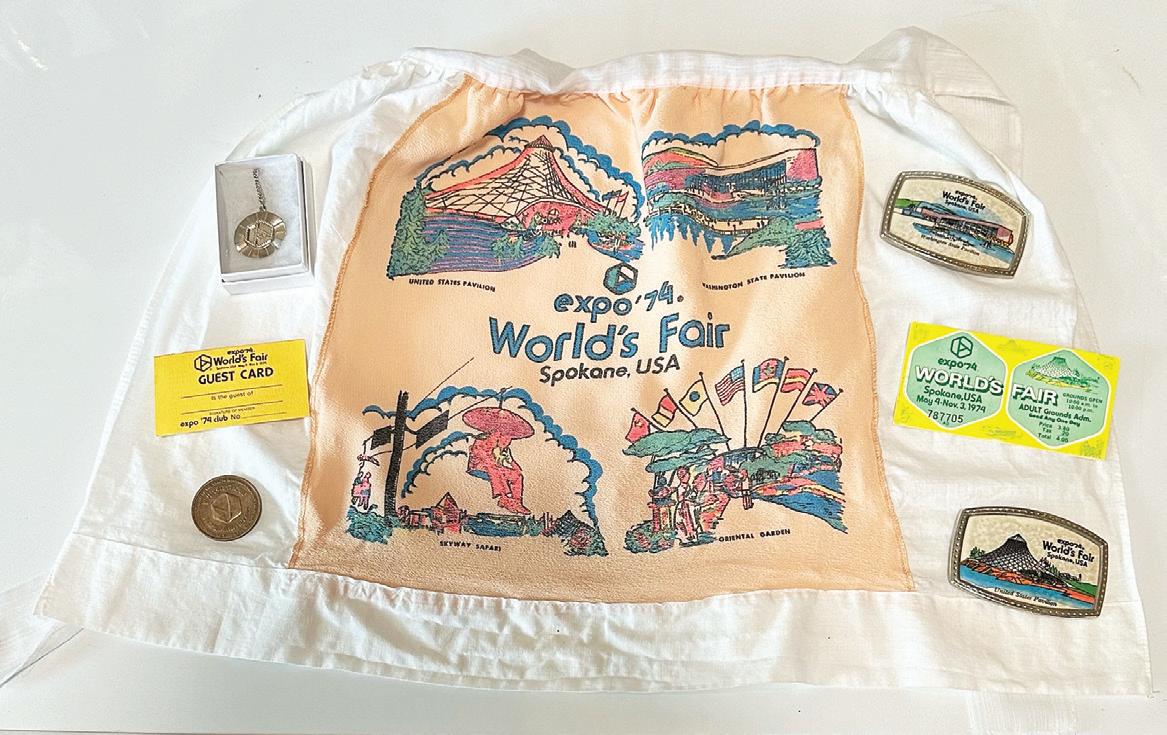
interview scheduled for the following week, Nicacio scrambled to gather more fair items from his friends in the collectibles business and later hit the Expo jackpot when a local woman sold him a box chockfull of stunning souvenirs. That haul included a rare Spokane World’s Fair apron.
“I have never, ever seen an apron. That is a unique thing,” he said.
Nicacio is thrilled to offer customers a nostalgic trip down Expo memory lane.
“It makes me feel good to see the young people ... they’re the ones that remember seeing some of this memorabilia in their grandparents’ homes, their parents’ homes and for me that just means that Expo was never forgotten,” he said.
“They just kind of soak it all in,” added Nicacio, who frequently overhears comments such as, “I remember these,” or “I can’t believe that this is still available,” from his cash register perch. “They’ve seen it, (the Expo item), they maybe didn’t know too much about it, but just seeing that, it’s a remembrance of their loved ones as well.”
Sometimes shoppers even
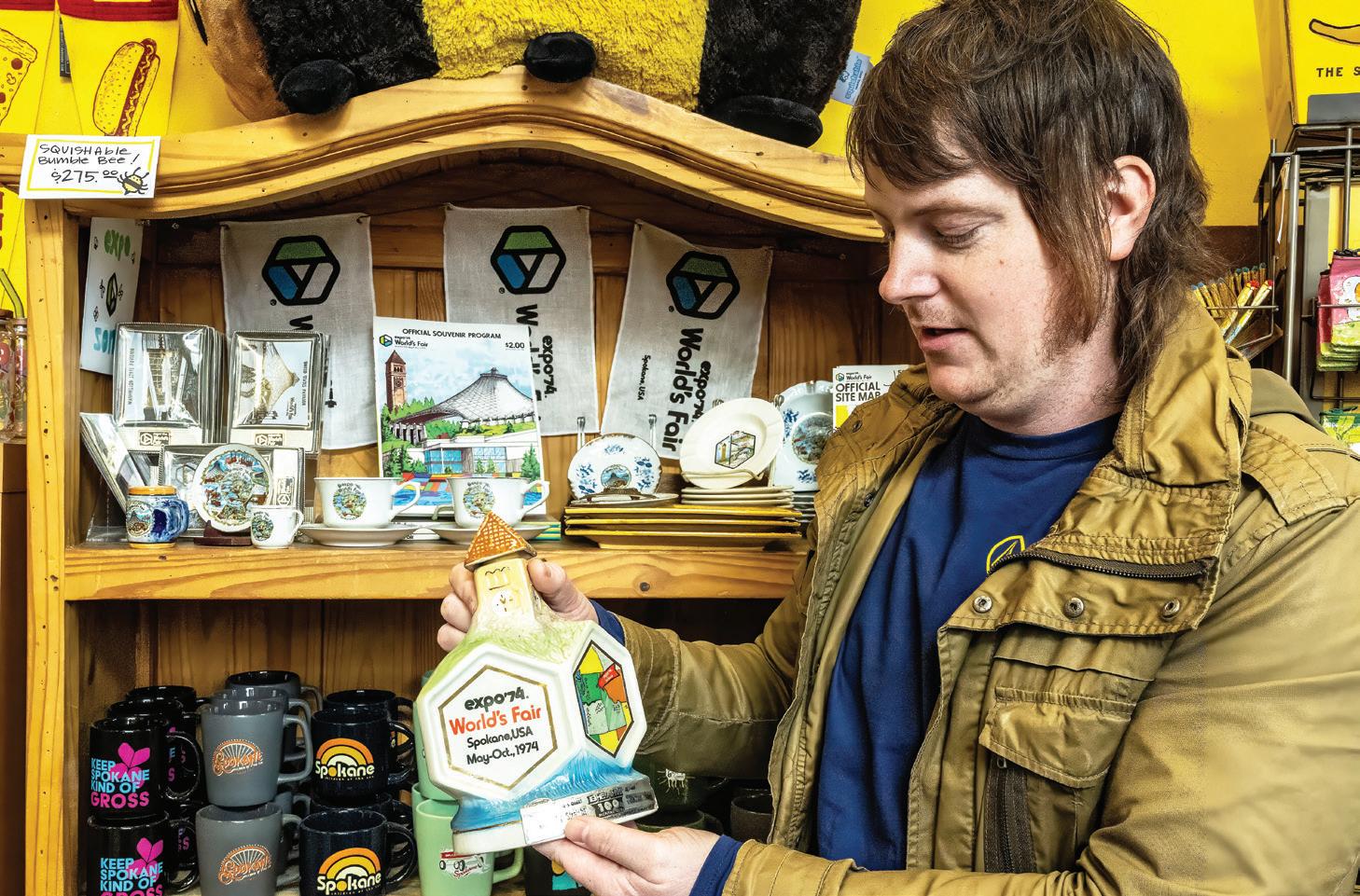
As an adult, Morrisey began working at Atticus Coffee & Gifts just a block from Riverfront Park. Not long after, he began consigning the vintage Spokane post cards, bus tokens and Expo ‘74 trinkets he found around town.
When the White Elephant closed, Morrisey bought the store’s inventory of unsold Expo ‘74 trinkets.
Now, he sells what he finds at Boo Rad-
ley’s, next door to Atticus.
He has thousands of Expo maps along with hundreds of tea cups and trays stashed in his garage to be sold, but it’s the kookier Expo merchandise Morrisey continues searching for.
The Jim Beam decanter with a spout made from the Riverfront Park Clocktower is one of Morrisey’s personal favorites, he said. He had one for sale at Boo Rad-
share their Expo ‘ 74 memories with him.
“It’s a great part of history,” he said. “I don’t have to read it. I’m listening to it, live from the actual person that lived it.”
He recalled one touching visit with a customer who had danced in the Expo ‘ 74 powwow as a young boy. The man had been invited to return and participate in the 50th anniversary powwow event.
“There you were as a youth, in a powwow dancing and now, 50 years later, you’re still with us and you’re here to relive that experience as an adult ... that is very huge,” said Nicacio, who feels honored to sell small slivers of Spokane fair history from his shop in the historic Garland District.
He applauded efforts of local leaders who have worked to preserve the U.S. Pavilion, Clocktower and other relics of Expo ‘ 74.
“In 50 years, things could be totally redeveloped,” he said. “That whole park could be all nothing but condos or big buildings or something like that, but for it to still stand ... people still get to enjoy it, every generation. It’s our landmark.”
ley’s earlier this month.
There was all sorts of odd merchandise, including inflatable seat cushions, pillow cases and foot shaped-trays and the ever elusive hot dog plate.
Owner of FinnBoy, Caputo, bought his first piece of Expo memorabilia from the White Elephant years ago.
An Expo guide magazine stuck with him because of the vintage ads, including one for Spokane’s first Taco Bell that touted the new chain as “bringing world flavors” to Spokane, Caputo recounted with a chuckle.
Much of the smaller merchandise, like maps, trays and tea cups, was mass produced, he noted.
Morrisey said a lot of niche Expo merchandise has shown up online in the last few months with anniversary celebrations under way, much of it marked up in price for the occasion.
For Morrisey, who now works for the City of Spokane Parks and Recreation Department, selling the merchandise is an ode to Spokane.
“Spokane is a scrappy little town, and we have our points of pride and I feel that Expo has always been one of those big points of pride,” he said.
Seeing people learn about Expo ‘74 “kind of blows my mind,” Morrisey said. “It’s cool to see people learning about it ... and getting excited about it.”
Emma Epperly can be reached at (509) 459-5122 or at emmae@spokesman.com.

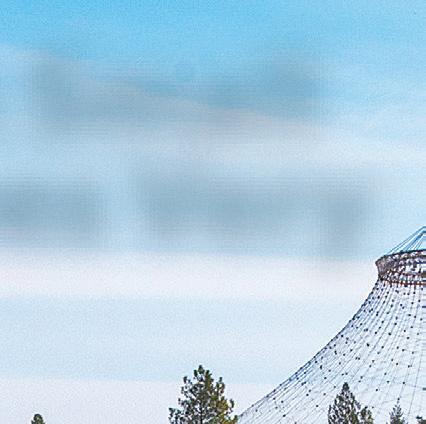

Share your own






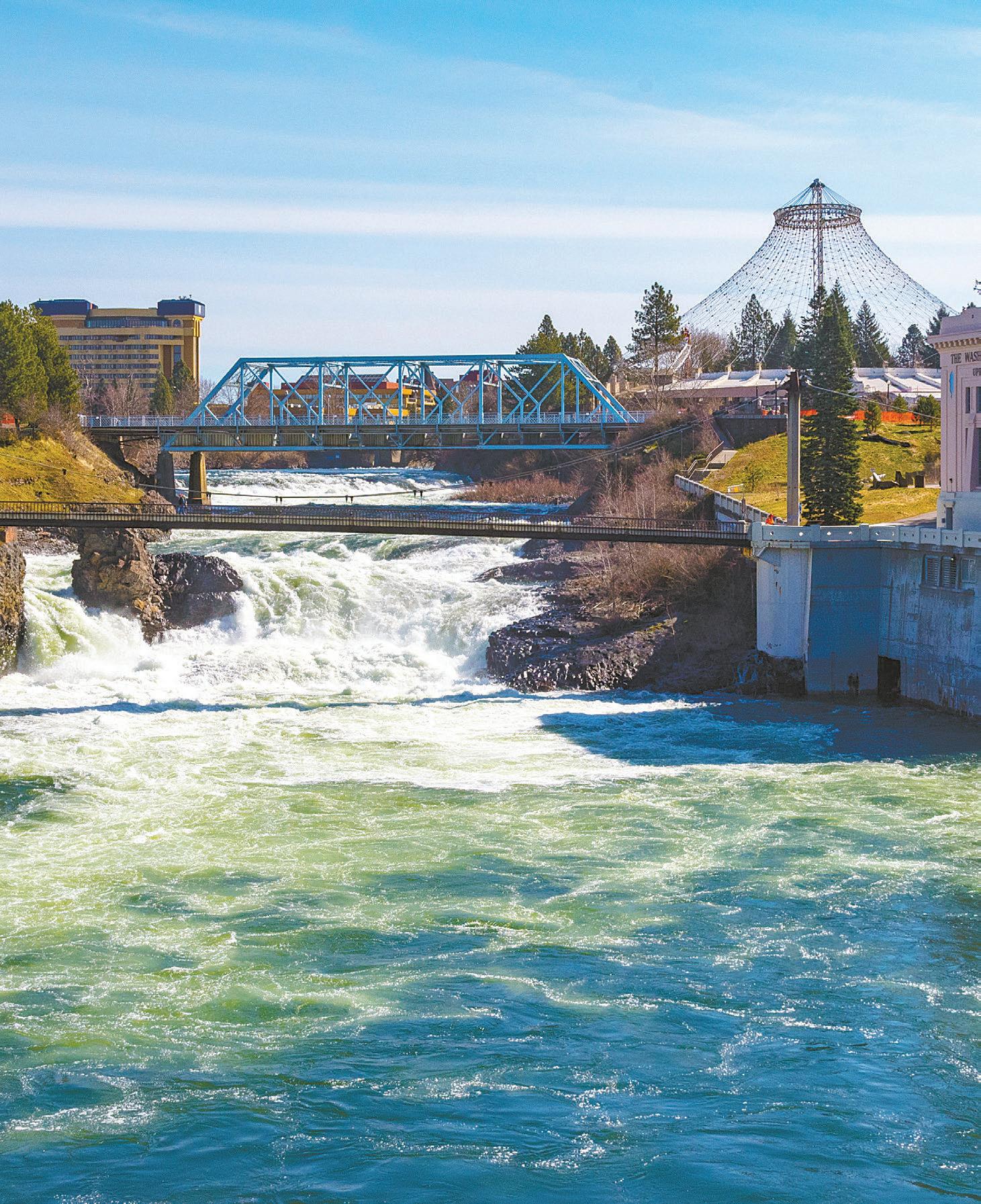

June 16, 2024 • Sunday • T15 Special SecTion I t happened EX P O ‘ 74 FI FTY YEAR S A FTER MAY 4, 2024-JANUARY 26, 2025 SEE THE EXHIBITION Johnston-Fix Foundation Jim and Ann Price
Expo ’74 Memory Share
memories
browse
memories of others now!
and
the
eXPO ’74 50TH annIVeRSaRy
Continued from 1
COLIN MULVANY/THE SPOKESMAN-REVIEW
Josh Morrisey consigns his vintage expo merchandise he finds at estate sales and online at Boo Radleys, including this Expo ’74 Jim Beam decanter.
A rare Expo ’74 apron and other fair mementos from Cruz Nicacio’s Garland Treasure Trove shop.
PHOTOS BY CYNTHIA REUGH/FOR THE SPOKESMAN-REVIEW
Cruz Nicacio stands in front of the Expo display in his Garland Treasure Trove shop. He is holding a vintage Expo ’74 section published by The Spokesman-Review.


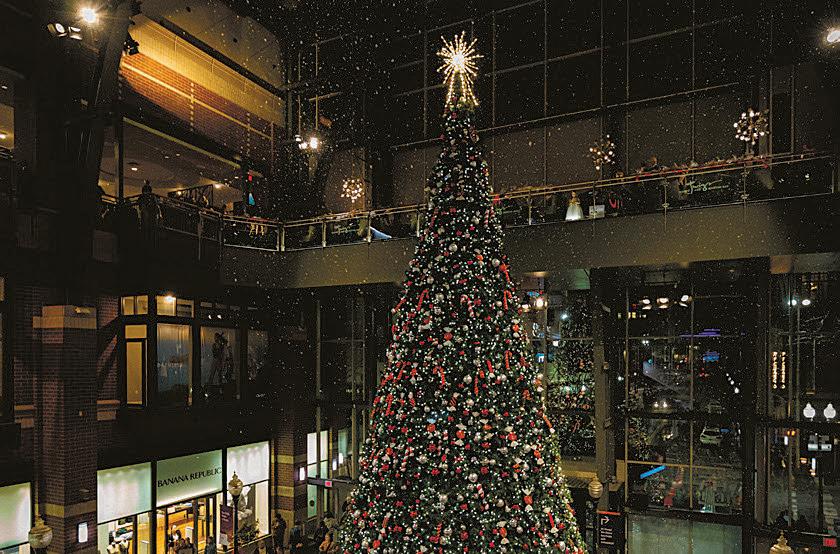
NEW MILLENIUM
Entering the new millennium, River Park Square experienced a surge of energy. The successful redevelopment brought a mix of local shops, national brands, and dining establishments, revitalizing the downtown vibe. The 80-foot glass atrium became a beloved gathering place, especially during the holiday season with its spectacular 50’ Christmas tree.
CELEBRATING 50 YEARS
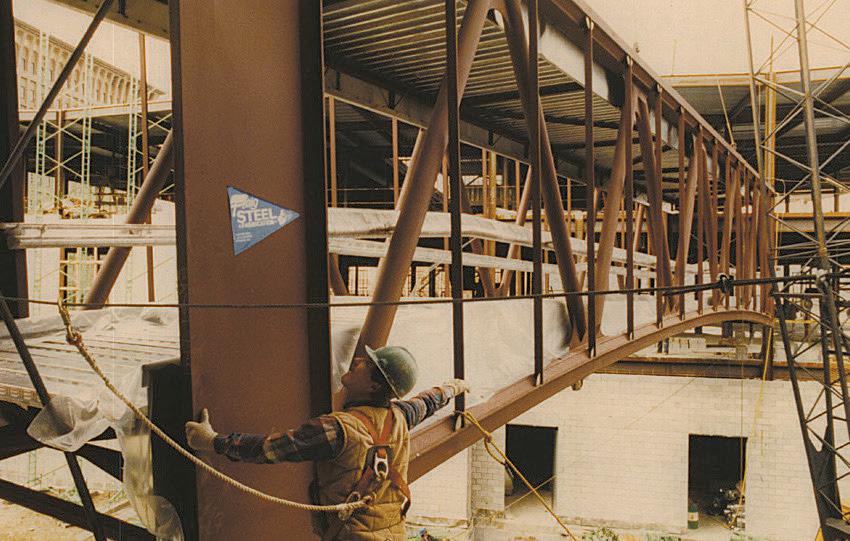
EXPANSION & CHALLENGE
The 1980s were a time of growth and challenge for River Park Square. The early part of the decade saw the expansion of the shopping center, including new skywalks connecting to major department stores, increasing its allure as a premier shopping destination.
However, the latter part witnessed economic shifts and retail challenges. Despite these hurdles, the shopping center remained a central fixture in Spokane.

COMMUNITY CONNECTION
The 2010s saw continued growth and an even deeper connection with the Spokane community. The acquisition and conversion of nearby buildings expanded the shopping center’s footprint, including notable additions like Urban Outfitters.
The shopping center not only enhanced its retail offerings but also strengthened its role as a community gathering place, hosting events and embracing new trends in consumer experience. River Park Square solidified its position as a central landmark in Spokane, fostering a vibrant urban life that attracted both locals and visitors alike.

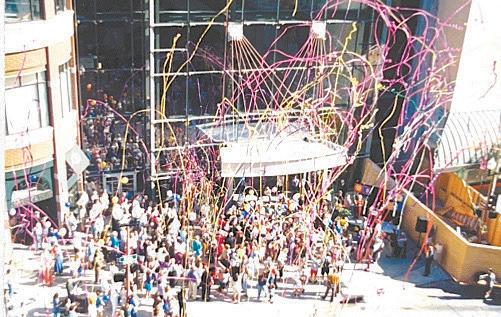
REVITALIZATION & REBIRTH
The 1990s heralded a major revitalization for River Park Square, sparked by the renewal of Nordstrom’s lease, JCPenney’s relocation in 1991 and the desire to rejuvenate Downtown Spokane.
On February 12, 1998, Nordstrom resigned its lease, this time for a new location at River Park Square. Construction on Nordstrom and the shopping center as a whole, began in April 1998, culminating in the grand reopening on August 20, 1999, to a crowd of thousands.
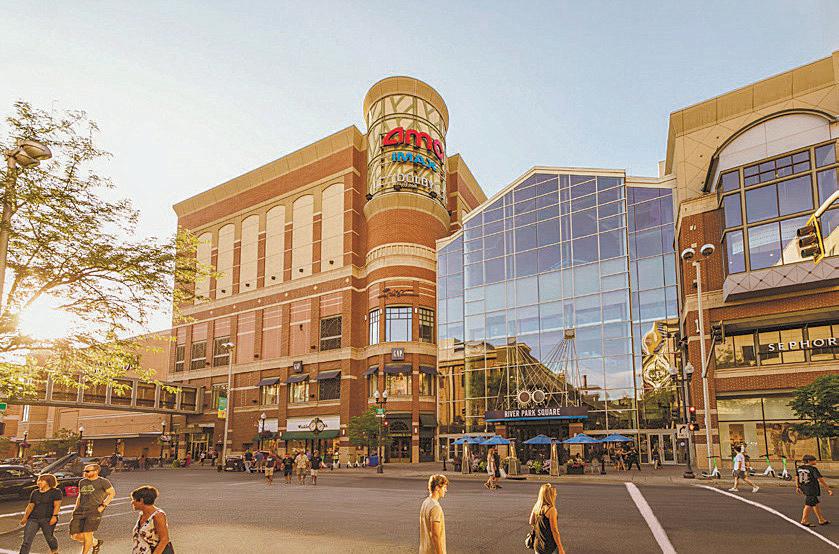
ADAPT & THRIVE
The 2020s brought unprecedented challenges with the pandemic, yet River Park Square adapted and continued to thrive. The shopping center navigated the complexities of health guidelines while keeping community spirit alive.
As of 2024, the shopping center features a diverse range of tenants, including Nordstrom as the anchor store, AMC 20 Theatres with IMAX, and new local businesses like Indigenous Eats, From Here, and The Small Biz Shoppe. Other prominent tenants include Apple, Free People, Anthropologie, and the LEGO Store, showcasing its commitment to both quality and local entrepreneurship.













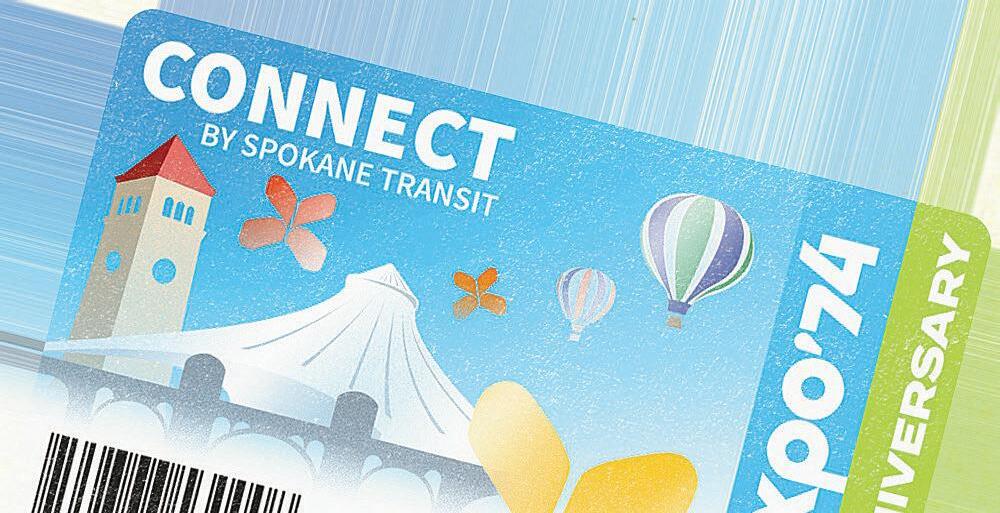









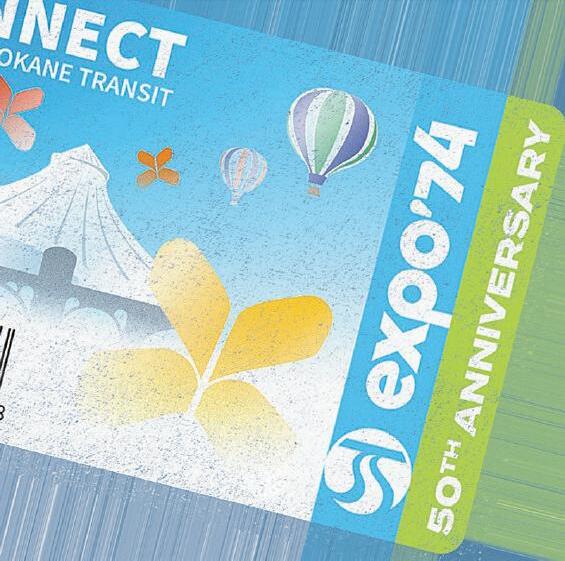








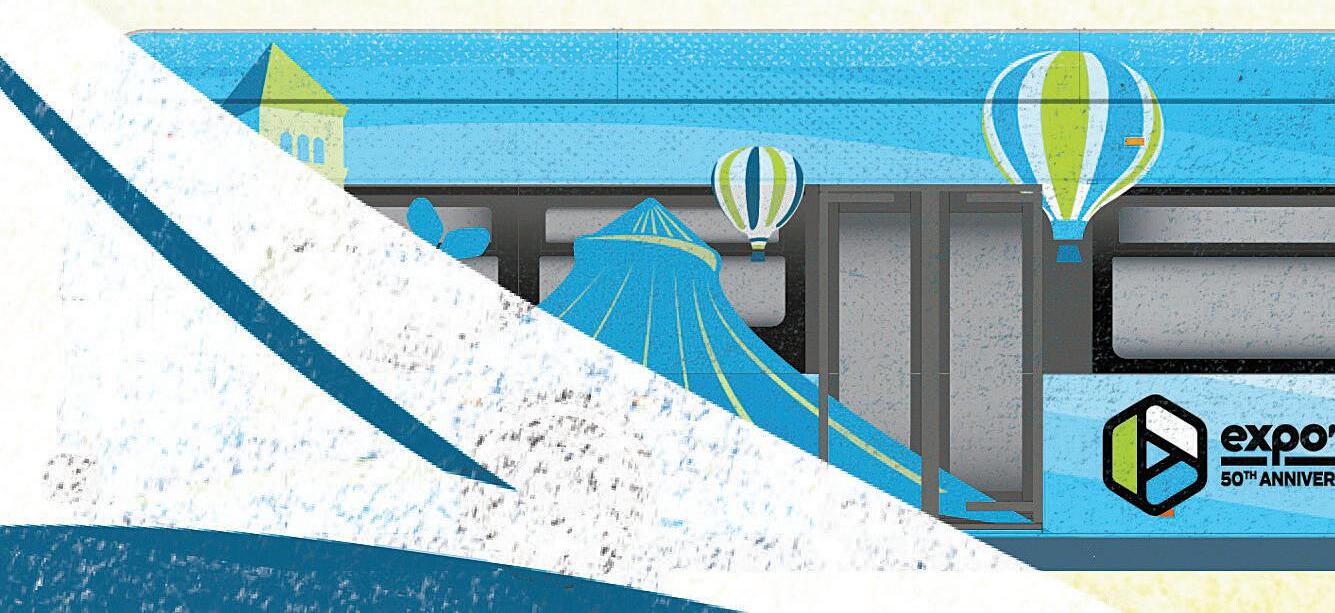






T16 • Sunday • June 16, 2024 Special SecTion Learn more at spokanetransit.com/expo74
Visit River Park Square
July
to hear more about these past five decades
key figures in its history.
audio exhibit is available on Level One. ‘84 ‘00 ‘15
THE FOUNDATION ERA In the 1970s,
Park Square
opened
doors, setting the foundation just days before
hosted EXPO ’74. The new shopping center was a beacon of modernity, reflecting the optimism and growth spurred by the international exposition. 1974 MAY 1 Image courtesy of The Spokesman-Review Image courtesy of The Spokesman-Review
through
4
from
An
‘24 ‘99
River
and Nordstrom
their
Spokane




 By Emma Epperly THE SPOKESMAN-REVIEW
By Emma Epperly THE SPOKESMAN-REVIEW










 By Charles Apple THE SPOKESMAN-REVIEW
By Charles Apple THE SPOKESMAN-REVIEW









































































































































































































































































